

Currency in Iceland: All You Need to Know

When planning a trip to Iceland, understanding the local currency and how to manage your finances during your stay is crucial. The Icelandic króna (ISK), denoted as “kr”, serves as the backbone of financial transactions in this stunning country. With its unique value and usage, navigating Iceland’s monetary system can enhance your travel experience, ensuring smooth transactions and financial savvy.

ISK to USD/EUR calculator
When planning a trip to Iceland, understanding the value of your money is crucial. Our “Iceland money to USD” calculator is designed to provide you with the most current exchange rate from the Icelandic króna (ISK) to the United States dollar (USD), ensuring you have the accurate information needed for all your financial decisions.
ISK converter
The icelandic króna (isk): a primer.
The official currency of Iceland, the Icelandic króna, has a rich history and plays a pivotal role in the country's economy. Available in both coins and banknotes, the króna comes in denominations that cater to all levels of transactions, from the smallest purchase at a local kiosk to significant expenses at top-tier Icelandic establishments.
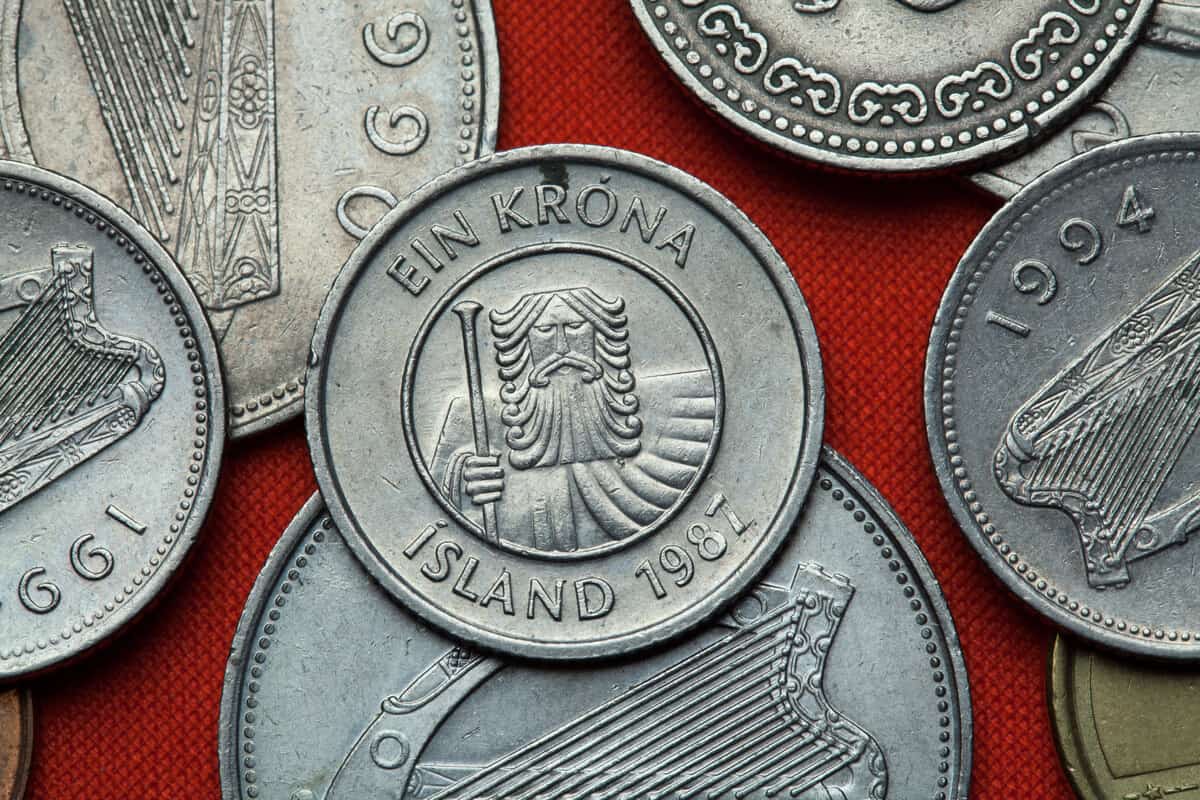
What Does Iceland Money Look Like?
Banknotes and coins.
- Banknotes : The Icelandic monetary system includes banknotes of 500, 1000, 2000, 5000, and 10000 ISK, catering to larger transactions.
- Coins : For smaller transactions, coins of 1, 5, 10, 50, and 100 kr are in circulation, ensuring that every purchase, no matter how small, can be precisely accounted for.
Cash or card? Navigating payments in Iceland
Iceland is a pioneer in the digital banking and payments sphere, with credit cards being the preferred method of payment across the country. From the most remote restaurants to the most popular tourist attractions, card payments are accepted universally, offering convenience and security to travelers.
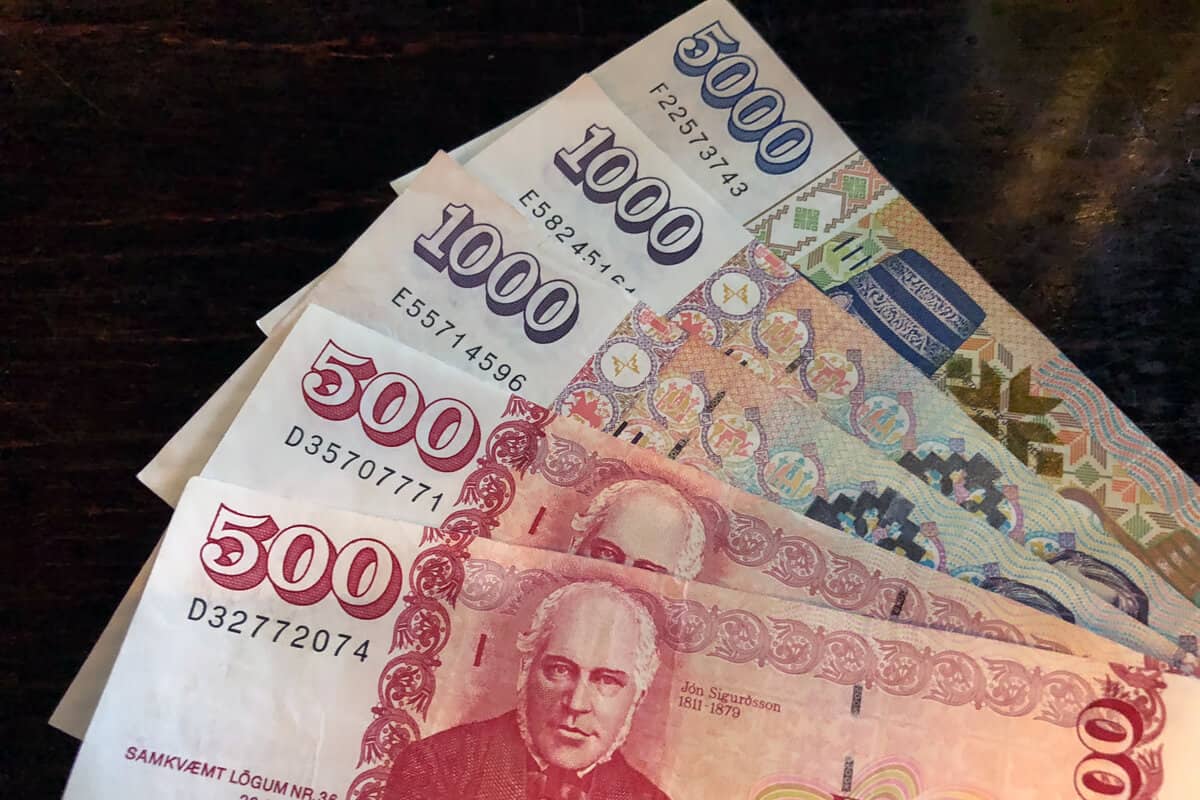
The exception: Buses in Reykjavik
While credit cards reign supreme in Iceland, there's an exception to the rule: bus transportation in Reykjavik. To ride the bus, you'll need exact change or a pre-purchased ticket, which can be obtained via the official Icelandic public transport application or at select supermarkets.
Exchanging money: Tips and Tricks
Given the predominance of card transactions, finding currency exchange services in Iceland, especially outside of major cities like Reykjavik and Akureyri, can be challenging. For those who prefer cash:
- ATMs : The most efficient way to obtain Icelandic króna is through ATMs, which are widely available across the country. Always inform your bank of your travel plans to avoid any transaction issues.
- Exchange Rates : Understanding the current exchange rate (100 kr = US$0.70) is vital for budgeting your trip effectively.
Do I Need Iceland Money During My Trip?
While it is always nice to have some cash on hand when you travel, I don’t know that I would say it’s 100% necessary here. Even Reykjavik’s iconic Bæjarins Beztu Pylsur hot dog stand accepts credit cards. But if the idea of a cashless existence while traveling to Iceland makes you uncomfortable, then, by all means, keep some krona currency in your wallet.
There are a few ways to go about this. What I recommend (and what I do when I travel abroad) is to simply take some money out of an ATM once I arrive. This is based on the assumption that I’m not withdrawing huge wads of cash or that withdrawal fees are low or non-existent. Everything else I put on my card because there are no foreign transaction fees.
You can also get some Icelandic currency from your bank back home before your trip. Just make sure they have ample time to order it and receive it. Most banks don’t keep foreign currency in their vaults, so they’ll need to special order it.
I would advise you not to get any currency in Iceland from an exchange bureau. They make their money by charging high commissions and giving really bad rates. Banks and ATMs are your best best for sure.
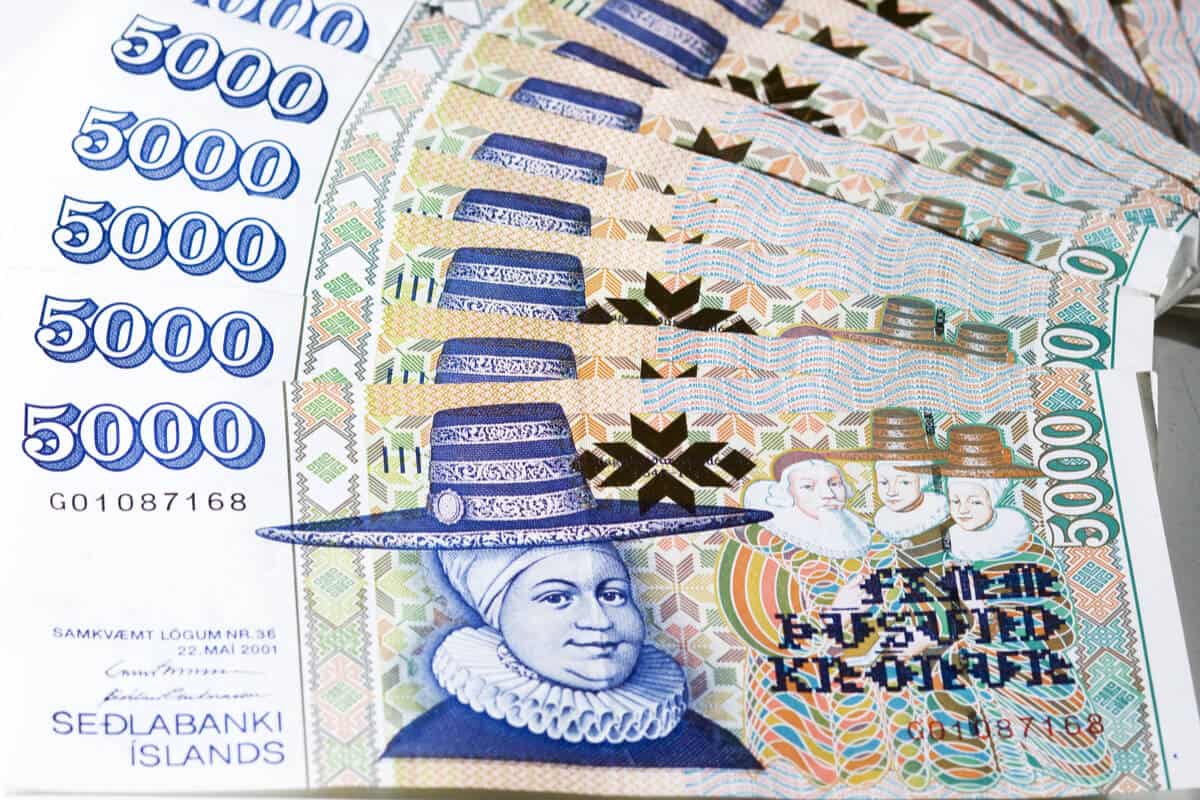
Frequently Asked Questions
How much is $1 us in iceland.
$1 US is approximately 143 Icelandic króna, though exchange rates fluctuate.
What is the best currency to use in Iceland?
The Icelandic króna is the only currency universally accepted across Iceland, making it the best and often only option for transactions.
Does Iceland accept euros?
While the euro may be accepted in some tourist-oriented establishments, it's not widely accepted. Relying on the Icelandic króna or credit cards is advisable.
Should I take any cash to Iceland?
Carrying a small amount of cash is recommended for minor expenses where cards may not be accepted, such as buses in Reykjavik. However, credit cards are your go-to for the majority of transactions.
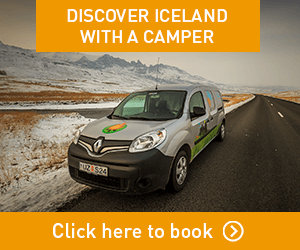
Thanks for your information. I’m traveling to Iceland this month of May. Are the exchange fees too high at the airport? Ex:if I exchange a $100 US to Krona, I would be charged $7? Thanks for responding.
Leave a Comment Cancel reply
Your email address will not be published. Required fields are marked *
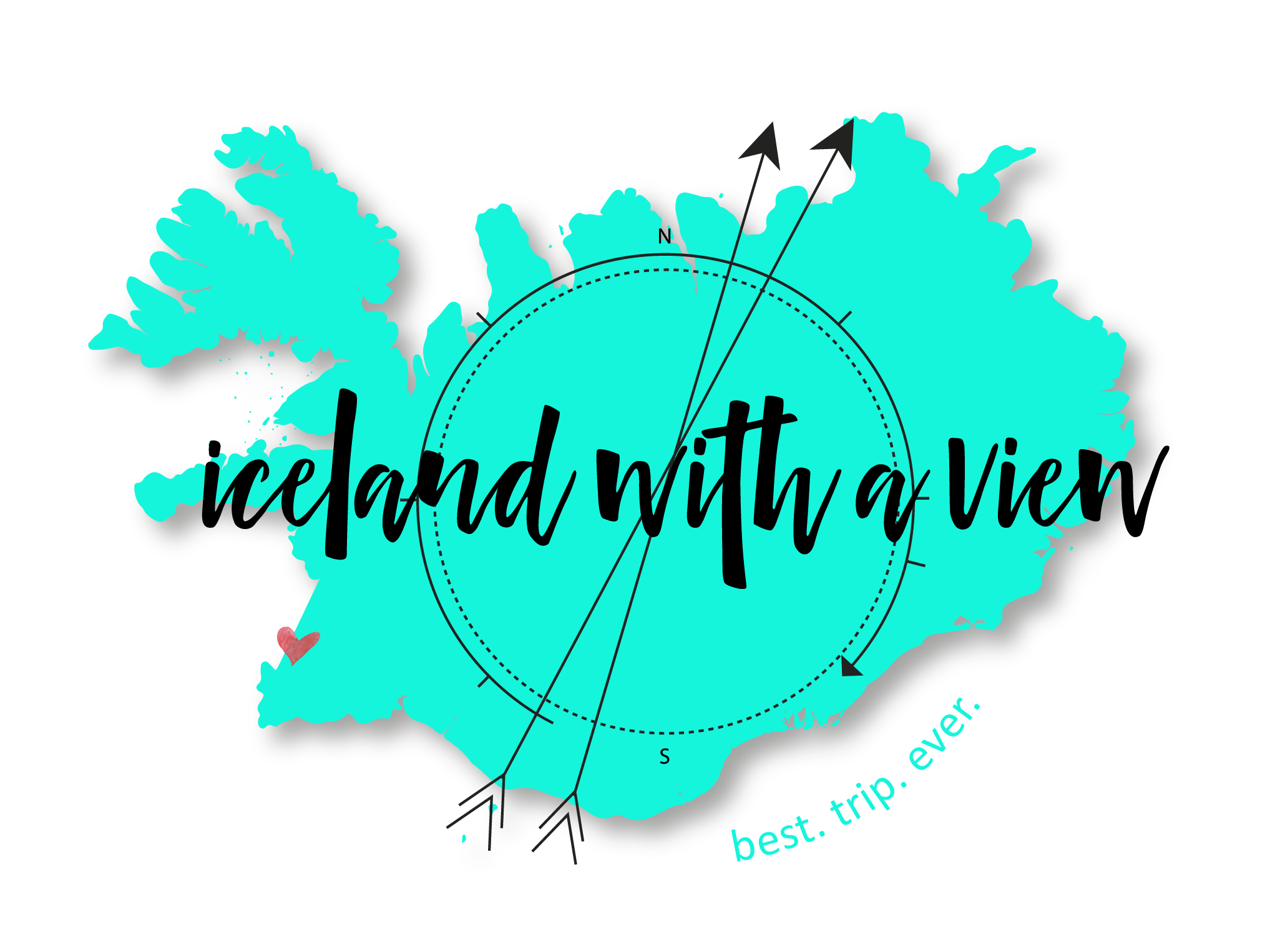
Mastering Currency in Iceland: Your Essential Guide on How to Pay for Things
Some of the most common questions I get asked are related to money and currency in Iceland.
Have you ever had nightmares of being stranded somewhere in a foreign country without any money, or without being able to pay for things because you can’t access your money?
That’s one dream you don’t want to make a reality!
Money matters and travel can be stressful, but I’m here to put your mind at ease.
Thankfully, paying for things in Iceland is SUPER simple.
I’ll take you through how to pay for things when you’re here, what kind of cards work best, if you need local currency in Iceland and how much, and what the actual transaction looks like when you pay for things like groceries, fuel, etc.
Let’s get into it!
Table of Contents:
- What Is the Currency in Iceland
- Where to Exchange Icelandic Króna
- Paying With Cash
- Paying With Debit and Credit Card
- Using The Chip and Pin Method
- Contactless Payments in Iceland
Paying for Fuel or Groceries
- What Credit Cards Are Accepted in Iceland
What Is the Currency in Iceland?
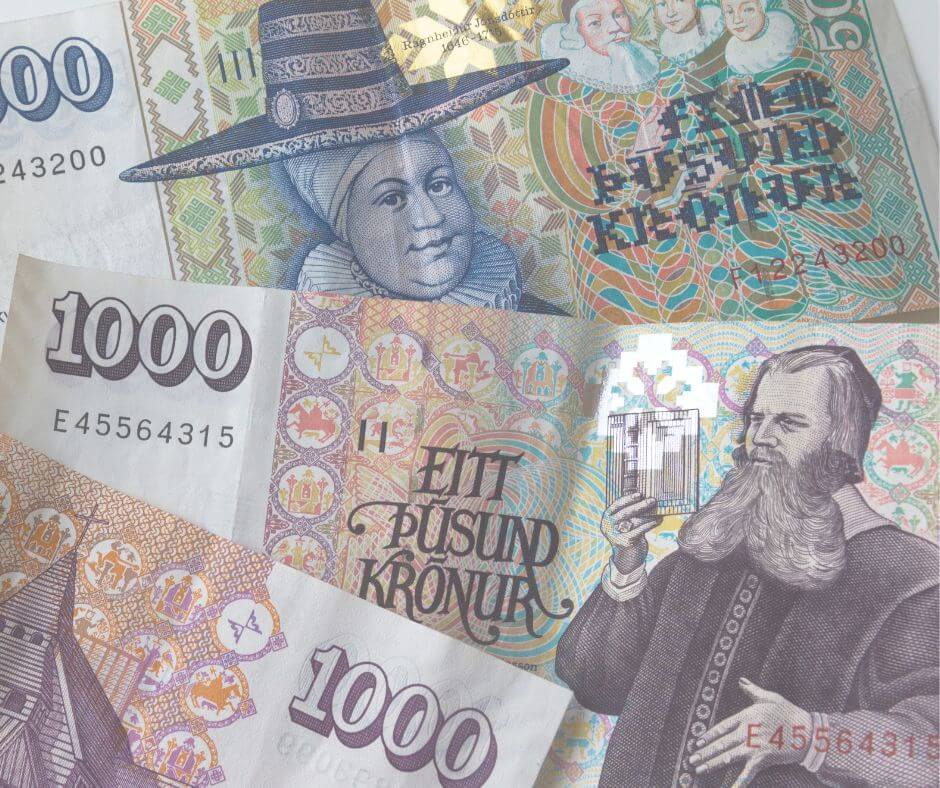
The official currency in Iceland is the Icelandic Króna.
Before this, the Danish Krone was used but since Iceland gained independence from Denmark, the new currency was introduced.
Cash is still widely accepted around the country and I suggest having some on hand while you’re traveling, but it’s not essential – more about that in a moment.
Iceland’s currency to the USD is currently at 136 ISK to a dollar.
The Icelandic Króna exchange rate to the Euro is 148 ISK and 173 ISK to the Pound Sterling.
Where to Exchange Icelandic Króna?
As I mentioned before, cash is not necessary, but here are a few things to consider if you plan on paying with physical money in Iceland.
If you want to exchange your currency in Iceland, you can easily do this at the bank at Keflavík airport when you arrive or when you get to Reykjavík.
Just be aware of any fees associated with ATM withdrawals before you leave home.
If you’re wondering how much cash to bring to Iceland, I suggest taking out about 10,000 ISK.
You can also exchange currency in Iceland if you plan on visiting another city.
Traveling to Iceland for the first time? Do yourself a favor and check out the post below:
➡️ READ : Iceland for first-timers | 5 tips you need to know!
Does Iceland Accept Other Currencies?
You might be wondering…does Iceland use Euros or U.S. dollars? Because the official currency is the Icelandic Krona, euros or dollars are not widely used in Iceland. However, you will find that some restaurants, bars, and attractions geared towards tourists may accept US and Canadian dollars, as well as Euros – but I wouldn’t count on it.
Just know, you’ll always get the best rate by paying in the local currency!
How to Pay for Things in Iceland
There are a few different ways that you can pay for things in Iceland. The actual transaction can look different depending on what method you use.
Let’s take a look at what they are so you’re not caught off guard.
Let me answer the burning question: Do you need to carry local currency in Iceland?
Carrying cash will come in handy for various things like if you’re doing laundry, or if you’re camping and you want to use the showers at the campsite.
It’s also nice to have if you booked a tour, loved it, and wanted to tip your tour guides.
But, carrying money in Iceland is 100% not required.
Gratuity : Many people worry about the tipping situation at restaurants, but a gratuity is already built into the cost of the meal, so it isn’t necessary. But, I suppose a little something extra is always welcome if you feel like rounding up your bill! However, tips are never expected in Iceland.
While carrying local currency in Iceland is not essential, I do recommend having a little bit of cash on hand while you travel.
I’m sure you’ve noticed that a trip to Iceland can be pretty expensive. I’ve got some useful tips on how you can save money, take a look 👇
➡️ READ : 19 Easy Ways to Save Money on Your Trip to Iceland
Debit and Credit Card
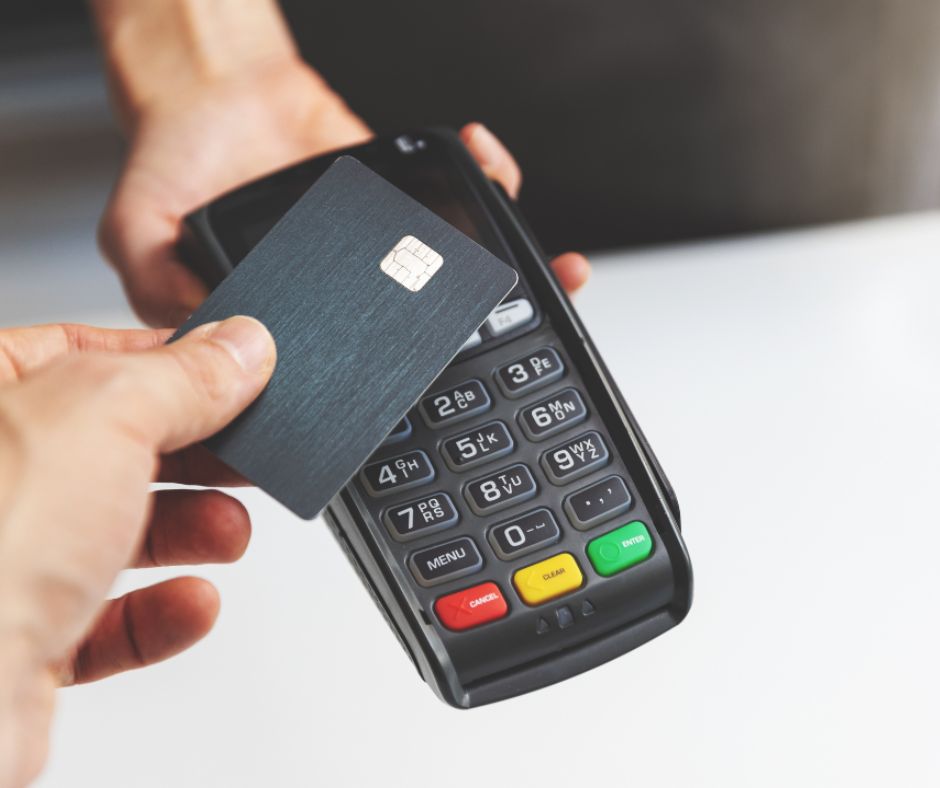
The preferred method of payment in Iceland is by debit or credit card.
That being said, one thing I’ve found fascinating is that using a credit card in Iceland is not as common as a debit card.
So, what’s the difference between the two?
Well, when you use your debit card, the money comes directly out of your bank account.
A credit card, on the other hand, has a revolving line of credit so you’ll essentially spend money first and then pay for it later.
It’s not common for people to have multiple credit cards, unlike in the U.S.
So, when Icelanders use a card to pay, it’s usually a debit card tied to their bank account where the funds come directly out when the transaction is made.
We know it’s expensive to travel to Iceland, but how much does it cost to live here? No need to wonder, tell you all about it…👇
➡️ READ : How Much is the Cost of Living in Iceland? Groceries, Housing, Transport and More
Chip and Pin Method
What does a typical transaction look like?
When you’re using your credit or debit card, all you have to do is swipe or if there’s a chip on the card, insert it into the chip and pin reader.
The machines in Iceland almost always have a chip reader so that’s the most common way to pay.
Insert the chip, type in the PIN, and then pay for the transaction.
If you don’t have the pin, then of course you’ll swipe your credit card and that’s how the transaction is completed.
If your card doesn’t have a chip, then you can simply sign to complete the purchase.
Pro tip : Sometimes when paying with a card, there’ll be a pop-up asking you if you want to pay in your currency or the local currency.
It’s always best to pay in the local currency because that will have lower conversion rates and fees associated with it.
Contactless
In Iceland, using a credit card with no pin is also possible with the contactless method.
It’s also known as tap-and-go and it’s becoming increasingly common here.
This happens right at the kiosk and there’s a wireless sign built-in.
If you’ve got a contactless card, you’ll know because it’ll have a little Wi-Fi sign on it and if you have your cards connected to your Apple Watch or iPhone, then you can just tap and be on your merry way!
This includes things like Apple Pay, and Google Pay, as well as linking your credit or debit cards to your wallet on your phone.
I’m not a fan of carrying a physical wallet. Since I store everything on my phone, this is super convenient and easy and by far my favorite method of payment.
When I’m out sightseeing or hiking and arrive somewhere that I need to pay for something, the less I have to carry, the happier I am!
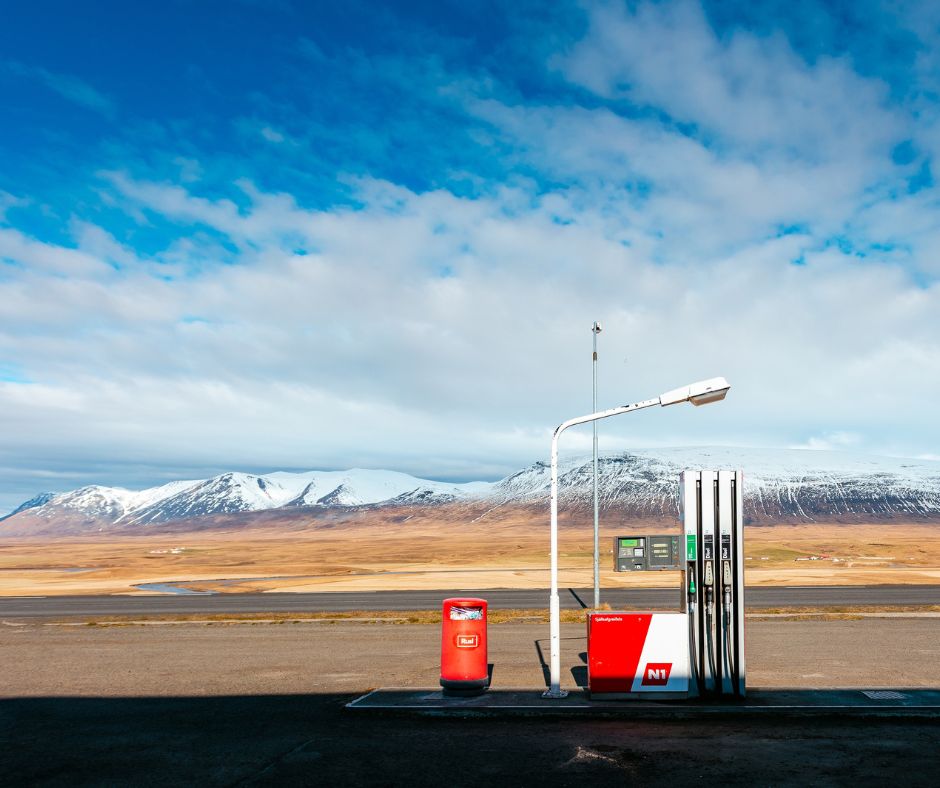
If I’m using my credit card to pay for groceries or gas, 50% of the time it’ll push my transaction through, and the rest of the time I’ll have to sign for that purchase.
On the other hand, if I were to use my Icelandic debit card at the pump or the grocery store, I would swipe the card, and I would immediately be prompted to enter my PIN.
It’s so easy to pay with a plastic card whether or not you have a debit or a credit card.
I still have a U.S. bank account and a U.S. credit card, and have the same in Iceland. Therefore, I’m able to be quite flexible when I’m paying for things.
But, as a tourist, it’s a good idea to have a couple of payment options handy.
You don’t want to find yourself in a tricky situation, like being at a gas pump in the middle of the countryside without a way to pay because they only accept one payment method you don’t have.
This is not a story you want to be telling when you get home!
What Credit Cards Are Accepted in Iceland?
I remember when I moved to Iceland, I wanted to apply for an Icelandair credit card so that we could gather points when traveling.
Let me tell you, it wasn’t easy to locate and apply for this credit card!
Some people have told me that Visa and MasterCard are the most widely accepted and Discover and American Express are less accepted, but I’m not an expert on this and can’t confirm that.
It’s just something to keep in mind when planning your travels.
By the way, if you’re looking for a credit card with NO foreign transaction fees, 5x on travel purchases, and a low annual fee this is my preferred travel credit card .
We build up a lot of points for travel and I love it!
Looking for an all-in-one resource to help you plan your trip to Iceland?
One with scenic locations, hidden gems and practical details like toilets, pharmacies and grocery stores – all plotted on a digital map with over 500 locations?
Then you need to check out my 👉 Iceland Guidebooks + Maps .
Rest assured that you’ll have the best information at your fingertips to plan the best trip ever!
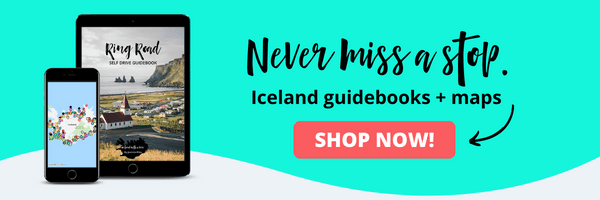
Pin it for later 👇🏼

Similar Posts
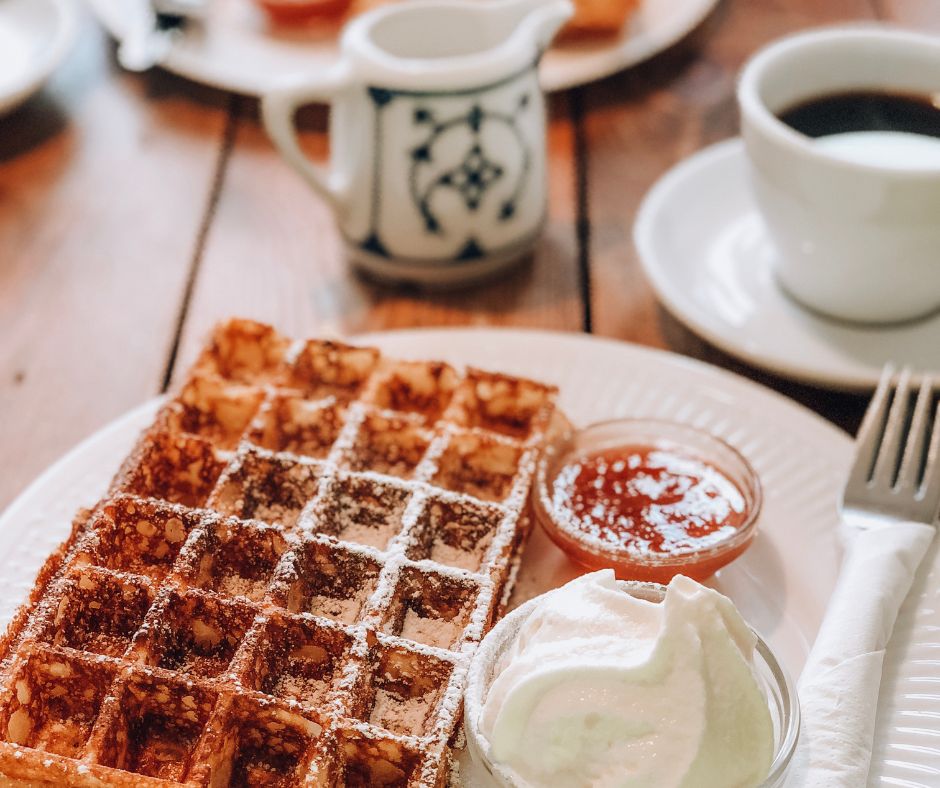
Breakfast in Iceland: Top Eateries, Expert Tips, Breakfast Culture & More
If you’ve ever wondered what breakfast in Iceland is like, it’s quite different than what many of us are used to! Don’t expect a wide selection of breakfast diners with an elaborate spread of the typical American breakfast when you’re…
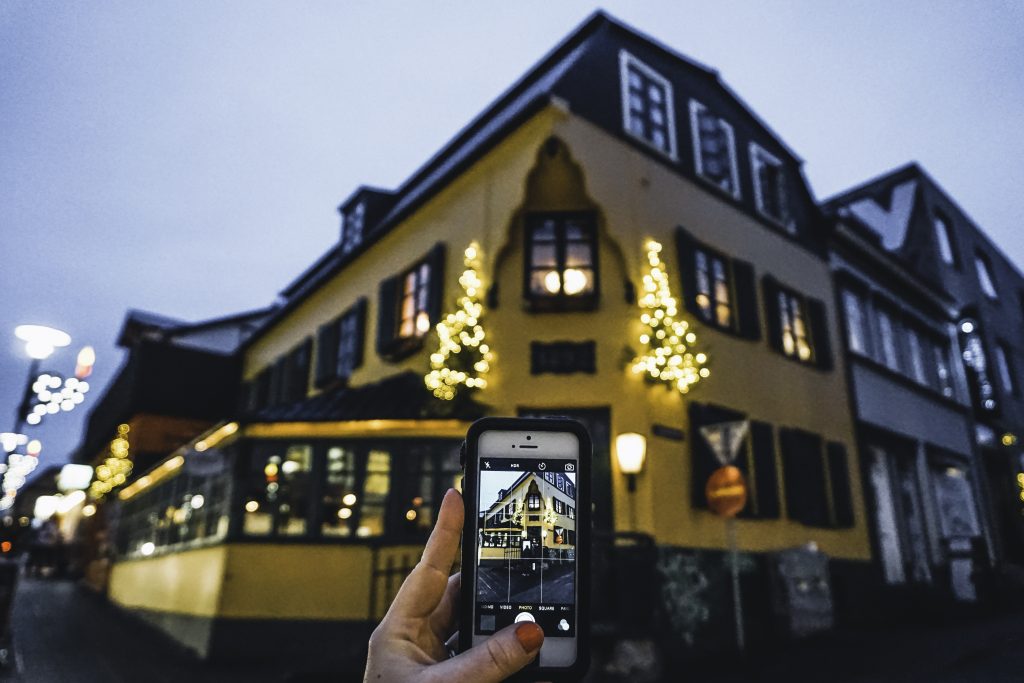
10 Instagram Spots in Reykjavik
Oh the adorable city of Reykjavik! Reykjavik is the northernmost capital of the world and if you’re planning a trip to Iceland, chances are you’ll be spending at least a day here. Between the colorful wooden buildings, lively art scene`…
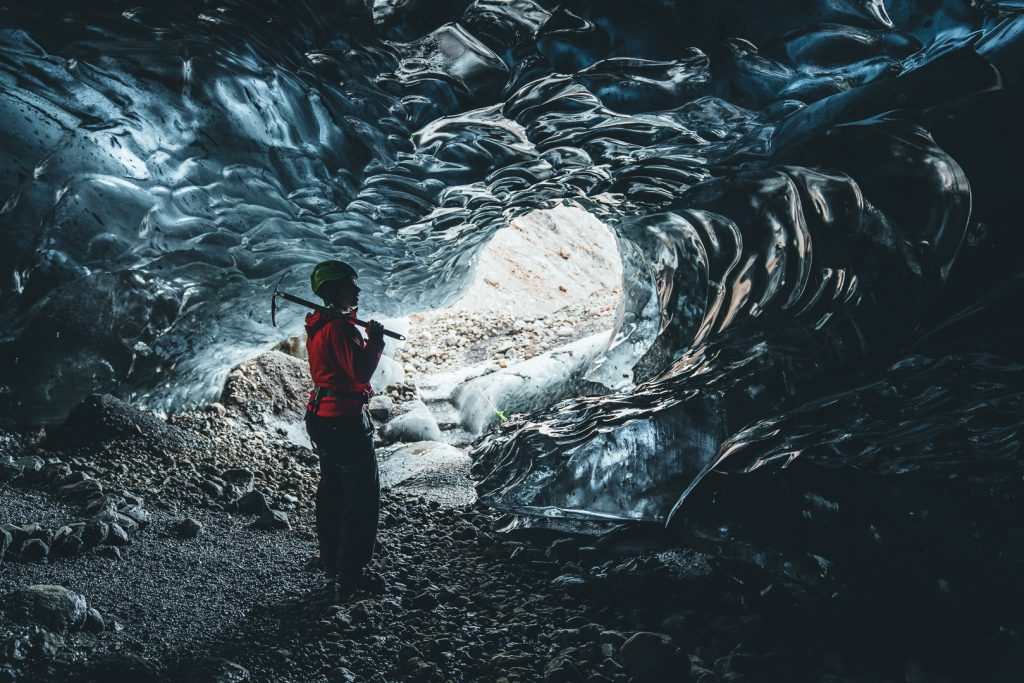
When Is the Best Time to Visit Ice Caves in Iceland?
Iceland claims bragging rites to glaciers, caves, and crevasses. The best time to visit ice caves in Iceland is from November until March, even into early April. The ice caves in Iceland are incredible and as far as I’m concerned…
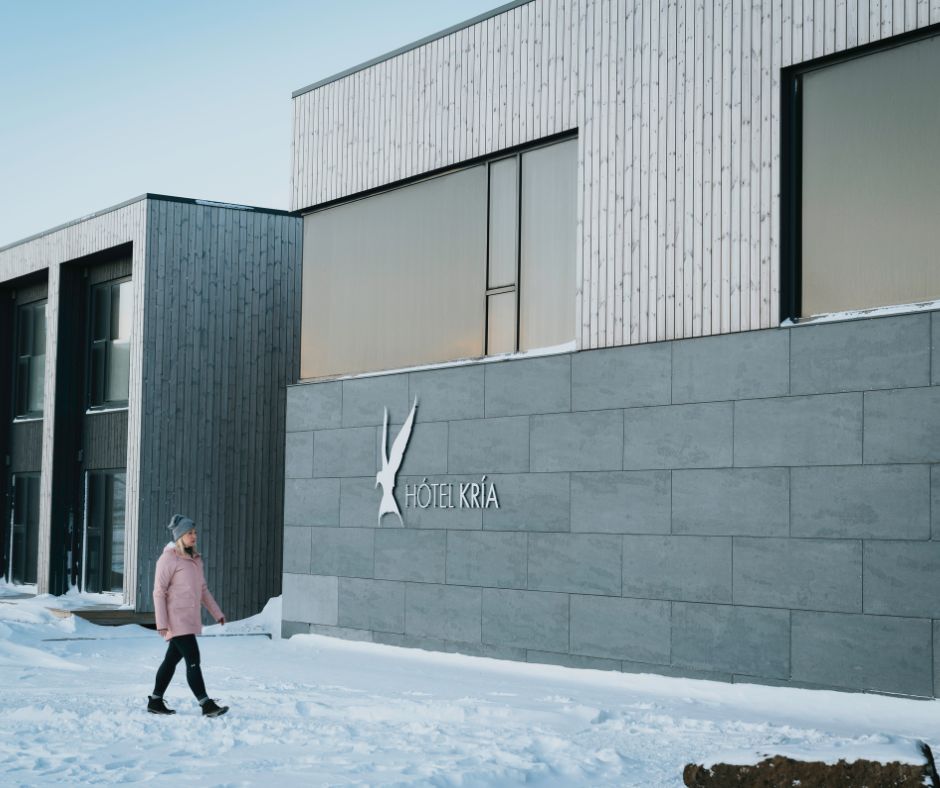
Iceland Accommodation: How to Effortlessly Search for and Book the Perfect Stay
There are a few things you absolutely need to plan ahead for: your taxes, packing that hospital bag for when the baby arrives, and booking your Iceland accommodation. When booking your trip to Iceland, I recommend securing a place to…
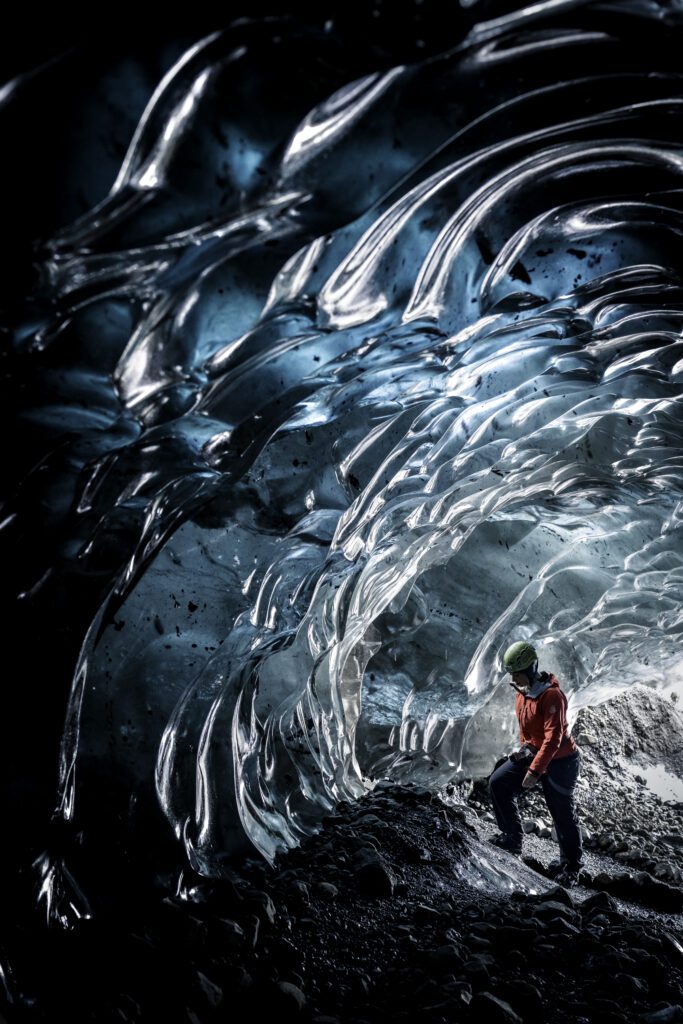
The Magic Of Iceland In November: Adventures, Festivals, and Tips & More
Exploring Iceland in November is like watching a film in your own private movie theater. You can choose the best seats, there’s no waiting in line for snacks, and the whole show is just for you! It’s quieter and colder…
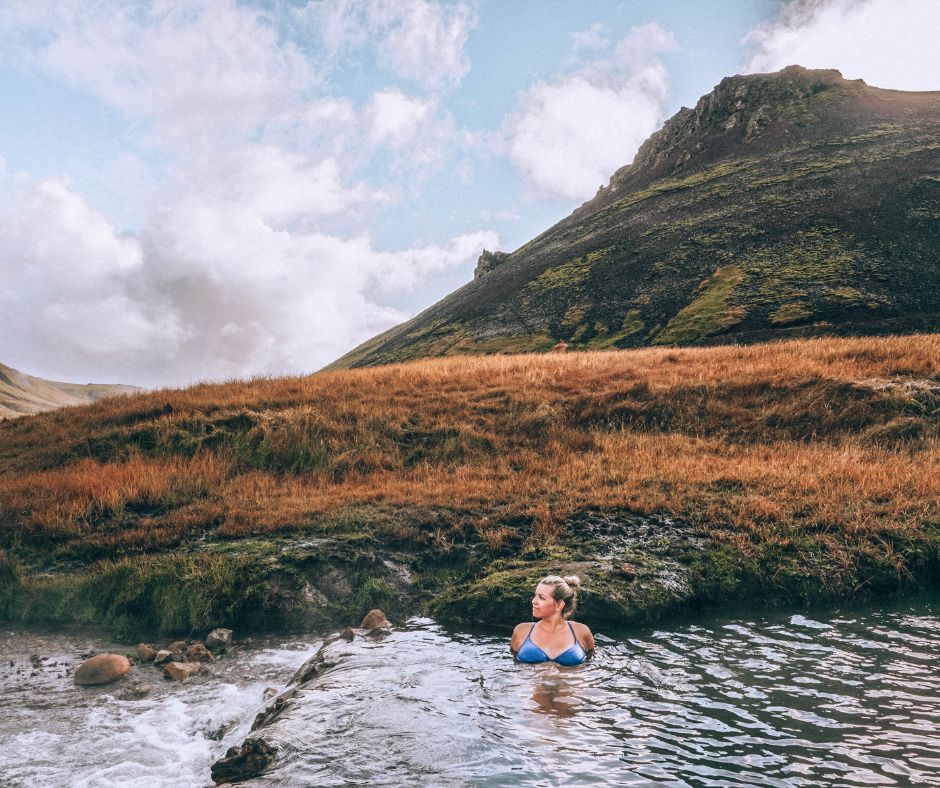
Reykjadalur Hot Springs: The Perfect Day Hike & Hot Spring Experience!
If you’ve never been to Reykjadalur Hot Springs then picture this: Mountains ahead of you, the ocean at your back, streams to the side, and a dip in a hot spring with breathtaking views to top it off. Plus a…
Privacy Overview

- General information
- Plan your Trip
Currency in Iceland
The official currency of Iceland is the Icelandic króna (ISK) . Discover where to exchange money, what the best rates are and more with our handy guide.
Notes & coins in Iceland
The official currency of Iceland is the Icelandic króna (ISK) , often seen as " kr ". There are banknotes to the value of 500, 1000, 2000, 5000 and 10000 ISK, and coins worth 1, 5, 10, 50 and 100 coins.
Cash or card?
The use of credit cards in Iceland is widespread throughout the country - you can pay by card in even the most isolated of restaurants and attractions without a problem!
The only place where you'll have to ensure you have cash is to use buses in Reykjavik. The buses don't accept cards and you'll have to pay with exact change. However, you can pay for bus tickets in advance by card through the official Icelandic public transport application and in some supermarkets.
Where to exchange money in Iceland?
Due to how little cash is used in Iceland, it can be difficult to find currency exchanges in cities like Reykjavik or Akureyri , and pretty much impossible in smaller towns like Stykkishólmur and Siglufjordur . If you want cash in the local currency, the best option is to withdraw money from an ATM in Iceland - as always, make sure to check your overseas charges with your bank first, and to inform them that you'll be travelling abroad, to avoid any nasty surprises!
Exchange rates
100 kr ( US$ 0.70)
To put it into context, you can check out our guide to prices in Iceland here .
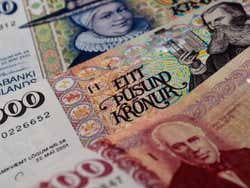
You may also be interested in
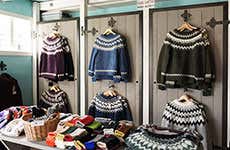
Opening times
Learn when shops, museums and other tourist attractions open and close in Iceland, so you can plan to make the most of your trip!
Public holidays
Find out when museums and monuments will be open and what dates to visit to celebrate holidays like a local. Discover Iceland's public holiday dates.
Best ways to spend travel money in Iceland: Debit & prepaid cards
Learn more about the best card to use, if you should use a uk debit card and other ways to take spending money to iceland..
In this guide
Low cost travel money options for Iceland
How much money to take, how much money do i need to bring to iceland, exchange rate history, should i use a travel card, a debit card or a credit card, a quick summary of travel money options in iceland, buying currency in the uk, exchange rates, bottom line.
Iceland is a destination on many a traveller’s wish list, but it’s often pushed to the back of the queue due to the fact that it’s pretty expensive. But how pricey is it really? And how much money do you need for a trip?
Iceland’s local currency is króna, written ISK. The euro, despite popular belief, is not an official currency in the country, despite many tourism companies displaying their prices in euros, which is illegal according to Icelandic law.
Make no mistake about it, once you’re in Iceland you’ll have to use Icelandic króna in most places.
Best for cashback
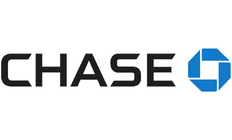
- Rewards when you spend
- Easy access to your money
- No fees abroad from Chase
Promoted for low FX fees

- Open an account in minutes
- Use in more than 150 countries
- 2 free cash withdrawals per month
Promoted for cashback

- Avoid fees abroad without switching banks
- Secure iOS & Android App
- No monthly fees
How we chose these accounts
The best way to take travel money to Iceland is to use a card with low or no currency conversion fees, as well as one that won’t charge you foreign ATM transaction charges, meaning you can withdraw, spend and use the local currency, króna, with ease.
Using debit cards
Much like a prepaid travel money card, a travel debit card lets you spend your own money. You can use a debit card over the counter and to withdraw money from ATM where Visa and Mastercard are accepted throughout the country, which is most places.
Using prepaid travel cards
There are a few travel cards which allow you to load, withdraw or spend króna – one of them being WeSwap .
- Tip: If you are able to use a prepaid travel card for a purchase and you’re asked whether you want to pay in sterling or króna, always pay in the local currency. You’ll lose out on the exchange rate otherwise.
Using credit cards
Visa and Mastercard credit cards, the majority of cards issued in the UK, are widely accepted in Iceland. The currency conversion fee (or lack thereof) is what to look for.
There are a handful of credit cards which let you spend in another currency without paying the extra 3%. Check with your credit card provider to see if this is a favourable option for you. But be sure to watch out for cash advance fees and charges if you make a withdrawal on credit; it’s one of the most expensive ways to get cash.
- Tip: Some credit cards offer complimentary international travel insurance when you charge the cost of your travel ticket to your card.
Using traveller’s cheques
Avoid traveller’s cheques if you can – this travel money product is more hassle than it’s worth in Iceland. Card payments are the norm and provide a money back guarantee if you’re the victim of fraud. These features have made traveller’s cheques redundant over the last few years.
Using an ATM in Iceland
ATMs are not as easy to find in Iceland as you might think. It’s advisable to take a debit card or credit card with you that won’t charge high transaction fees. This means you’ll avoid searching for an ATM if you run out of cash.
Paying with cash in Iceland
Very few locals use cash to pay for purchases or carry it around with them. The most popular form of payment is via debit or credit cards, which can be used in pretty much any transaction.
Exchanging cash
Exchanging cash can be a tricky affair in Iceland as ATMs are sometimes few and far between, especially in remote areas. Our best advice is to arrange to collect your local currency before you fly to Iceland to get the best rate. If not, withdraw your Icelandic currency at Keflavik Airport. While you may be charged a small fee, this is the safest option for withdrawing local currency in Iceland.
One of the most important things to remember when travelling to the country is that locals are not big on carrying money, which means the preferred payment method is either debit or credit cards.
The only exception to this is on city buses or in public toilets where you’ll often have to pay the exact amount in change.
But it will still serve you well to have a little bit of cash on you. If you haven’t collected this before flying to Iceland we highly recommend withdrawing Icelandic currency at Keflavik Airport.
This is because some areas of the country are pretty remote and there aren’t too many banks or ATMs around. While there are multiple options in Reykjavik, if you are going outside of the city and you want cash currency in Iceland, you need to be prepared.
There will, of course, be a small fee for withdrawing Icelandic money, but it’s better to have some rather than none at all should you need it during your trip.
It’s true that a holiday in Iceland is one of the most expensive in Europe. While you should use a debit or credit card for your trip, it will help to know how much to budget for and put aside.
There are five main categories of spending that will go into your average costs. These include accommodation, transport, food, activities and entertainment.
Depending on your travel style and tendencies, it’s possible to save a lot on many of these things in order to spend more on another. If you’re looking to visit this beautiful Nordic nation on a budget, staying in hostels is a better alternative to the more expensive hotel rooms.
Likewise, a camper van can be a great option and kill two birds with one stone by taking care of your transport at the same time.
Find out some typical prices in Reykjavik, Iceland
*Prices are for example purposes only.
As of 19 March 2024, the average rate over the last 12 months was £1 to 172.80 ISK. The low was 166.76 ISK and the high was 176.62 ISK.
In Iceland, you will have very little trouble with Visa and Mastercard acceptance. American Express is accepted in some places, but not others, so make sure to bring an alternative form of payment with you.
If you want to avoid extra bank fees, make use of a variety of cards and use each one for a specific purpose. For example, choose a card that won’t charge you for currency conversion for over-the-counter payments and a different card for ATM withdrawals – even better if you can find a card that suits both purposes.
A great option for this is to use a challenger bank like Monzo or Starling, offering no transaction fees and free ATM withdrawals. You can find out more about digital banks here .
Now that you know what currency you’ll be needing and how much of it to take, find out whether to use debit and credit cards, traveller’s cheques, cash or prepaid cards on your trip.
Debit cards for travel
- Protected by PIN security.
- Debit cards are widely accepted in Iceland.
- Access funds from an ATM or pay for purchases over the counter.
- Ideal for managing your travel budget.
- Currency conversion fees on foreign transactions.
- Lost debit cards while overseas can be easily blocked, but not easily replaced.
- No emergency cash.
- Few ATMs in remote areas of Iceland.
- No back-up cards.
Prepaid travel money cards
- Protected by PIN and chip.
- Pre-load and secure your exchange rate in multiple foreign currencies.
- Emergency card replacement and back-up cards.
- Reloading time.
- Currency conversion and international ATM fees.
- May not be accepted for all transactions in Iceland.
Credit cards for travel
- Access to funds up to your credit limit.
- Accepted worldwide.
- No currency conversion or transaction fees.
- Benefits including rewards points on spending, 0% purchases, frequent flyer perks, complimentary travel insurance.
- Emergency card replacement.
- Can charge high withdrawal and cash advance fees.
- Higher spending limit (depends on your approved credit limit).
Traveller’s cheques
- Secure and can be easily replaced if lost or stolen.
- Photo ID needed to cash cheques.
- Can be costly with initial purchase charges.
- Not all merchants accept traveller’s cheques.
- May be needed for rare transactions like public bathrooms or bus tickets.
- More difficult to manage expenses.
- Higher risk of theft.
- Icelandic locals rarely carry cash.
Icelandic króna is a relatively common currency in the UK, and providers such as Travelex will usually stock króna to collect before you go.
It’s worth getting a good exchange rate, as this will leave you with a little more to spend on your trip. Compare your options and make sure you’re getting the best exchange rate possible.
Taking a debit card with no transaction or withdrawal fees is the best option for travelling to Iceland, but it’s also worth taking some cash for small payments such as bus journeys or public bathrooms.
Visa and Mastercard are widely accepted, especially within Iceland’s city regions. More remote areas may not offer ATMs, so in these situations, it’s best to take cash with you.
We show offers we can track - that's not every product on the market...yet. Unless we've said otherwise, products are in no particular order. The terms "best", "top", "cheap" (and variations of these) aren't ratings, though we always explain what's great about a product when we highlight it. This is subject to our terms of use . When you make major financial decisions, consider getting independent financial advice. Always consider your own circumstances when you compare products so you get what's right for you. Most of the data in Finder's comparison tables has the source: Moneyfacts Group PLC. In other cases, Finder has sourced data directly from providers.
Amelia Glean
Amelia was a writer at Finder specialising in style and travel. See full bio
More guides on Finder
Research from finder.com shows that it takes a single person 20 years longer to save for an average mortgage deposit compared to a couple. Singles spend £611 more on essentials monthly and save significantly less, highlighting the financial challenges faced by those living alone.
Research from finder.com shows the average monthly disposable income for Brits rose to £939 in 2024, a 4% increase from 2023. Plymouth residents have the lowest disposable income at £591, while Colchester tops the list at £1,392. London saw a 13% increase but still ranks low in overall spending power due to high living costs.
Research from finder.com shows NVIDIA’s stock surged 157.56% in the first half of 2024, while EV-makers Tesla and Nio suffered significant losses. The 10 most popular stocks averaged a 23.32% return, highlighting the potential gains and risks of investing compared to savings accounts.
New research from finder.com reveals UK students graduate with an average debt of £45,600, making UK tuition fees among the highest in Europe. The study also highlights cheaper education alternatives in EU/EEA countries missed by UK students post-Brexit.
We’ve analysed data on the average price of a pint of a coffee in the most populated cities around the world and across the UK.
Looking for a crypto exchange like Coinbase? Here are some of the top alternatives to consider.
Ever wondered how to invest in FWRG ETF? Learn more about it now and find out where you can invest in it. Compare ETF brokers to start investing today.
Ever wondered how to invest in DAGB ETF? Learn more about it now and find out where you can invest in it. Compare ETF brokers to start investing today.
Calculate your monthly payments on a £75,000 business loan with our easy-to-use calculator.
Calculate your monthly payments on a £45,000 business loan with our easy-to-use calculator.
How likely would you be to recommend Finder to a friend or colleague?
Our goal is to create the best possible product, and your thoughts, ideas and suggestions play a major role in helping us identify opportunities to improve.
Advertiser Disclosure
finder.com is an independent comparison platform and information service that aims to provide you with the tools you need to make better decisions. While we are independent, the offers that appear on this site are from companies from which finder.com receives compensation. We may receive compensation from our partners for placement of their products or services. We may also receive compensation if you click on certain links posted on our site. While compensation arrangements may affect the order, position or placement of product information, it doesn't influence our assessment of those products. Please don't interpret the order in which products appear on our Site as any endorsement or recommendation from us. finder.com compares a wide range of products, providers and services but we don't provide information on all available products, providers or services. Please appreciate that there may be other options available to you than the products, providers or services covered by our service.
We update our data regularly, but information can change between updates. Confirm details with the provider you're interested in before making a decision.
Learn how we maintain accuracy on our site.

A Traveller’s Guide to Icelandic Money
By Tanja Rasmussen
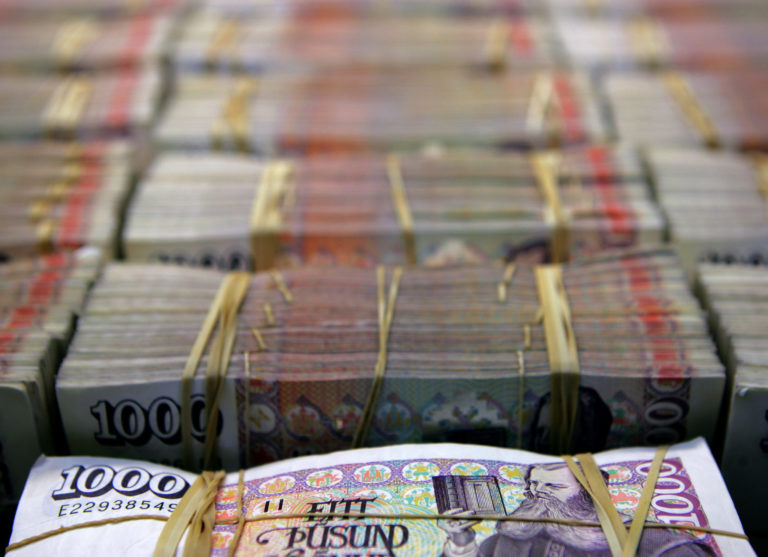
- March 5, 2024
Since 1885, Iceland has had its own currency, called the Icelandic króna (ISK). It‘s had its ups and downs and is heavily debated at times , with some people rallying to swap it out for the Euro and others singing the praises of it. Nothing much has come from these wrangles, though, so for the foreseeable future, the Icelandic króna is here to stay. This is your guide to everything you need to know about it.
Are other currencies accepted in Iceland?
Other currencies than the Icelandic króna are not accepted in the country, so if you plan on paying in cash, you need to get some krónas. At the time of writing, currency exchange is not possible at Keflavík Airport, although the currency exchange service Change Group is preparing to open there soon . If you want to exchange your currency, you will have to do so in a bank outside the airport. Alternatively, you can opt to withdraw cash from an ATM.
Icelandic banknotes and coins
There are five banknotes you might come across: 500, 1000, 2000, 5000, and 10,000. A 10,000 króna banknote [ $73, €67] is quite a large sum in the context of day-to-day things. For example, you could buy almost 15 croissants in an artisan bakery for that amount. In combination with the fact that relatively few locals pay with cash, this means that some businesses might not have enough change in their cash registers if you pay with a 10,000 króna banknote. It is, therefore, best to carry a variety of banknotes in your wallet. The Icelandic coins are five as well: 1, 5, 10, 50, and 100.
Paying with cards in Iceland
Carrying cash is not a necessity in Iceland. Not accepting card or contactless payments, no matter how small the purchase, is an anomaly amongst Icelandic businesses. The biggest exception to this is the Reykjavík city bus system, where you need to pay with cash, have prepurchased tickets from one of these vendors or use the Klappið app. Other than that, it‘s highly unlikely that you‘ll run into trouble if you have a MasterCard or Visa. As elsewhere in the world, American Express cards are not accepted everywhere, but they can usually be used in hotels, popular restaurants, and supermarkets.
Related Posts

The Icelandic Financial Crisis

Iceland 101: All the Basic Facts You Need to Know
Latest news.

Police Suspect Stove Pot Sparked Fatal Amtmannsstígur Fire

Women’s National Football Team Hits Record FIFA Ranking

Reykjavík Cemeteries Modernise by Dropping Cross from Logo

One in Four Icelanders Exhibit Harmful Alcohol Use

Dead Zones in Mobile Network to Disappear by End of 2026
To provide the best experiences, we and our partners use technologies like cookies to store and/or access device information. Consenting to these technologies will allow us and our partners to process personal data such as browsing behavior or unique IDs on this site and show (non-) personalized ads. Not consenting or withdrawing consent, may adversely affect certain features and functions.
Click below to consent to the above or make granular choices. Your choices will be applied to this site only. You can change your settings at any time, including withdrawing your consent, by using the toggles on the Cookie Policy, or by clicking on the manage consent button at the bottom of the screen.
Money in Iceland, what currency, how to pay, where to change
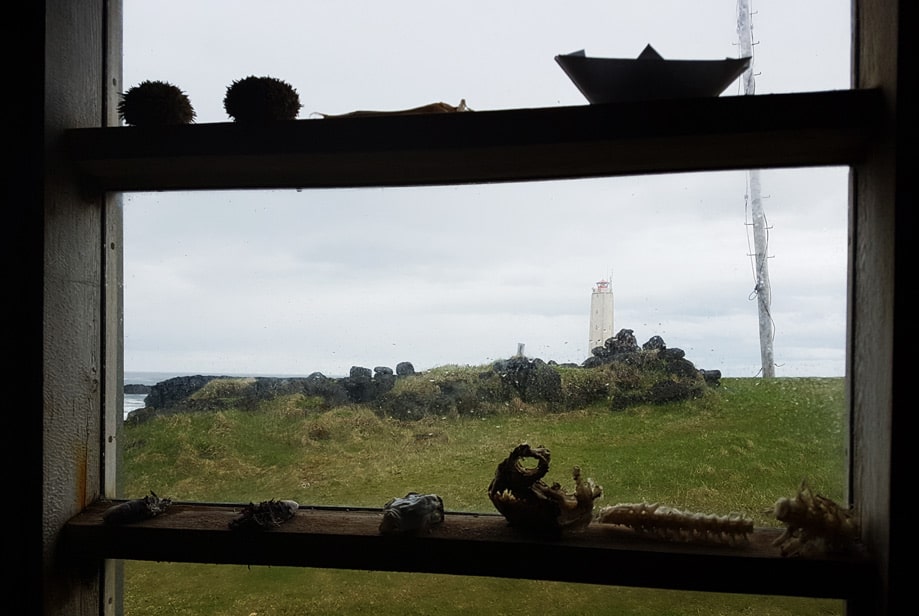
What is the currency in Iceland? What kind of money is accepted for payment in Iceland, other than Icelandic krona?Is there an option to pay in euros or by card? Are there many exchange offices and where is it better to change?
Money in Iceland
How much money to take to iceland, approximate calculation of the amount for a trip to iceland, prices in iceland, currency exchange in iceland, card payment in iceland.
In Iceland, the national currency is the Icelandic krona, which is equal to 100 eire (local kopecks). Practically, coins with a face value of less than 1 crown have been withdrawn from circulation in Iceland.
The banking abbreviation of the crown is ISK, on the price tags they write króna , either in the plural krónur , or simplify everything to kr .
Banknotes of denomination are circulating in circulation 10, 50, 100, 500, 1000, 2000 and 5000 crowns, as well as coins in denominations of 1, 5, 10, 50 and 100 crowns.
In Iceland, only the Icelandic krona is accepted for payment. Alternatively, take euros/dollars with you and change them at a bank in Iceland. But! I advise you not to change money for crowns, but to pay with a card everywhere. Cards are accepted absolutely everywhere.
The exchange rate of the Icelandic krona to the euro is quite stable and has not changed much for several years.
In 2024, you will receive approximately 149 Icelandic kronor (ISK) for one euro.
The current exchange rate of the Icelandic currency to the euro can always be checked here: https://www.xe.com/currencyconverter/convert/?Amount=1&From=EUR&To=ISK
Prices for gasoline, food and accommodation are quite high in Iceland. On average, a tourist needs about 50 euros per person per day for recreation and entertainment in Iceland, and this is not counting the cost of the hotel.
Even for the most economical tourist who plans to hitchhike, spend the night in a tent and cook for himself, the trip will cost about 500 euros.
If you live in 3-4* hotels or on comfortable private farms, and eat in cafes and restaurants, the cost of rest will be at least 1,500 euros.
The price of the flight depends heavily on the season, but you can quite often find relatively inexpensive tickets to Iceland from European cities.
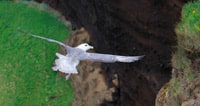
Where to stay in Iceland: hotel, farmhouse, campsite
Whether you are traveling on a budget or looking for a comfortable stay, in Iceland you will find accommodation to suit your needs. From luxury hotels in Reykjavik to ...
You can exchange currency in Iceland at the airport or at bank branches. You can also withdraw Icelandic krona from the card through an ATM. Iceland has a network of exchange offices "The Change Group", but almost any exchange office charges a commission from 2 to 5 €. Moreover, in some places the commission amount is fixed and does not depend on the amount of the exchange, and some charge a percentage.
Also, when going to the Icelandic exchangers, bring your passport with you, you may need it when exchanging currency.
ATMs are located everywhere, you can withdraw money from the card at train stations, shops, hotels and on central streets. For cash withdrawals in Iceland, you will have to pay a commission of about 1% -2% of the amount issued.
Usually, the opening hours of banks in Iceland are 09:00-16:00 from Monday to Friday.
In addition, the currency exchange service is mostly provided to guests by Icelandic hotels and hostels.
In addition to American dollars and euros, you can exchange pounds sterling, Australian dollars and other popular currencies in Iceland. It is not worth counting on the exchange of rubles or Ukrainian hryvnia.
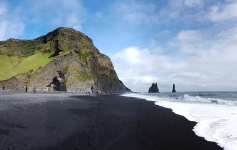
Top places in Iceland
- Litli Hrutur volcano eruption in Iceland 2023
- Jökulsárlón: Unforgettable Experience at Iceland's Glacial Lagoon
- The Bridge between America and Europe, America - Europe Bridge

Savvy Travel Advice
Iceland on a Budget: How to Save Money in Iceland
Last updated: April 17, 2024 - Written by Jessica Norah 96 Comments
Iceland is a popular but expensive travel destination. To help with your trip planning, we’ve put together a guide to how to travel to Iceland on a budget. Our advice is based on the 6 weeks we have spent traveling throughout this beautiful country.
In this post we’re going to share our top Iceland budget tips to help you save money on your Iceland trip. We’ll start with giving you an idea of what things costs in Iceland and how to set up a budget for your trip, and then we’ll share 21 different budget tips to help you travel in Iceland on a budget. We share ways to save money in Iceland on flights, accommodation, rental cars, dining out, camping, alcohol, groceries, fuel, and sightseeing.
Whether you are traveling on a $1,000 budget or a $10,000 budget, you want to get the most out of your money and your trip to Iceland, and that’s what this post will help you do!
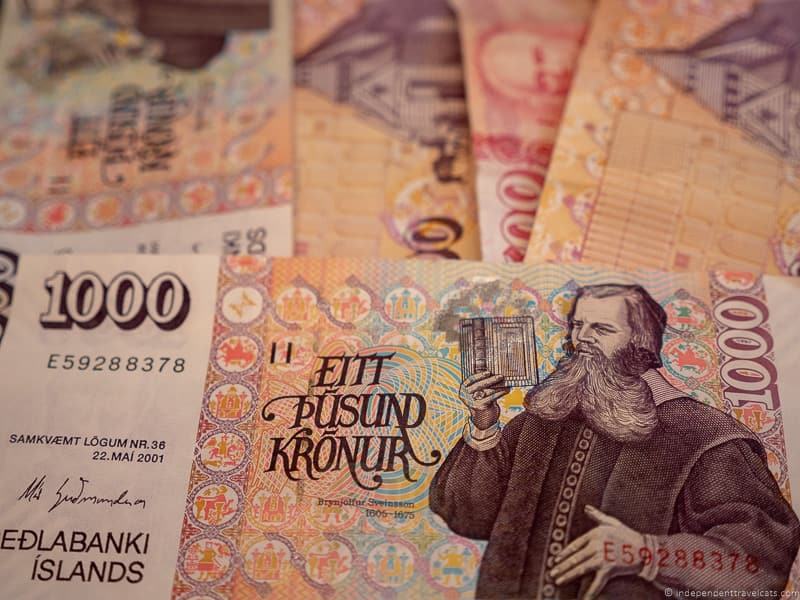
Table of Contents:
Planning your Iceland Budget
Planning your Iceland budget is a really important part of planning your Iceland trip. You definitely don’t want to arrive and suffer sticker shock and end up spending much more than you anticipated.
With a bit of advance planning we think you will be able to come up with a realistic idea of how much your trip to Iceland is going to cost you, and this section of the post will help you figure that out.
How Much Do Things Cost in Iceland?
Iceland uses the Icelandic krona (ISK) so be sure to check the current exchange rates of the krona with your home currency before you to know the exchange range. You’ll also want to have an idea of the current costs of goods and services.
To find out a good rough idea of the current prices for things in Iceland we recommend checking out a site called Numbeo. Here you can check for prices of basic goods (bananas, a pair of Levi jeans, gasoline, restaurant meals, wine) by country or check on prices of goods for a particular city (see here for Reykjavík ).
NOTE: The prices in this post were last updated in May 2022 and are rough estimations to give you an idea. ISK currency rates have taken a huge dip since this post was originally written in July 2018. For the USD currency conversion, the conversion rates at time of writing are 1 ISK = 0.008 USD (or 1 USD = 128 ISK).
- Grocery Items – Iceland currently has some of the highest prices in the world for grocery items. Here are some average prices: loaf of fresh white bread (357 ISK; USD $2.77), bottle of mid-range red wine (2400 ISK, USD $18.62), 1 kg of bananas (260 ISK; USD $2.02), 1 kg of white rice (330 ISK, USD $2.56), and 1 kg of boneless chicken breasts (2050 ISK; USD $15.90).
- Eating Out – 450 ISK (USD $3.49) for a hot dog from a hot dog stand, 1089 ISK (USD $8.45) for a 12-inch Subway sub of the day special,1,750 ISK (USD $13.57) for hamburger at fuel station, and 12,000 ISK (USD $93) for 2-course meal (no drinks) for 2 persons at mid-range restaurant.
- Tours & Activities – Prices range a lot based on the type of tour, length, and inclusions but here are some general prices (per person) to give you an idea: 6100 ISK (USD $48) for 1 hour puffin watching boat tour from Reykjavik, 8,700 ISK (USD $68) for a full-day Golden Circle sightseeing bus tour, 19,300 ISK (USD $150) for a 2 hour snorkeling trip, and 20,000 (USD $157) for an ice cave tour. For multi-day tours, 71,000 ISK (USD $556) for a 3 day/2 night tour, 206,000 ISK (USD $1,600) for a 6 day/5 night tour, or 240,000 (USD $1870) for a 8 night/7 night tour.
- Lodging – Prices depend a lot on location and time of year as summertime prices can be double wintertime prices and expect to pay more in Reykjavik than in the countryside. But we provide some rough average prices. 3,800 ISK (USD $30) for a bed in a shared dorm room in a basic hostel, 6,500 ISK (USD $50) for a bed in a shared dorm in a nicer hostel, 9,600 ISK ($75) for private guesthouse room with shared bathroom, 12,800 ISK (USD $100) for a budget hotel or guesthouse, 20,000 ISK (USD $157) for room in mid-range hotel, and over 30,000 (USD $230+) for a room in a 4-star + hotel.
- Campsites – Campsites are about 1,000 to 2,600 ISK (USD $8 to $20) per person/night plus a small overnight tax that is currently 333 ISK (USD $2.78) per tent or campervan. Additional small fees often apply for use of extra services like laundry, waste disposal, and showers.
- Museum Entry Fees – On average, museum and attraction entry fees range from 800 ISK (USD $6.20) to 2500 ISK (USD $19.39). Museums are the most expensive in Reykjavík and less expensive outside of major tourist towns.
- Rental Cars – Car rental prices vary but here are some rough estimates to help guide your budget: 10,300 ISK (USD $80/day) for a 2X2 compact car, 15,700 ISK (USD $120/day) for a small 4X4 Jeep, 15,700 ISK (USD $120/day) for a small campervan with roof tent, and 16,700+ (USD $130+/day) for luxury cars and Jeeps. All rentals generally come with mandatory insurance (often called basic CDW) but to upgrade to include physical damage/gravel coverage is generally an extra 2,000 to 2,500 ISK ($17 to $21)/day. Compare rental prices for cars and motorhomes in Iceland here .
- Gasoline – The estimated average cost for 1 liter of gasoline is 317 ISK (USD $2.88). Note that 1 liter is only about 1/4 of a gallon. A gallon of fuel would be 1,268 ISK (USD $11.52).
- Public Transportation – A one-way regular adult bus ticket in Reykjavík costs 480 ISK (USD $3.72), but you can save money with a bus pass if taking the bus a number of times. In Akureyri, the local city buses are free. Long-distance bus ticket prices depend on location and time of year, but a ticket from Reykjavík to Akureyri will likely cost between 8,000 ISK (USD $62) and 11,000 ISK (USD $85).
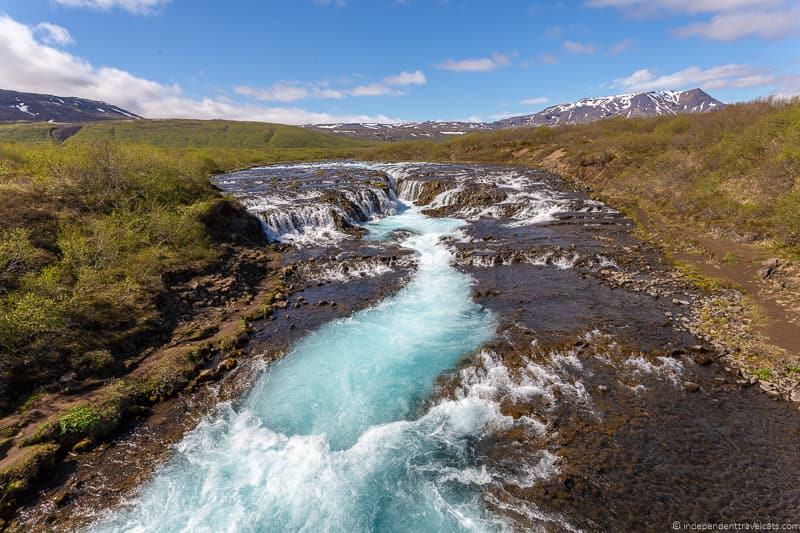
Why is Iceland so Expensive?
Prices are high in Iceland for a variety of factors. It doesn’t just affect travelers though, Iceland has one of the highest costs of living in the world.
The high prices are partially due to the isolated nature of Iceland’s location as an island in the North Atlantic as the cost and time to import goods is high. Another factor is that Iceland is a small country with a relatively small workforce in a country where the costs of living are very high so labor costs are high. The country also has to depend on hiring foreign labor, especially in the fishing and tourism sectors.
Another factor on some items is taxes and import fees. For instance the taxes on alcohol and fuel are very high in Iceland.
However, another big factor is the country’s currency. When we last visited the economy was very strong and the Icelandic krona was very strong (some were saying too strong). This, of course, means that the prices of everything are very high. However, when the country has a recession or a financial crisis (such as in 2008), the krona crashes and prices tumble.
So as a traveler, the prices you pay are going to depend a lot on how well Iceland’s economy is doing. Good to check this out before your trip as if you use price estimates from 6 months ago, your budget could be way off.
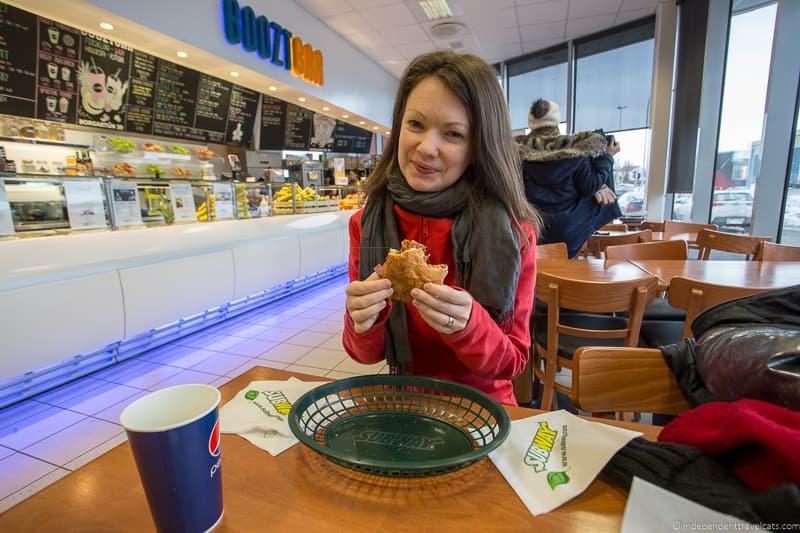
Tips for Setting your Personal Iceland Budget
Use your research to set a realistic budget for your trip.
A good budget should:
1.) Be comprehensive – It should include all your major costs of traveling including your flights, lodging, transportation (buses, rental car [fuel, insurance], ferries, etc.), meals, tours and activities, sightseeing admission fees, and extras (e.g., shopping, souvenirs, snacks, camping gear rental).
2.) Be practical given the average costs in Iceland.
3.) Sit comfortably within your financial constraints. Be sure to leave a little room for unexpected expenses.
4.) Not be too restrictive. Don’t plan a trip that is so restrictive in terms of budget that you have doubts about whether you will actually be able to enjoy the trip.
What if I Can’t Afford to Travel to Iceland?
If you find after doing some research into prices and checking out our budget tips that you have significant concerns about the costs, consider a shorter trip (e.g., 3 days instead of 5 days) or consider waiting and saving up a bit of money first. Iceland will still be there next year.
You don’t want the travel stress of worrying about money on the trip and also you don’t want to feel so restricted on the trip that you don’t have any fun. For instance, would you enjoy Iceland if you are not being able to do any paid activities and having to eat boiled rice each night?
Determine how much money you need to save and then figure out how long it will take you to save the money for your trip. The best strategy is to save a little money each week (or each month) until you reach your savings goal.
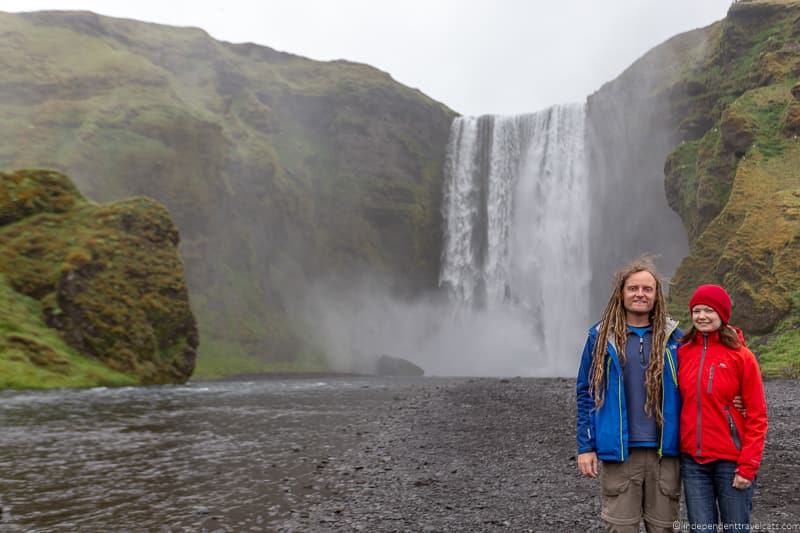
Iceland on a Budget: 21 Ways to Save Money in Iceland
Below we’ll share 21 ways to save money in Iceland. These include ways to save money on flights, lodging, groceries, sightseeing, restaurants, camping, fuel, transportation, and activities. Many of these tips you can start using right now as you begin to plan and research your trip, and should help you stay within your budget while traveling in Iceland.
The ISK prices in this post were last updated in May 2022. For the USD currency conversions, the conversion rates at time of writing are 1 ISK = 0.008 USD (or 1 USD = 128 ISK). So do keep this in mind and please check the latest exchange rates for your country’s currency.
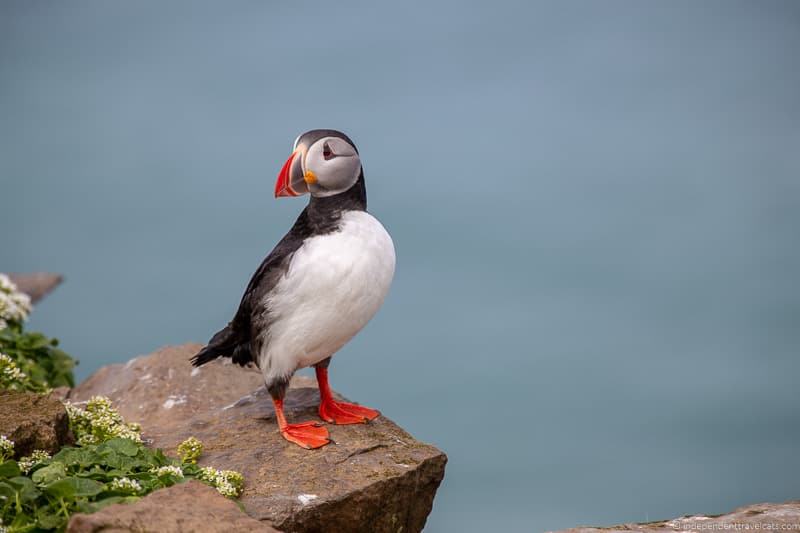
1. Travel to Iceland Off Season
The busiest and most expensive time to travel to Iceland is in the summer months. The high season in Iceland is from about mid-June to end of August. Hotels, activities, car rentals, and other services are often higher during this period. We have been in both summer and winter and the increase in accommodation prices was particularly noticeable. With higher demand, expect higher prices.
So if you are flexible in when you travel, consider traveling outside of the summer season, particularly July and August. You’ll avoid paying the highest prices and also avoid the most crowded time in Iceland. If you still want to travel around this period, consider going just outside of the busiest period, say late May, early June, or September.
However, despite the higher prices, there is a reason that most people choose to visit in the summer. It is partly due to this is when most people can take their vacation time, but it is also when Iceland generally has its best weather and the greatest number of tourist-related businesses, attractions, and services are open. It is also the safest time in terms of driving, hiking, and camping, and summer is the best time to see wildlife in Iceland. So keep in mind both the pros and cons to make your decision.
If you are planning to travel in the summer months, our 1 week Ring Road itinerary and 5 day all-season itinerary may be useful.
If you are thinking about traveling in the winter (December to April), you can check out our suggested 7 day Iceland winter itinerary for an idea of more of the pros/cons of winter travel and an idea of where you might want to go. Here is a list of fun winter activities that you can do in Iceland which include skiing, ice cave explorations, snowmobiling, snorkeling, and Northern Lights hunting.
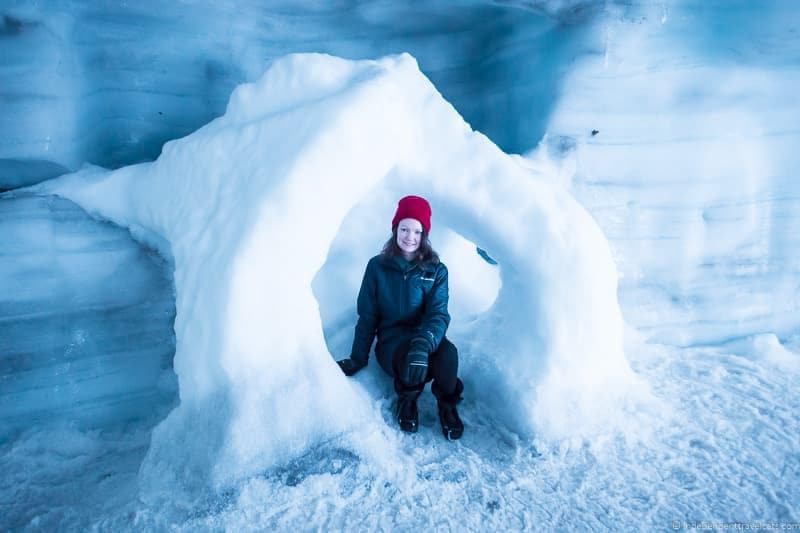
2. Book a Cheap Flight
Try to save money for your trip by looking for inexpensive airline tickets. If you live in North America (particularly the Midwestern or eastern United States), Western Europe, or Northern Europe you can probably find low airline fares. If you are patient and have flexible dates, you should be able to find decent flights.
The main providers of inexpensive flights to Iceland are Icelandair (main Iceland airline) and Play (budget-focused airline). Previously the budget Iceland airline was WOW Air but it ceased operating in March 2019.
For example, in the UK you can get round-trip flights to Reykjavík from USD $180 and Americans from a select number of cities are sometimes able to get round trip flights to Reykjavík from the east coast for as low as USD $200!
Just be sure you check the baggage guidelines and inclusions for the airline as most budget airlines have strict weight and luggage requirements. You’ll need to add in extra luggage fees, as needed, into your flight cost. For example, an IcelandAir Economy Light ticket does not allow for any checked luggage.
Many people end up paying a lot in extra baggage fees at the airport because they did not pre-pay. If you need to bring additional baggage, purchase the additional luggage allowance with your ticket rather than at the airport to save money.
If you don’t live in a country or near a city where Icelandair or Play operates, you might try booking a flight that connects to one of those cities to take advantage of cheap fares. For booking flights we like Priceline , Kiwi , Southwest (for flights within the USA only).
Many people also visit Iceland on a stopover on their way between North America and Europe, or vice versa. Stopovers with Icelandair are available on most transatlantic flights at no extra cost and you can stay in Iceland for 1 to 7 days. A stopover is a great way to see Iceland if you only want to visit some highlights but it is not your primary holiday destination. See our guide to visiting Iceland on a stopover for some ideas.
NOTE: All international flights currently land at Keflavík International Airport, about 30 miles southwest of Reykjavík. There is an airport within Reykjavík but it is used for domestic flights only (and a few from Greenland & the Faroe Islands).
3. Compare Lodging Options
You can save money by comparing different lodging options and looking across different websites.
In Iceland, there are a variety of lodging options from hostels to guesthouses to apartments to hotels. Reykjavík has the greatest number of lodging options and properties range from budget to luxury. There are fewer choices in the less populated areas of the country. Guesthouses, bed-and-breakfasts, and small hotels are the most common types of places throughout the country.
If you are booking your own lodging, be sure to compare options and consider alternative options to what you normally book.
Here are some places to start to get an idea of prices:
- Booking.com – One of the largest and most competitive online booking websites, it offers all kinds of accommodation options including hotels, guesthouses, holiday homes, apartments, and hostels. This is the website we use the most to book our lodging worldwide.
- HostelWorld – Our recommended place to search for & book hostels around the world. Hostels are usually your cheapest option in Iceland (except for campsites).
- Book directly – It is always a good idea to check out the hotel website to see if they can offer a better deal.
- Vrbo – A popular online place to find apartments, and holiday homes for a variety of budgets. Note that like many places, there are a lot of illegal vacation rental properties in Iceland and the large increase in vacation rental properties over the past few years has been driving up rental prices for locals. So these services are often unpopular with some Icelanders!
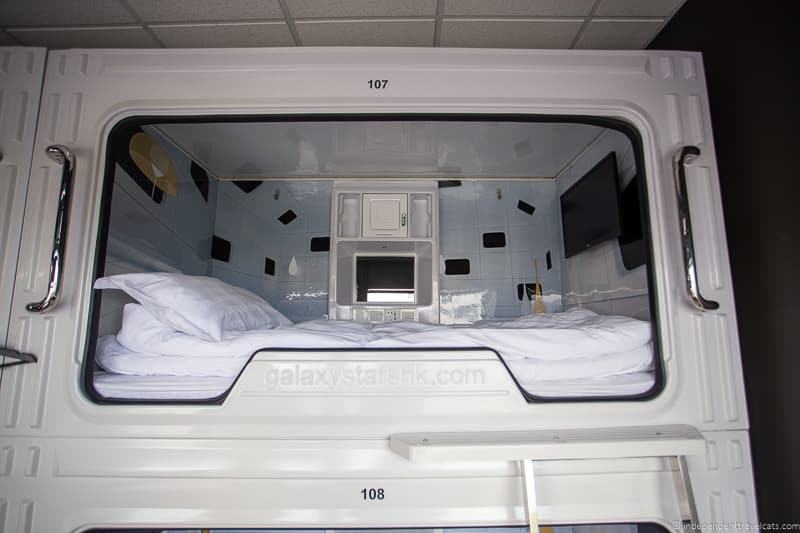
4. Book Accommodation in Advance
As with many destinations, booking your accommodation in advance can save you money. It also gives you access to the most variety in lodging and can help ensure you get a room within your budget. Last-minute rates, especially in high season, can be very expensive (we’ve seen them triple the normal rate).
Once you have your dates set and flights booked for your trip, I’d start investigating lodging options within your price range. Not only can booking in advance save you money, but it also ensures you have a place to stay. Driving around late at night looking for a place to stay is never fun!
Even if you are not 100% sure of your plans yet, it may still be a good idea to book your accommodation if you have the option to cancel it if necessary. On many online hotel websites, like Booking.com , most properties allow you to book a hotel room, guesthouse, or apartment, and then cancel it if your plans change. You just need to cancel it by a certain date as will be indicated on the booking (normally 24 hours to 1 week in advance depending on the property).
By booking in advance, you lock in the current rate and know you have a place to stay, but can still change your mind later.
5. Consider a Camping Holiday
Camping is one of the least expensive ways to overnight in Iceland and also gets you outside and under the stars. This is a great way to travel in Iceland on a budget. We’ll share all the information you need to know to decide if camping is right for you and how much you can expect to pay per night.
Finding Campsites in Iceland
Camping is fairly inexpensive in Iceland and is one of the best budget ways to travel around Iceland if you plan to self-drive. Campsites are about 1,000 to 2,600 ISK (USD $8 to $20) per person/night plus a small overnight tax that is currently 333 ISK (USD $2.78) per tent or campervan. Additional small fees often apply for use of extra services like laundry, waste disposal, and showers. So you can save money by checking rates before choosing a campsite.
Do I need to book campsites in advance?
You don’t need to book camping in advance in Iceland. In fact, most campsites do NOT take advance bookings. There is normally a lot of space (most are open fields) and people are rarely turned away.
It is a good idea to know where campsites are located in advance so you can loosely plan where you will stay each night during your trip. Space is allocated first come, first serve at most places, so just don’t show up too late during the busy season, especially if have specific requirements (e.g., large caravan that needs water & electric hookups). Checking in by early evening is a good idea and most campsites allow registration and check-in between set hours so it is a good idea to check ahead.
Those traveling in winter should note that many campsites in Iceland are seasonal and are closed in the winter months. So be sure to check campsites’ operating dates when planning your driving route.
There are no great campsite websites out there (at least none that we have found anyway) that have all the Iceland campsite information on them. But here are two websites to check out for a rough idea of campsite locations: here (lists 60+) and here (lists 40+). Note that there are more small campsites around the country that are not captured on these websites, and local Visitor Centers are good places to stop for all the options in a specific area of Iceland.
If you are renting a campervan in Iceland, your rental will likely come with a list of recommended campsites and campsite information.
Ways to save money on campsites in Iceland?
Those who plan to camp for several nights or more in Iceland and are visiting between May and September, may want to check out the Camping Card . The card gives you overnight stays (campervan or tent) for up to 2 adults (plus up to 4 children under age 16) in any of the participating 40+ campsites. You can stay in any 1 campsite for up to 4 days maximum. It is valid for up to 28 nights and will definitely save you money if you are camping for several days or more in Iceland!
The Camping Card (currently 21,900 ISK or USD $169) can be purchased online and shipped to you before your trip, or purchased after you arrive in Iceland. Within Iceland you can purchase it at numerous locations including a number of tourist information offices, campervan and car rental agencies, 10-11 grocery stores, and post offices.
Some RV and campervan rentals come with a Camping Card or the option to add one to the rental price in advance such.
Are there camping packages available?
Yes, there are a few self-drive camping tour packages available that include your campervan or RV rental as well as a suggested itinerary and camping essentials. For those planning to drive the Ring Road, this 12-day self-drive camping trip deal (available May to September) includes your campervan rental, basic CDW insurance, camping gear, and a detailed travel plan and suggested itinerary.
For those looking for a hiking plus camping tour, you can do a guided hiking tour that includes camping such as this 5 day Landmannalaugar hiking tour or this 6 day guided trek that includes Iceland’s 2 most famous hiking trails. These tours include transportation to/from Reykjavik, luggage transfers, meals, and a guide.
Can I camp for free in Iceland?
The answer for the majority of cases is NO unless you are wild camping (tent camping) under certain circumstances. There is a common misperception that you can camp or park almost anywhere in Iceland for free, but this is not true. Iceland used to have pretty lenient rules on wild camping and did not really regulate illegal RV and campervan parking.
However, in the past few years with increased tourism and increased destruction of the environment by campers, new rules were introduced and illegal camping is more widely regulated and policed. New laws are designed to protect the environment, avoid traffic accidents, and to prevent damage to private property. Many landowners and even entire regions of Iceland now prohibit any camping (tent or campervan) that is not within a designated campsite.
Basically if you want to sleep in your campervan, car, tent trailers, campervans, RV, or any other sort of motorized vehicle, you need to stay overnight in a designated campsite . The main exception is if you have the explicit permission of the landowner to overnight on their property, which is how many Icelandic people are able to camp for free.
Camping is inexpensive in Iceland (see above section) and there is no good reason to try to illegally camp in Iceland. Be a responsible traveler to this beautiful country.
Now if you wanting to do real wild camping (a traditional tent pitched well off the road away from buildings), then there are places you can still wild camp for FREE for 1 night at a time in Iceland. Although note that it is still recommended that you use a designated campsite when one is nearby, but is a great option for uninhabited areas of Iceland (e.g., Hornstradir Nature Reserve or central Highlands areas) and for those wanting to do multi-day hiking treks.
There are a lot of restrictions and areas that do not allow camping of any kind (see list here ), but if you want to tent camp for free legally, there are still some places you can do it.
Unless you are a seasoned camper with good cold-weather gear, we would only recommend tent camping in the summer months as the weather can be very cold and wet throughout the rest of the year and make for some really uncomfortable camping situations. Camping in Iceland is definitely best during the summer months.
If you plan to camp in Iceland, be sure to check out the Environmental Agency of Iceland website which covers all the overnight Iceland camping rules as well as lots of safe travel tips.
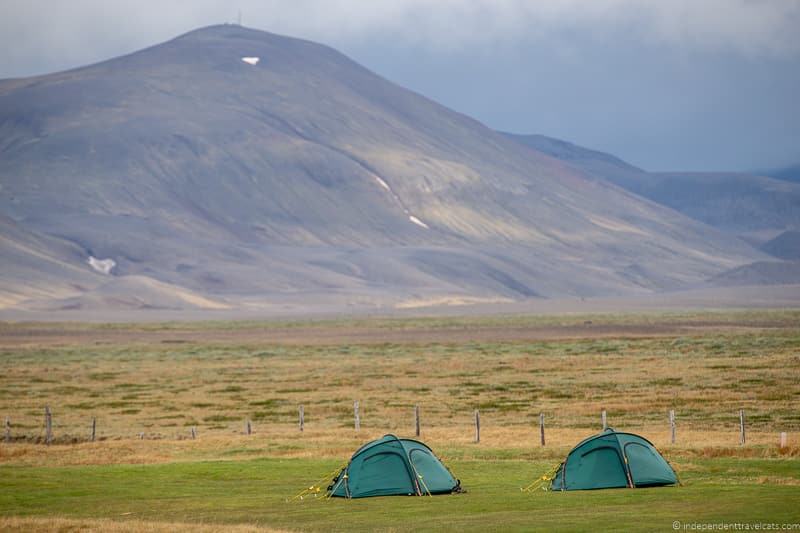
6. Consider All your Iceland Travel Options
Although you probably have an idea of how you plan to travel around Iceland, it is a good idea to consider all your options. The least expensive option may depend on the size of your travel party, time of year, and how many days you have in Iceland.
Although budget is definitely an important factor, you also want to consider your travel comfort, time you have in the country, how much time you have to plan, how much time you want to spend planning, and other important factors.
Iceland Travel Options :
Guided Tour – Join a guided group tour that goes to the places you want to visit. Your itinerary, hotels, sightseeing, and transport will be taken care of with little planning needed. Although it can be more expensive than planning everything yourself, tours allow you to have a very good idea of all the major expenses before you start the trip. Example guided tours in Iceland are this 6 day ring road trip and this 10 day Ring Road trip . See this great list of guided tours in Iceland for a curated list of options.
Day Tripping – A popular way to travel in Iceland is to base in a city (or two), and explore from there. You can either hire a car and drive yourself or book day trip tours. For example, from Reykjavík, you can explore most of western and southern Iceland on day trips, and from Akureyri you can explore most of northern Iceland. See a guide to popular Reykjavík day trips to get an idea of what you can see if you are considering basing in the capital.
Self-Drive – Hire a car, set your own itinerary, choose your own activities, and book your own lodging. You control your bookings and budget. Everything is up to you!
Self-Drive Package – If you want the freedom of driving yourself but don’t want to do a lot of planning, you can book a self-drive package where your rental car, hotels, and any tours are booked for you and you are given a suggested itinerary based on your preferences. You can see self-drive trips on Tour Radar here and on Guide to Iceland here , to give you some ideas.
Travel By Public Transport – You can travel by public bus to get around the country. This is definitely one of the cheapest forms of travel available in Iceland. You can also travel using a Bus Passport in the summer months.
Camping – Camping is one of the least expensive ways to overnight in Iceland, and you can choose to get around via a regular car, campervan, or by public transport.
Hitchhiking – Although a popular recommendation in budget forums and guides, we don’t recommend hitchhiking as your primary means of getting around Iceland. Icelanders we spoke to think it is strange (and unsafe) for tourists to show up in a foreign country expecting to hitchhike their way around. Depending on the kindness (or pity) of strangers to drive you around is not the best (or most efficient) way to get around Iceland, especially if you have limited time. Instead consider sticking to one area you can explore on foot or by bike (e.g., Reykjavík), taking the bus, getting a Bus Passport, or consider carpooling.
Each of the options above has its pros and cons, and I’d read this planning guide for more information if you need help deciding on how to travel in Iceland.

7. Consider Using Public Transit
Public transportation covers Reykjavík and the surrounding area very well. It is a great and relatively inexpensive way (480 ISK per ticket) to get around the capital compared to taxis or a rental car. There are also bus passes as well if you plan to use the bus multiple times during your time in Reykjavík.
You can pay the bus fare on the bus to the driver (bring exact change) or using a credit card in advance using the Strateo phone app . The buses are free for those using a Reykjavík City Card .
Akureyri, the country’s second largest city in the north, has free city buses that visitor can use to get around!
For those traveling around Iceland, the public transportation network connects all the major towns and cities. You can see the public transport network here with most of the regular bus routes run by Strateo . For the long-distance buses, you can pay for tickets using a credit card.
Whether or not the public bus is a good option for you will depend on where you plan to go and what you plan to visit as while towns throughout Iceland are well-connected, many tourist sites like waterfalls and remote beaches are not going to be located near bus stops.
8. Buy a Bus Passport
One of the disadvantages of the regular buses is that they only connect places that local people will be traveling and are not necessary well-suited for tourists. However, in summer, you can purchase a Bus Passport where hop-on hop-off buses operate around the country that pick-up and drop-off passengers at the most popular hiking spots and tourist attractions in Iceland.
The South Shore bus pass covers a number of attractions along the South Shore including Hveragerði, Seljalandsfoss waterfall, Skógarfoss, Vík, Skaftafell National Park, and Jökulsárlón Glacier Lagoon.
There are also special hiker bus passes and services offered through Trex and Thule Travel in the summer months.
Bus passes can represent a really good value for transportation if you plan to use it for several days or more. Check the routes and schedule to find out if it would be a good value for your trip. The bus passports can be purchased online or once you are in Reykjavík.
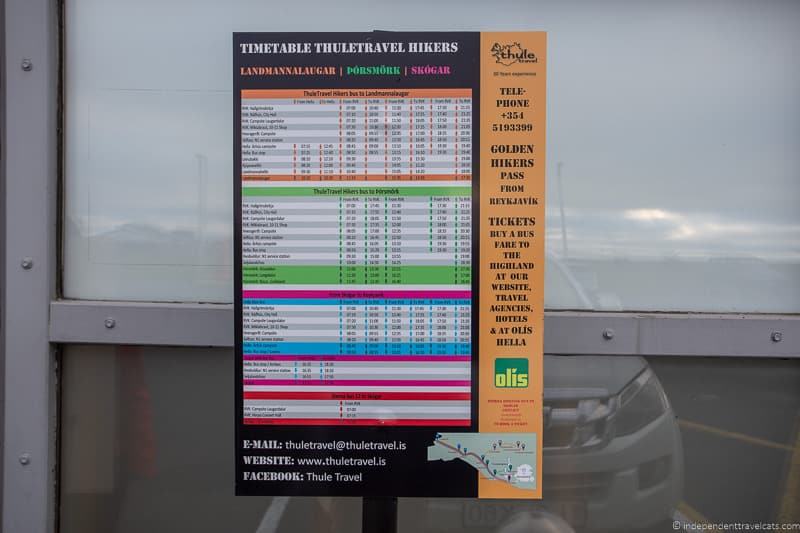
9. Travel as a Group
If you are considering traveling to Iceland alone or as a couple, you might consider getting some travel companions if you need to save money on the trip. Groups can make everything from cooking meals to apartments to rental cars to private tours less expensive. For example, a $600 rental car split between 4 persons is much more affordable than split between 2 people.
Maybe you have family or friends who are interested in visiting Iceland and willing to join you and split costs? Or if you don’t know anyone and are not averse to traveling with strangers, you may want to check out travel message forums such as this one to see if anyone else is looking for a travel companion to Iceland. Once in Iceland, hostels are a good place to find like-minded budget-focused individuals who may want to share the cost of a rental car or a grocery store bill.
Note that more is not always merrier. If you are traveling in a group of 5 or more adults, you will have more limited options in terms of both transport and accommodation. This could actually increase your costs of travel per person.
If you can’t find travel companions, be sure to compare your travel options. For instance, a group bus tour may seem expensive and beyond your budget, but the prices usually include almost all your major trip expenses including transportation, a guide, lodging, luggage transport, sightseeing, and breakfasts. These may end up working out as less expensive (or about the same cost) than doing it all yourself once you factor in all the costs, especially if you are traveling alone.

10. Do Your Research on Rental Cars
If you decide that you want to rent a car and drive in Iceland, you can save money by comparing car prices, minimizing rental days and understanding your car insurance options. You also want to do what you can to prevent any damage to your car as car services and repairs are expensive in Iceland.
If you are not sure if you want to rent a car or not, I’d compare the cost of renting a car (including insurance) with other options (e.g., joining tours or a Bus Passport). Car rentals are not cheap in Iceland and are not the best option for all travelers.
Compare Rental Car Prices
If you are thinking about renting a car in Iceland, you’ll want to compare prices to get the best deal.
Here are some places to check prices and consider booking:
- Northbound – This online marketplace focuses on rental vehicles in Iceland and is the one we recommend. The websites lists cars, SUVs, vans, and campervans from a number of rental agencies in Iceland. They also allow you to choose from various additional insurances that are unique to Iceland.
- Discover Cars – This is our go-to comparison car rental website for finding rental cars in many parts of the world.
- SADCars – This company rents out older model vehicles and is often the cheapest website. However, it has received worse customer reviews compared to other rental car companies in Iceland. We haven’t used them so can’t offer any personal experience, but may be an option to consider for those on a tight budget. Just be sure to check recent reviews first.
NOTE: You need to be at least 20 years of age to rent a car in Iceland and many companies require drivers to be at least 23 or 25 years of age. Extra rental fees are sometimes charged to drivers aged 25 or younger.
Book in Advance
Don’t wait to decide if you want to rent a car last minute once you get to Iceland, especially in summer. You’ll have fewer options and be at the mercy of the car companies in terms of rates and the remaining cars available. Rates are generally better online than if you call or walk into a rental car agency needing a same-day rental.
Minimize Car Rental Days
Save money by only renting the car for the days you will be actually using it to minimize the number of rental days. Do you really need a car for your entire trip? Organize your trip so that the days you don’t need a car fall together to save money.
For example, it is easy to catch a shuttle to and from the airport to Reykjavík and you can get around central Reykjavík by foot, bike, or public bus. You also don’t need a car if you are planning to take any full day tours such as to go on a guided glacier hike or bus tour out to the Highlands.
Make an Informed Car Insurance Choice
Let me preface this with the fact insurance in Iceland (as in most places) is complicated and we do not pretend to understand it completely or to offer any legal advice. But we will try to share the basics to get you started.
In Iceland you must have basic third-party liability insurance to legally operate a vehicle which is normally covered under the CDW (collision damage waiver) insurance included with your car or campervan rental. Be sure to check that this is included but just about every rental comes with this included in the price since it is a legal requirement.
The Basic CDW coverage generally includes the mandatory third-party liability insurance and accident insurance for the driver and the owner. It may also include additional things like vehicle theft protection.
The basic CDW that comes with most rental cars often comes with a fairly high deductible (~ $1,500 to $3,000) so an accident can still cost you up to that amount. You can generally decrease the deductible by paying a little bit more (we paid to decrease ours down to $0).
The basic CDW coverage included in rental car prices also usually does NOT include windscreen cracks, general physical damage, sand damage, wind damage, paint scratches, water damage, etc. Damage, such as windshield chips, dents, and scratches, are fairly common in Iceland given the gravel roads, wind, and large number of inexperienced drivers on the road.
Parts and labor are expensive in Iceland and these are often even higher when charged by a rental car company. So for instance a chipped windshield could cost you 75,000 ISK to 100,000 (~ USD $581 – $775) as they’ll need to replace the windshield, a dent from someone else opening their door into your car could cost you 50,000 to 200,000 (~ USD $387 to $1,551), and a damaged door from opening it into the wind could cost you 500,000 ISK ( ~ USD $3,878).
It is of course totally up to you if you want to purchase any additional protection beyond the legal amount required, but we would highly recommend getting coverage for at least the most typical kinds of damage, especially if you plan to have the car for more than a couple of days and/or plan to drive on any gravel roads.
The “Super CDW” insurance option upgrade typically includes a zero (or very low) deductible and includes all the general kinds of physical damage to the exterior of the car like paint scratches, dents, chips, broken door hinges, and windscreen cracks. This is what we purchased and it also included theft protection. This gave us much better piece of mind and what we’d recommend to most travelers to avoid any large surprise costs during your trip.
Another common add-on insurance option is “sand and ash protection”. This protects your car from any damage caused by sand or volcanic ash. This is a less common form of damage but sandstorms do happen in Iceland, especially on the South Coast. The primary damage here is that the sand (or ash) will scratch and strip the paint off your car and repainting a car is obviously going to be a very costly expense.
We declined the “sand and ash protection” and were just careful to check the road and travel conditions. You’ll need to use your own judgement as to whether this is something you want to purchase or not.
As with any insurance coverage, no insurance will cover you for any damage incurred during illegal driving such as off-road driving, speeding, drunk driving, and driving on closed roads. They also won’t cover you if you do anything not allowed under your rental car contract, which in Iceland often include things like driving on Highland F roads (some 4X4 rentals in summer are allowed but check your contract closely) or crossing unbridged rivers or streams. Be sure to check the rental car contract associated with your car carefully.
NOTE: If you have CDW insurance included with your credit card (some American credit cards come with this as a feature) or travel insurance, you can usually decline the CDW, but you cannot decline Third Party Liability Insurance or Personal Accident insurance as these are mandatory under Icelandic law. In most situations, it is best to just accept the CDW but you can contact your insurance company and the rental car company about your specific situation.
Regularly Check Travel and Road Conditions
Anyone driving in Iceland should be checking on travel conditions on a daily basis as the weather can change quickly in Iceland and can be pretty unpredictable. Not only will this help keep you safe on the road, but avoiding bad weather and poor road conditions can keep you from incurring costly damage to your rental.
Here are the two websites we recommend monitoring throughout your trip:
- Safetravel.is – safety website operated by the Iceland Association for Search and Rescue
- road.is – road conditions website managed by the Icelandic Road and Coastal Administration
Closed roads, storm warnings, sandstorms, strong wind warnings, flooding, avalanche warnings, etc. will all be noted on these websites.
If driving in the winter, we recommend reading our tips for driving in Iceland in winter .
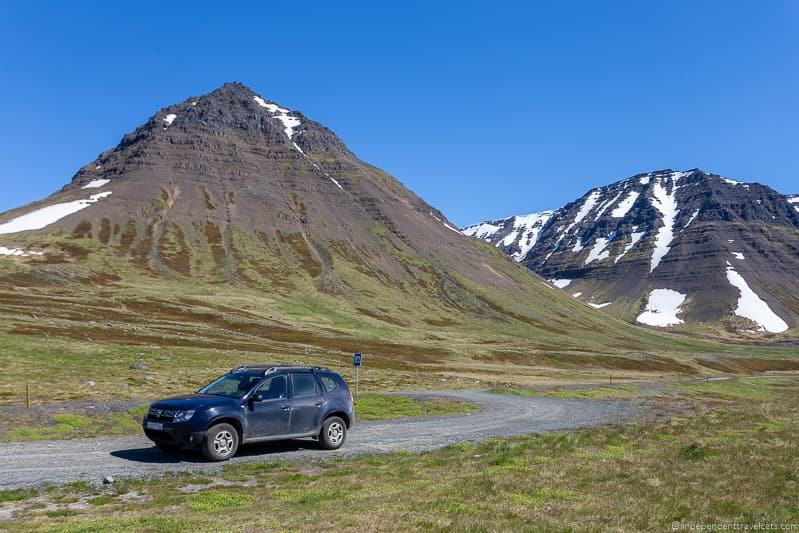
11. Consider Carpooling
A rental car or guided bus tour may be too expensive if you are traveling to Iceland on a budget. One way to save money is to join someone looking for passengers to share the cost or you can offer a ride to someone else. If you don’t have the money to rent a car yourself, you can find a fellow traveler to join you in carpooling on a website called Samferda .
The simple website allows you to put in a request for a ride (you don’t have a car, but want to join a carpool) or request fellow passengers going to the same place in Iceland (you have a car, but want passengers to join you). Be sure to be clear about the cost sharing expectations up front.
You might use this for a one-time travel need (e.g., getting to the airport) or even for your whole trip if you find suitable companions who want to travel to the same places. This is a good alternative to hitchhiking.
12. Pack Wisely to Avoid Unnecessary Purchases
Packing all the things you need for your trip will not only ensure you are prepared, but it will help you save money. It also pays to make sure you have proper protective gear (e.g., a drybag or waterproof cover) to protect expensive items (e.g., cameras, phones) from damage. We experienced this firsthand as waterfall spray caused damage to our camera’s WIFI functions.
It is easy to find high quality clothing and winter gear in Iceland but it is pricey. For instance I checked simple knitted hat prices in a number of stores and had a hard time finding anything under USD $55 (a similar hat would be priced around USD $15 in the United States). Other consumer goods like water bottles, towels, electronics, camping gear, etc. are also much more expensive in Iceland than most other countries.
So it is wise to do some research in advance to know what you’ll need for your trip. Then I’d recommend making a list to make sure you pack what you’d need to avoid having to purchase it in Iceland. We met several people in Iceland who had to purchase warmer clothing, waterproof shoes, or proper hiking gear in the country because they came unprepared.
Check the weather forecast in advance as well as right before you go to know what to expect from the weather. Check out some recommended packing list for the time of year you want to visit, such as this winter packing list for Iceland .
See what you need for any activities you want to do (e.g., snorkeling, skiing, birdwatching, golf, thermal baths) while in Iceland. You probably don’t want to have to have to rent or buy things like binoculars, gloves, swimwear, hiking poles, or ski goggles if you already own them.
No matter when you’ll be traveling to Iceland be sure to have warm layers of clothing (preferably at least a couple of wool items), comfortable waterproof hiking shoes or boots, waterproof and wind resistant outer layers, hat, sunscreen, swimwear (for spas and pools), and a warm jacket or coat. Even in summer, temperatures can be cool and you’ll need warm layers.
A towel is also recommended for most travelers. On our last trip, we packed 2 towels, a regular beach towel and a fast-drying travel towel just like this one . A towel is great for anyone planning to visit the geothermal pools as it will save you from having to rent a towel and many of the pools don’t offer towel rentals. A towel will also likely come in handy if staying in hostels or campsites and is good to use to dry off if you get soaked in the rain or by waterfall spray.
We recommend packing a drybag or waterproof cases (such as these ones ) for your phone and valuables, especially if you plan to visit pools, go on long-distance hikes, join boat tours, or do water sports. For those with pricey cameras, we recommend an inexpensive rain sleeve to protect them. Backpackers and hikers will also want to make sure they have a waterproof cover for their bags. These items will also help protect your valuables from the spray from waterfalls (if windy, the spray at some waterfalls can drench you pretty quickly!) and rainstorms.
Those traveling in the winter season (this period roughly lasts from November to the end of April) will want to be especially prepared for the rain, snow, wind, and colder weather. We have a winter Iceland packing list to help provide some recommendations and tips.
In the summer months (roughly June to end of August) it won’t generally be as cold so you don’t need full winter gear, but it can still be cold and it never gets hot here. So you’ll still want to be prepared for potential cold weather (check the forecast), rain, and strong winds. We were here for the entire month of June and wore wool baselayers on about 60% of the days as it was cooler and more rainy than a typical June.
For the summer, you’ll want to pack sunglasses (or a hat) and an eye mask.The midnight sun (where the sun sets only briefly) can make it hard to sleep well during the night so we definitely recommend investing in a comfortable sleeping mask . Many hotels, guesthouses, and apartments do NOT have proper blackout drapes or blinds. We also packed a drape clip (a few clothespins will work) to help close gaps in curtains and drapes.
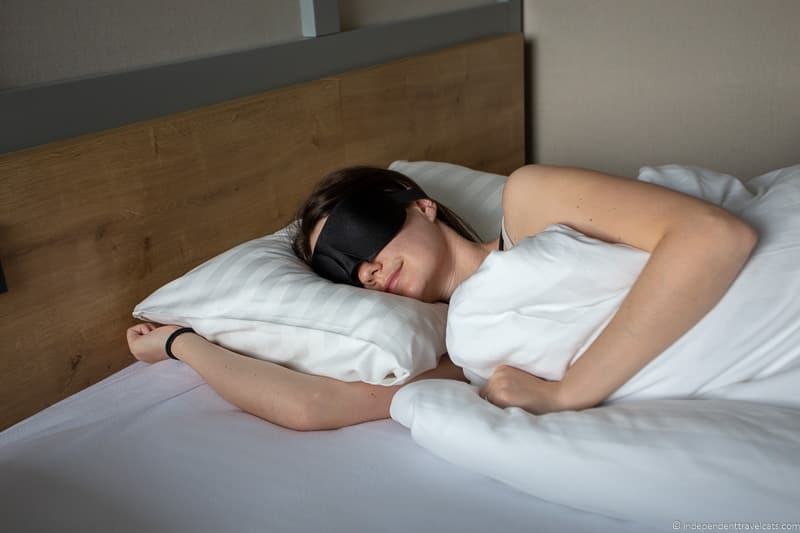
13. Seek Out Less Expensive Dining Out Options
There were no places in Iceland that we ate at that I would describe as “cheap” but there are definitely places you can spend less money than others. At a typical Icelandic restaurant, a starter and main course for dinner for one person will be around 6,500 ISK (~ USD $50) without drinks.
Throughout the country, the most inexpensive meals in Iceland can be found at grocery stores (e.g., pre-made sandwiches, wraps, salads, snack food), fast food chains such as Subway (located only in main cities and town like Reykjavík, Akureyri, and Egilsstaðir), local diners, and gas station restaurants. Many museums and attractions have cafés or restaurants, and these often offer reasonably priced options such as sandwiches, soups, waffles, and cakes.
Many people unintentionally go on a soup and bread diet in Iceland. Soup is often the least expensive option on menus (generally between 1,200 to 1,800 ISK) and offers a reasonably healthy option. Often you get a free refill (or even unlimited free refills!) of soup. Common soup options in Iceland (based on our experience) are fish soup, Iceland lamb soup, and mushroom soup.
Reykjavík is probably the best place to find budget eats in Iceland. You can find cheap eats at hot dog and sandwich stands as well as grocery stores and fast food chains. Bæjarins beztu pylsur is a popular hot dog stand that has been serving hot dogs since 1937. You can get an Icelandic hot dog for about 400 to 500 ISK. Waffles are another relatively cheap food you can pick up in many places.
If you have a car, another place you can get a reasonably priced meal near Reykjavík is IKEA ! Believe it or not, the restaurant within this huge Swedish budget home furnishings store is a popular dining spot for Icelanders because of its relatively low prices for food and alcoholic drinks. It is especially popular for those with families as they offer inexpensive children’s meals. We actually ate here on our first visit as we stopped to purchase a towel and were really surprised by how busy it was!
For those driving around the country, the best places for less expensive hot meals throughout Iceland are actually gas stations. Many of the fuel stations in Iceland (such as the Olis and N1 chains) offer both food you can grab (pre-made sandwiches, snack food, drinks) as well as restaurants serving hot food items such as hamburgers, hot dogs, pizza, fish stew, and paninis. You can get a hot meal for 1,500 ISK to 2,500 ISK.
The food varies across fuel stations based on our own experience from pretty good to not so good, but these places usually offer the best prices in town. Note that not all fuel stations include restaurants or stores, especially those in more remote areas, which may just be a set of automatic gas pumps.
Just be aware that if you are going to a familiar chain like Subway or IKEA, prices will still be higher than you are used to paying. For instance, a Subway sub in Iceland will cost you about double the price of the same sub in the United States, but it is still a good deal considering Icelandic restaurant prices!
If you are trying to set a budget for food, you could probably survive on a budget as low as USD $20/person/day for food, but you would have to work really hard at it! With a really low budget, you will probably need to cook your own meals (see section below), share meals with someone, or be stuck with limited and/or unhealthy options.
A more realistic, and not so restrictive budget, would be around $50/person/day for 3 meals a day. But even at $50/person/day you will still be limited, especially if you enjoy eating at sit-down restaurants. So your budget will really depend on how you want to travel and where you like to eat.

14. Cook Your Own Meals
If you book self-catering lodging or are planning to stay at campsites, you have the option to cook your own meals. Groceries are more expensive in Iceland than in most places in Europe (e.g., last time we were there it was USD $4 for a loaf of bread), but you can still save money if you go grocery shopping and cook your own meals compared to eating out at restaurants.
To get an idea of recent food prices, costs of alcohol, and restaurant meal costs (as well as other costs of living), you can check out this website .
Best Budget grocery stores in Iceland
Like in most countries, you can save money in Iceland by shopping at the lower priced grocery stores where the same items can be up to 50% less than in other stores. Budget grocery store chains we recommend in Iceland include Bónus , Nettó , Kronan . We recommend that budget shoppers avoid the 10-11 convenience grocery stores which are, on average, much more expensive than other grocery stores in Iceland.
Most grocery stores, including the 3 budget grocery stores above, have a budget brand for essential items. Look out for these items as they are often the least expensive option in that category (e.g., the least expensive mustard, coffee, or paper towels). For example in Bónus the budget brand is Euro Shopper and Nettó offers Coop and X-tra products.
Grocery bags are not free and plastic bags are not allowed to be sold to customers, so you can save a little money by packing a few reusable bags if you plan to do grocery shopping a lot while in Iceland. Or you can purchase reusable bags in the grocery stores.
How to Find Self-Catering Lodging
You have a lot of self-catering options, including hostels, apartments, and campsites that are geared towards those who want to do their own cooking. Most hotels, guesthouses, and B&B’s do not allow guests to do their own cooking.
Some apartments, hostels, and campsites also offer laundry service options, so if you are traveling for a longer time, that may help you save on hotel laundry service fees. See our guide to doing laundry while traveling for all kinds of ways to do and to save money on laundry.
Here are some good places to start your search:
- Apartments – Most apartments in Iceland come with cooking facilities and basic cookware.
- Hostels – Most hostels in Iceland come with shared kitchen facilities that allow you to cook your own meals.
- Vrbo – Many of the options on Vrbo come with a kitchen that allows you to cook your own meals. Be sure to read the House Rules before booking to ensure you are allowed to cook.
- Campsites – You can do rustic cooking if you have your own camping stove and some campsites provide shared cooking facilities.

15. Limit Alcohol
Due to high taxes and importation fees, alcohol is very expensive in Iceland, whether you purchase it in a store or order a drink in a bar or restaurant. In fact, alcohol prices in Iceland are about the highest in the world at the moment. The best way to save money is to not drink, but if that is not an option for you, you can try to seek out the cheapest drinking options.
First of all, the least expensive alcohol is usually available in the duty free shop at the airport. So consider buying your alcohol in either your departure airport (if allowed) or at the Keflavík International Airport once you arrive. For most people, the duty-free shop at Keflavík is going to be the least expensive and most convenient option.
It is often less expensive to purchase a full bottle of liquor or 6-pack of beer than to purchase individual drinks in a bar. However, you are limited in where you can buy alcohol in Iceland and you cannot purchase alcohol at grocery stores or fuel stations. In Iceland you can only purchase alcohol at the duty-free shop at the airport and at state-run stores called Vínbúdin . You have to be at least 20 years of age to purchase alcohol in Iceland.
If you want to go out, seek out happy hours where you can get find less expensive drink prices and 2 for 1 deals. We found that drinks could be up to 50% cheaper at Happy Hours. Note that most happy hour offers are in larger towns and cities such as Reykjavík (check out the Appy Hour app ) and Akureyri so you may have a hard time finding cheaper drinks in small towns or rural areas.
Drinking and driving laws in Iceland are very strict and you can be arrested for driving with a very low blood alcohol level. Drunk driving is considered a serious offense and fines (even for first time offenses) are very high. So be sure to wait to drink until you have stopped traveling for the night!

16. Drink Tap Water
Drinks are expensive in Iceland, but tap water is free and safe to drink throughout Iceland. The drinking water in Iceland is of a very high quality. If at any location you are unsure about whether the water is safe to drink, just ask.
In many cafés, fuel stations, and fast food restaurants, pitchers of water are often in a common area for guests to help themselves or are brought to the table in sit-down restaurants. If not, just request water when you order.
Bring a reusable bottle for water with you so you can fill it in sinks and water fountains and not need to pay for drinks or purchase bottled water. If you need to get a water bottle for your trip, we personally like this one and this one . You’ll be saving money and creating less plastic waste.
NOTE: The hot water in some places in Iceland, notably Reykjavík, is geothermal water that is pumped in straight from the ground so it has an odor and taste of sulphur. It is safe to drink but doesn’t taste very good and isn’t intended to be used for drinking. However, the cold water comes from a different source and is safe to drink without the odor or bad taste. So just let the water run cold before filling your bottle!
17. Use Fuel Discount Cards
If you are driving, fuel discount cards can save you a little money on fuel and gas station purchases.
If you are in a city or town that has multiple fuel stations, you can compare prices as some are less expensive than others. The two main brands we saw in Iceland were Olis and N1, but there are also others like Shell, Skeljungur, and Orkan. However, in reality, you are often not given many choices in less populated areas and you are lucky to find more than one station to choose from.
But one way to save money is to get a discount card to one (or more) of the fuel chains. To our knowledge (as of May 2022), both Olis and Orkan / Skeljungur offer discount cards in Iceland. There is a good chance that if you are renting a car or campervan, that your keys will come with a discount card or discount key fob.
We had a Olis discount card attached to our key fob from our car rental company (on both of our visits to Iceland), but you can also pick up a Olis discount card at the fuel stations. It gave us 3% discount on fuel and up to a 10% discount on the restaurant. The discount applies to almost everything in the fuel station which often carry a bit of everything includes snacks, car accessories, basic groceries, souvenirs, travel things (maps, guidebooks), and meals. The discount does NOT apply to some items like cigarettes.
NOTE: In smaller towns and outside of regular business hours, many of the gas stations are unmanned so you need to have a credit card with a 4 digit pin. If you don’t have a credit card or don’t have a PIN set up (recommend doing this before your trip), you can get pre-paid cards that will work at the pumps such as this N1 card .
18. Seek out Free things to Do
Whereas many of the activities, tours, and museums in Iceland can be expensive, there are also a lot of free things to do in Iceland.
Here are some ideas for free (and inexpensive) things to do in Iceland:
- It is free to visit many of Iceland’s most popular attractions such as waterfalls, beaches, gardens, public art installations, churches, monuments, geysers, and lava fields. You can easily create an itinerary that is full of free attractions.
- In Reykjavík, there are loads of things to do for free. For instance, you can take a “free” walking tour (donations are expected), marvel at the Hallgrímskirkja (free to visit, although small fee to climb church tower), taste the offerings at the Hlemmur Food Hall , visit the botanic garden, hike around the Öskjuhlíð, or explore the weekend Kolaportið flea market .
- Make time for free (or inexpensive) outdoor activities like hiking, swimming, snowshoeing, scenic drives, searching for the Northern Lights, birdwatching, climbing, biking, or picnicking. If visiting in winter, check out our Northern Lights photography guide .
- Take advantage of any amenities offered by your hotel. It sometimes pays to stay at nicer hotels. For instance, some hotels offer free on-site hot tub and spa access, swimming pools, binoculars you can borrow for birdwatching, or free bike or canoe rentals.
- You don’t have to pay a lot (or even anything) to visit a thermal pool in Iceland. For instance, the Nauthólsvík beach and hot pool in Reykjavík is free in summer, and you’ll find free (or inexpensive or donation only) small hot pools throughout less populated areas of Iceland (e.g., Westfjords). Public city pools, found in almost every town in Iceland, are inexpensive and a great place to meet locals.
- Be sure to check for free museum days, festivals, concerts, or other events that may be taking place during your trip. There is almost always something free taking place, especially on summer weekends, in cities like Reykjavík and Akureyri!
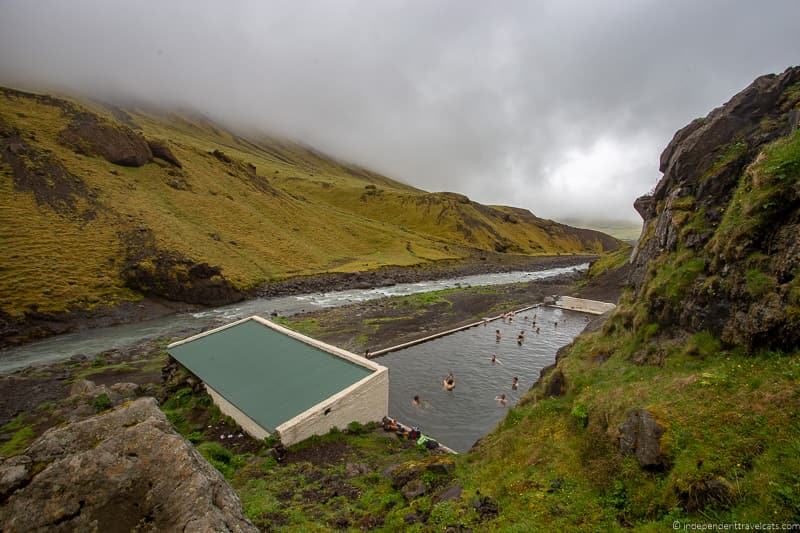
19. Take Advantage of Discount Passes & Coupons
One way to save money in many destinations is to check for available discount passes, special offers, and coupons. We list some of the ones we know about below, but we recommend keeping your eyes open for deals as you travel. For instance, a number of attractions offers discounts to other nearby attractions with the purchase of a ticket.
Here are some discount cards and coupons to consider in Iceland:
Reykjavík City Card – The Reykjavík City Card offers free entry to several museums and attractions within Reykjavík including Árbæjarsafn (open-air museum), Reykjavík Zoo & Family Park, National Museum of Iceland, and the National Gallery of Iceland. It also includes free access to the city’s public thermal pools and saunas, free bus service within the city, and restaurant and attraction discount offers. Although not designed for all travelers, it can save you quite a bit of money if you plan to visit several of the included attractions while in the capital and take the bus. We’ve used it on our first trip and saved money using it.
Icelandic Coupons – This is a discount printed brochure (and now also in app form) that gives you a number of discounts to a variety of attractions and services in Iceland geared to travelers, including restaurants, car rentals, spas, bars, and tours. The coupon book is cheap (about 1,500 ISK) and you can often get your money back by using one coupon. The best part is that you can check most of the coupon deals online before purchasing it to see if it will save you money. You can purchase the new app online or the coupon book in Iceland at these locations .
Reykjavík Art Museum – This isn’t a pass but the museum has three separate locations in the capital and if you purchase admission to one site, you have free admission to the other 2 as well. The admission ticket is valid for 24 hours for Hafnarhús, Kjarvalsstaðir. and Ásmundur Sveinsson Sculpture Museum. A good value for art lovers.
Camping Card . – Already mentioned under the camping section earlier, this card should be considered by anyone planning to camp in Iceland. The card allows for up to 2 adults (plus up to 4 children under age 16) to camp for up to 28 nights total (in a tent or campervan) in any of the participating 40+ campsites! You can only stay overnight for up to 4 nights in each campsite.
Hostelling International Membership — If you are planning to primarily stay in hostels, you might consider becoming a member of this non-profit hosteling organization. Many hostels in Iceland (as well as around the world) are part of the Hosteling International group and members save at least 10% on the hostel rate. You can purchase a low-cost 12 month membership at any participating hostel or buy it online before your trip.
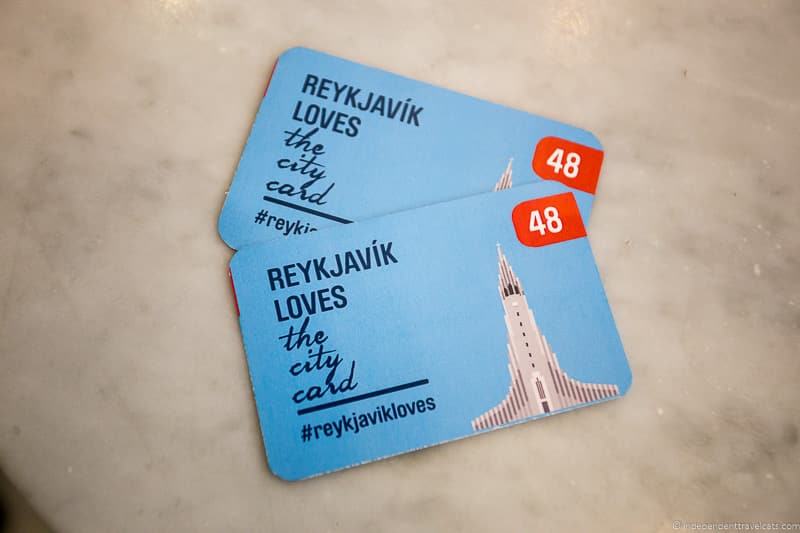
20. Spend Money on Tours & Experiences You’ll Remember
If you are traveling to Iceland on a budget, you will want to spend your money on experiences that are special. Luckily there are loads of free things to do in Iceland! But we recommend that all travelers, even those on a tight budget, to Iceland choose one or two special things to splurge on while in Iceland.
For instance, for many people, the Blue Lagoon is a must-see splurge experience. But for others it might be a glacier hike , snorkeling between the teutonic plates , a reindeer safari , a whale & puffin boat watching tour , a Northern Lights Jeep hunting tour , a beer walking tour , or exploring an ice cave .
Or maybe it is a day exploring the museums in Reykjavík, an evening performance at the Harpa , a night in a “space pod” at the Galaxy Pod Hostel , or a fancy dinner out.
Let your budget and interests guide you in your choices. Just choose experiences that you think offers good value and will be something that you’ll remember long after the trip!

21. Be Prepared!
Finally, we’d like to just reiterate that it pays (literally) to do a little research and be prepared for your trip. One of the main ways people end up spending more than they expected is because they didn’t do much travel research before their trip. People who show up in a country unprepared are much more likely to end up spending more money, especially in an expensive country like Iceland.
If you are traveling to Iceland on a budget, you don’t have to plan out every day of your trip, but do at least a little homework. Read a little about the culture and history of Iceland, know what places you definitely want to visit, understand the currency conversion rates and average prices for things, book things like must-do tours in advance, check the weather forecasts and road conditions, and pack the things you’ll need like waterproofs, warm clothing, and swimwear. Investing a little time in advance will help you save money and travel smarter in Iceland!
You can find loads of information on travel blogs like ours (you’re already doing your research!!), the Iceland official tourism website , and in guidebooks such as this Lonely Planet guide and this Rick Steves guidebook . If purchasing a guidebook, choose one that has been published (or edited) in the last year or two.
Just note that there is a lot of outdated (and not so accurate) information out there, particularly on message boards and travel blogs. If you not sure about something and are finding conflicting information, keep searching and try to check a more authoritative source (e.g., official tourism website, well-regarded recently published guidebook, Safe Travel website , the Environmental Agency ).
If you have any questions, feel free to reach out to us. We don’t know everything but we’re more than happy to give you our own travel advice based on our travels in Iceland. We also have contacts in Iceland and are happy to try to point you in the right direction for anything we don’t know ourselves!
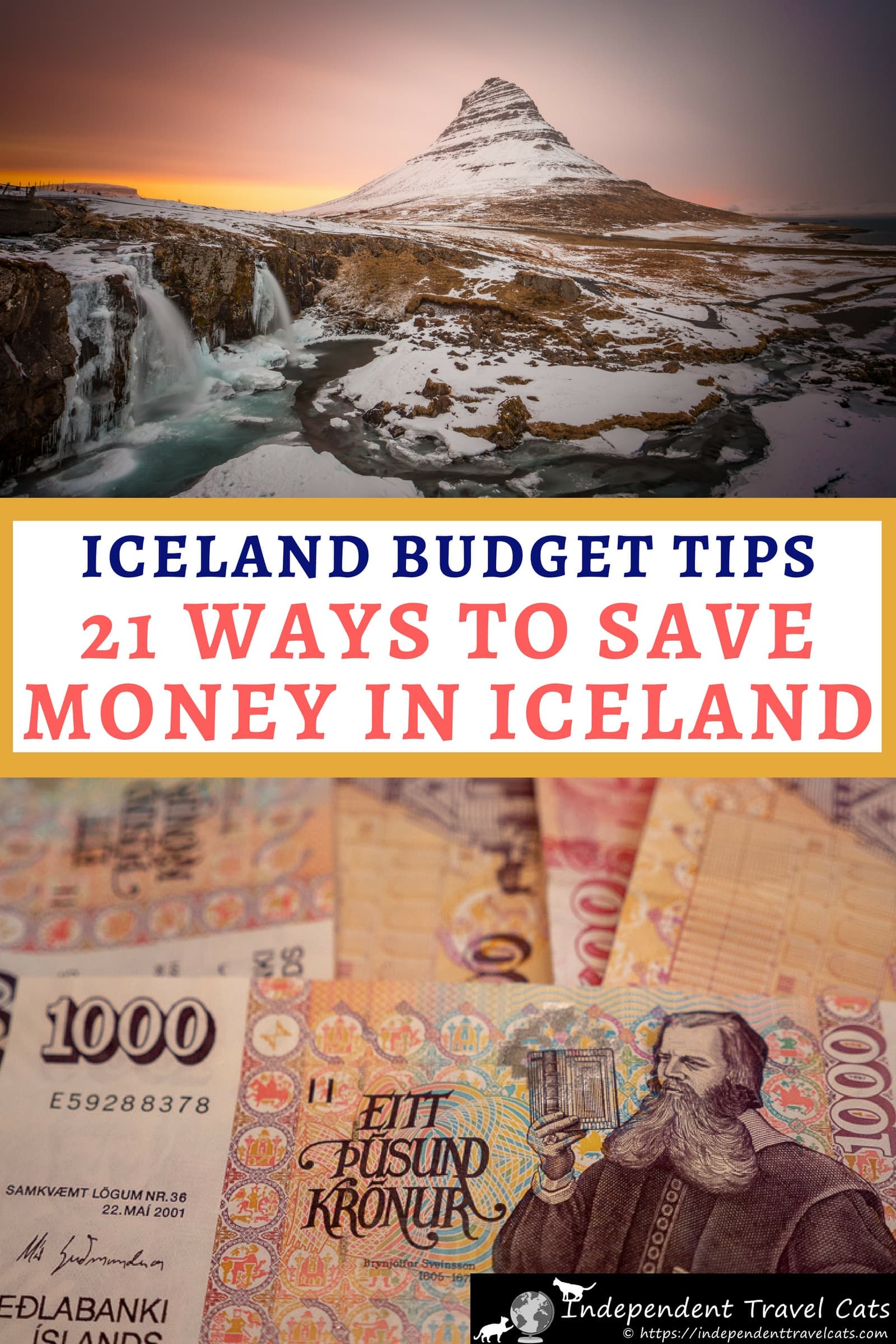
So that’s our Iceland on a budget guide to how to save money in Iceland! Have you been to Iceland? If so, do you have any money saving tips of your own? If you are planning a trip to Iceland, feel free to leave us any comments or questions in the Comments section below. We love hearing from readers!
Share this Post!
There are 96 comments on this post.
Please scroll to the end to leave a comment
Greig Millar Post author
October 16, 2022 at 2:52 pm
Great advice, really clear and helpful! I’m planning a trip to Iceland for my wife’s 40th in February and there is so much to do! We will only be able to stay for 3 days and neither of us have driven abroad before. Looking for your opinion on what the must does are on our visit and ones we can get to easily from Reykjavik.
Jessica & Laurence Norah Post author
October 17, 2022 at 7:45 pm
Glad that our posts have been helpful. I am sure your wife is going to love a trip to Iceland to celebrate her birthday.
So do you have 3 full days total in Iceland? If that is the case, then I’d probably recommend just basing yourself for all 3 nights in Reykjavik. Maybe one day do Blue Lagoon (this can be done on way or to the airport) and attractions of interest in Reykjavik itself. Or if on a small budget, consider doing one of the nice city geothermal pools instead of the Blue Lagoon. Then one day out to the Golden Circle sites (such as Þingvellir National Park, Gullfoss waterfall, the geysers Geysir and Strokkur, Kerid crater). And a third day you could go out to see some of the South Coast highlights (such as Lave Centre, Seljalandsfoss waterfall, black sand beaches, and maybe even all the way out to Jökulsárlón Glacier), or alternatively you could go northwest and see some of the Snæfellsnes Peninsula.
You could do the drive each day from Reykjavik and find lots of things to do. The Golden Circle sites, Blue Lagoon, Borganes, and some of the waterfalls etc. are all easy day trips. But if you want to head out all the way to the glacier lagoon, that is full day of driving so that is best done either as an overnight trip or book a day tour so you don’t need to worry about the drive back.
If you decide to drive and want to head out all the way to the glacier lagoon, I’d probably do one night in Reykjavik (to go to Blue Lagoon and visit city attractions), one night around Selfoss or Hella (after visiting Golden Circle sites), and then one night in Vik (after driving out to glacier lagoon [although this is a pretty long drive so you can decide if you want to go out that far or not], but this is pretty long drive from Selfoss/Hella and back to Vik). Then you’d need to drive to the airport from Vik which is about a 3 hour drive.
Here is a 3 day Iceland itinerary for those who just have 2-4 days in Iceland that I think might help. It can be followed if you are driving or taking tours.
But really if you just have 3 days, it might make sense to just book tours and I’d price it out and weight the pros and cons. This would allow you to just stay in Reykjavik all three nights and not have to move hotels. You would also not need to rent a car or worry about driving, insurance, or parking. If you do that, I would just choose a central hotel that is within walking distance (or easy bus ride) of any city attractions you want to visit and tour bus pick-up point (many will pick up from central hotels).
No matter what you choose, I ‘d recommend planning at least one or two activities, whether that is a glacier hike, ice cave visit, snorkeling, boat ride, whale watching tour, Northern Lights tour, geothermal pool, snowmobiling, horseback riding, food tour, etc. Activities can be a bit pricey but are really worth doing one or two.
Anyway, hope that helps give you some ideas. Feel free to follow-up and happy to try to give more advice.
Best, Jessica
October 18, 2022 at 2:15 pm
Hi Jessica, Thanks for replying your thoughts/suggestions have really helped. We arrive on Saturday the 11th of February at 3pm and leave on Tuesday the 14th at 7.30 so it’s really 2 and a half days. This is where we are staying https://www.booking.com/hotel/is/skolavordustigur-apartment.html?aid=1447673;label=ITC Booked central like you suggested just now need to book the circle and blue lagoon trip plus a northern lights experience. Do you have any suggestions on the best tours/operators and the must sees in Reykjavik city centre, I think we will spend Saturday afternoon exploring. Thanks Greig
October 21, 2022 at 4:57 pm
So that is a a great location in Reykjavik. Since you have limited time, I’d just do a little research on any things you really want to see in terms of museums, attractions, etc. But you are within walking distance of Hallgrimskirkja (the main church), the National Gallery, the National Museum, the Sun Voyager sculpture, the big concert hall, Hljómskála Park, etc. so you can see a lot without needing a bus or taxi. You are about a 25 minute walk (or short bus or taxi ride) to the harbor area which has some nice views, where the whale watching tours leave, and where you’ll find a few museums (Whales of Iceland, Maritime museum, Saga Museum). You are also a 10 minute walk from the main bus station where most of the buses leave for the airport, Blue Lagoon, etc.
In terms of where to look for tours and tour companies, there are several tour operators in Iceland, some big ones being Grayline, Reykjavik Excursions, and Iceland Travel. But we generally recommend looking at tours on GetYourGuide and GuidetoIceland for options and comparing reviews and pricing.
Some tours that may work for you are Blue Lagoon & Northern Lights tour , a classic Golden Circle tour with Kerid Crater , a Golden Circle tour that also includes the Blue Lagoon . So those may give you a good starting point.
For your time at the Blue Lagoon , since this is a pricey experience for many, I would just make sure that whatever you book you have plenty of time. You’ll want a minimum of 2 hours but some people like to relax and spend more time there so if you book a timed tour, just be sure you have the amount of time you want/need there to really enjoy it. You can also buy bus tickets to just go to the Blue Lagoon on a bus such as this one or book transfers to or from the airport that include the Blue Lagoon if it is not included in a tour you decide to do. Just note that if you buy just a bus ticket, you will also need to book your admission ticket to the Blue Lagoon itself.
Hope that helps! Jessica
Michelle Post author
October 11, 2022 at 8:39 pm
Do they have any tours to all parts of Iceland with many stops / over nights etc this site is so helpful especially when needing to travel on a budget . Want to see the places where not many tourists go , too and do the perimeter of the whole country somehow with a tour or any suggestions . Thanks you . wanting to go in late September / early October when it’s cheaper and less crowded .
October 12, 2022 at 3:09 pm
Hi Michelle,
We are glad that our travel articles in Iceland have been helpful in planning your upcoming trip to Iceland. We are happy to try to give you some advice on your trip.
It sounds like you are most interested in doing a trip around the Ring Road. We would suggest at least 7 to 8 days for that trip to ensure you have time to see a number of the highlights. This is a popular tourist route however, but going in the off-season will mean it will be less crowded.
Can you give us some more info to better help you:
1. How many days are you planning to be in Iceland? 2. How many people are traveling? 3. Are you looking to join a guided tour that includes all your transport? 4. What is your budget for the trip? 5. What kinds of things are you most interested in seeing/doing?
Jack Post author
June 19, 2022 at 1:25 am
Thank you for sharing this post, I am planning to visit Iceland soon. I have heard that one of the most helpful tips is to learn some Icelandic. It is very rare language and locals will appreciate that a lot if you can say something in their language 🙂
June 19, 2022 at 7:24 am
You’re very welcome and hope our advice is helpful in planning your trip to Iceland.
Learning some greetings and phrases in a local language is always a good idea and a nice way to show some effort.
However, in Iceland, almost everyone speaks English (I think over 90% of Icelanders) so if you speak English, you will have no issues communicating with people, especially as a tourist. Also, just to note, most of the foriegn born workers (who make up a decent percentage of workers in the hospitality and tourism industry) don’t actually speak Icelandic so if you get a blank face to an Icelandic greeting, that might be why 😉
Wishing you a great trip to Iceland, and just let us know if you have any questions!
Angie Neis Post author
May 23, 2022 at 4:46 pm
Hi Jessica, My family and I are planning a 14 day trip around Iceland this July. I would like to see the best off the beaten path hot springs. Which do you recommend?
May 25, 2022 at 6:54 am
It will depend on where you will be in Iceland and the age/physical ability of those in your group as some do require a bit of hiking to reach.
The hike up to the Reykjadalur valley hot springs is a popular one if looking for a natural setting but still safe (just heed the signs and be careful as some spots can be way too hot). The hike takes about 1 hour each way I think to reach the bathing area.
One of our faves was Laugarfell – two small hot springs located in a lovely setting well away from the main roads. No hiking required to get here. Small fee to visit and there is a changing room, cafe, and a place to stay overnight. There are also great hikes from here, we particularly recommend the waterfalls trail. The nearby Wilderness Centre is a great place to visit (they have a museum exhibition) and to stay (offer historical accommodation) and they have their own hot springs spa that guests can use. A great place to stay for a couple of days if looking for something different. We really enjoyed staying in this area. Need a 4X4 in this area and often not accessible in winter months.
Other small ones to consider are Seljavallalaug Swimming Pool, Hjalteyri Hot Tub, Hofsós Swimming Pool, Laugavallalaug hot spring, Krossneslaug, Gvendarlaug, and Grettislaug thermal pool. We’ve been to most of these.
There are also, of course, the nicer ones like Blue Lagoon, Krauma Baths, Secret Lagoon, Sky Lagoon, etc. If looking for an alternative to the well-known Blue Lagoon, the closest is Mývatn Hot Springs.
I’d also say that the public geothermal swimming pools are great (there are many in Reykjavik and normally one in each larger town) and were not crowded at all in the middle of the days when we visited. They have great facilities, are relatively inexpensive, and are where most Icelanders swim. The Nautholsvik Geothermal Beach is also an interesting option as it has an outdoor beach area in Reykjavik.
Hope this helps you get started! If you have more info on what type of spring or which area of Iceland you are looking, happy to provide more thoughts as you plan your trip to Iceland. There are just so many of them and we’ve been to over 20 so hard to narrow down as each is a bit different.
May 25, 2022 at 9:25 pm
Thank you Jessica, that helps. Is it hard to find open campgrounds town to town?
May 26, 2022 at 4:08 am
We give a couple of links to websites that list a lot of the campsites in Iceland within the Camping section above. So I would use those lists to tentatively plan where you want to stay. You normally don’t need to (and often can’t) book in advance, especially if you don’t need any hookups. But you can also call in advance on the same day to check to make sure they have space and are open. Most campsites are seasonal and are generally open from May to September.
Normally campsite availability is not a big issue, but I would recommend planning to arrive before dark to find a spot and make you have a place to stay the night.
You might check out the costs of the mentioned Camping Card and see if that would save you money based on your trip plans. The Camping Card allows you to stay at about 40 campsites around Iceland and also gives you a few discounts such as on gas and food.
Jan Post author
November 8, 2021 at 10:16 am
This was amazing! I’ve been reading this over and over and I know you published this article a while ago. I’m graduating college this year with my boyfriend and decided to take a trip to Iceland on January 4th, 2022. We booked it at this time because we heard January is the best time to see the northern lights and there was practically no one there. However, learning more, we realized there are less daylight hours and much more snow. Any tips on places we should check out/advice on how to make the most out of January timeline? Additionally, do you have your favorite itinerary for a 6 day self drive?
November 8, 2021 at 11:33 am
I am excited to hear that you are planning a trip to Iceland in January! We have several articles on traveling to Iceland in winter and have visited in both winter and summer.
While there are fewer visitors in winter, it is still often pretty busy, especially in popular areas. Before the pandemic, the numbers were increasing each year. So I’d still expect crowds, especially at the main tourist hotspots like waterfalls, beaches, viewpoints, museums, etc. Late fall and winter are the best times to have a chance to see the Northern Lights because of the greater hours of darkness, but being able to see them is still very dependent on solar activity and weather during the time of your visit.
We have a 7 day Iceland self drive itinerary that should be helpful to you as it is specifically designed for winter and winter weather. We’d recommend concentrating on Reykjavik and south coast (and also west if have time) for your trip. It sounds like you have 6 full days (or do you just 6 days total including days you need to fly in and out?) so you’ll need to cut a day. If you have more like 5 full days, then I’d consider this 5 day Iceland itinerary instead which works well year round.
I’d also recommend booking any activities you want to do in advance as many require guides and/or equipment to be able to do, whether it is snowmobiling, visiting an ice cave, winter hiking, or going on a whale tour, etc. We have a guide to a number of the most popular things to do in Iceland in winter here.
I’d also recommend reading this article if you plan to rent a car and drive yourself for Iceland driving tips for winter . If you decide to drive yourself, you want to make sure you rent an appropriate car, know about winter driving, and have good insurance coverage (car repairs in Iceland are very expensive).
You are going to have shorter hours and less time to see and do things. Weather can also be worse with rain, snow, or sleet and potentially bad road conditions. In early January, they are going to be very short in terms of the time between sunrise and sunset (4.5 to 5 hours), so that is a good thing to be aware of when you plan your trip and activities. You’ll want to try to ensure you get what you want to see done in between those times and not to spend too much of your daylight hours driving in the car. You can also try to fit in inside activities in the morning or late afternoons when it’ll be dark outside. The best thing you can do is to just plan ahead and book any sightseeing and outdoor activities during those daylight hours. You won’t have much time for sightseeing compared to those visiting in summer, so you’ll want to make the most of it and focus on specific areas each day. Prioritize what is most important for you to see and do each day and focus on that.
For the winter weather, you just need to make sure to dress appropriately and bring the proper winter gear. You can check out this article about what to pack for Iceland in winter for tips.
Anyway, hope that helps answer all your questions. If you have any further questions, just let me know and happy to help!
Wishing you a wonderful trip! Jessica
Luana Post author
July 6, 2021 at 4:38 pm
Thanks for the tips I’ve always wanted to travel to Iceland but I started looking at the prices and my financial conscience and I’m about to give up so far, thank you so much
July 7, 2021 at 1:29 pm
I am glad our budget tips for Iceland are helpful to you. Obviously, it is not a place you might want to travel on a really tiny budget (I’d recommend saving up if your budget is really small and go later or find a cheaper alternative destination) but if you have a decent budget to cover the costs you can definitely do a lot of things to save money whether it is avoiding alcohol, making your own food, getting passes and discount cards, staying in budget accommodation, taking public transit, etc. The biggest thing you can do is to plan ahead, research costs, and book the big things in advance so you know the costs upfront.
If you have any questions as you plan your trip to Iceland, just let us know!
Maggie Hatch Post author
January 5, 2020 at 3:02 pm
Thank you so much for this informative post. My husband and I are hoping to book travel 4/25-5/2 2020 from the US. Do you think the 7 day ring road intermarry would be possible? And do you have any advice for us? We are young 60s, love natural beauty and adventure. Thank you in advance. Maggie
January 7, 2020 at 7:39 am
There can still be snow/ice in April/May so that is something to keep in mind. There will almost certainly still be snow in the Highlands areas but the F roads there are closed anyway during those months.
You can do our recommended 7 day Ring Road itinerary (it is best if you have 8 days for it). But just note that it means moving each night and quite a bit of driving, and as noted, road conditions can still be bad at that time of year. It is a good way to see the highlights and do the Ring Road.
If you don’t want to drive yourself, there are also tours that follow the Ring Road (with a few detours) such as this 9 day tour , and this 6 day tour .
But if you want something more slowly paced and more focused, we’d recommend this 7 day Iceland itinerary which is great for that time of year. It focuses on western and southern Iceland with some time to explore Reykjavik.
Another idea is to consider just choosing a region or two and concentrating your explorations there. This is a more relaxed approach and you’ll get to explore a region more in depth. If you are most interested in hiking, wildlife, or water activities, I’d definitely recommend considering a trip a little bit later in late Spring/early summer.
Iceland has natural beauty all over and the south is really scenic but is the busiest area of Iceland in terms of tourism. If you are looking for less busy regions to explore, East Iceland and Westfjords are two beautiful areas that get fewer visitors and have a lot of undeveloped natural areas. So you might consider one of them.
If East Iceland appeals, we’d recommend considering spending a few days at the Wilderness Centre in East Iceland, it is a museum with accommodation on a farm with lots of activities possible like trekking, horseback riding, Icelandic home cooked meals, stargazing, hot springs, reindeer spotting, etc. We stayed there and can highly recommend it if you are looking for something a bit different.
Anyway, hope that helps give you some different ideas, but it really depends on how you like to travel and what is most interesting to you.
Just let us know if you have further questions as you plan your trip to Iceland. Another good place to get itinerary ideas and advice is our private Facebook group – a friendly group for readers to talk about travel and photography – many of the folks in there have been to Iceland.
Mandy Post author
October 22, 2019 at 8:53 am
Great article! ?? Thank you for the information. I’m travelling to Iceland the first time with my partner and landing at around 10:30pm on 25 Dec. We rented an apartment on Laugavegur 86. The host tell us to take the flybus from the airport to only the BSI air terminal down town Reykjavik, then take a taxi to a guesthouse on Laugavegur 41 to get the keys then onwards to the flat Laugavegur 86-94 (They will pay for the taxi). It will be the Christmas evening. I am concerned if there will be any taxi at the terminal at that hour of the day? The private transfer I have checked is super expensive. Any advice would be very much appreciated!
October 23, 2019 at 11:16 am
The Flybus usually runs according to the flight schedules since they know when the major flights are arriving, but I would definitely check the schedule (to ensure they will be running as normal that day). You can book your ticket in advance.
For the taxi, I think you will be able to get a taxi from the bus terminal on Christmas evening but it may be more difficult than usual as most Icelanders spend Christmas with their families. I’d try to schedule with a taxi company in advance if you know the time you will need to be picked up. Or just have the phone numbers for local taxi companies written down or in your phone so you can call once at the bus terminal in case they are not waiting on arrival. It may also be a good idea to give them a call in advance to make sure they are running on Christmas Day as you don’t want to have to spend a lot of time trying to arrange a ride late at night.
If none of the taxi companies are running (unlikely but good to check before your trip), I’d let your hosts know that you can’t find one and see if they can help you find one or if they are OK paying for a more expensive private transfer arrangement.
Wishing you a wonderful trip to Iceland, Jessica
Blanche Post author
September 25, 2019 at 6:28 am
Hi Jessica and Laurence. This is an awesome guide to Iceland.
First, I’m wondering about credit card usage. Is a PIN really necessary? Or are charge and sign credit cards accepted there? Online articles on these are confusing.
Second, where is the best place to change currency to krona?
Thanks so much.
September 26, 2019 at 1:23 pm
Hi Blanche,
Yes, I think that most places in Iceland can still take the chip and signature credit cards. However, if you are planning to use unmanned gas stations, ticket pay stations, etc. they may not work. So I’d stick to places where there is staff available in case your card is declined.
We just used our debit cards to take money out of ATMs in Iceland to get krona. We find this is normally the best way to do it. ATMs are fairly easy to find in Iceland. We normally use ones attached to a bank when possible, but you can also find them at fuel stations, the airport, etc. Some debit cards and credit cards do not charge foreign transaction fees and if you have such a card, I’d recommend using that when taking out money when traveling abroad. If you are not sure, I’d check with your bank.
Sharon Townsend Post author
September 20, 2019 at 10:19 am
This is a brilliant, informative travel blog for anyone wanting to visit Iceland ! Many thanks for all the information and tips.
September 20, 2019 at 11:55 am
Hi Sharon, Thanks for taking the time to let us know it has been helpful to you! Just let us know if you have any questions as you plan your trip to Iceland. Happy travels, Jessica
Barb Penttila Post author
September 12, 2019 at 4:14 pm
I found your blog very helpful. My husband and I are going to be in Iceland morning of Oct. 12 to noon of Oct 17. He wants to rent a car and drive around the entire country. Is this feasible at that time of year? Also how much daylight will we have?
September 13, 2019 at 1:42 pm
Glad you are finding our blog helpful in planning your trip to Iceland. Now, is it possible to drive around Iceland (I am assuming you mean the Ring Road) in 5 days in October. However, we’d not recommend it. We’d not recommend trying to drive that much any time of the year, just as you will spend way too much time driving and in hotels, and not have enough time to really explore too much along the way.
We’d recommend at least 5 days just explore the main South and Western parts. So I’d recommend choosing an area or two of Iceland you want to explore and do that instead of trying to drive around the country. Or consider staying for longer, we’d recommend at least 7 full days for that drive and you can see our recommended 7 day Ring Road itinerary here .
October weather is generally OK for driving, just check the road conditions before you set out each day. You’ll have about 9.5 to 10 hours of daylight each day. I’d dress and pack for cool weather. Rain and strong winds are common.
With the time you have, I’d recommend taking a look at our 5-day Iceland itinerary and our 7-day Iceland itinerary . Both are designed for all year round, but obviously you’ll need to take into account daylight hours.
Hope that helps!
Ann Flannery Post author
July 28, 2019 at 3:44 am
Hi! My husband and I are self driving in Sept- do you suggest exchanging money or are we able to use credit card everywhere? We are doing the Ring Road. Thanks, Ann
July 28, 2019 at 6:55 am
Hi Ann, I would recommend maybe taking out the equivalency of USD $100 in Icelandic krona your first day so that you have local cash to use for any places that do not accept cards, the card readers are broken (this happened to us a couple of times), your card doesn’t work for any reason, to leave tips, etc. We recommend that in any country you travel to always have a bit of local cash.
But almost all places in Iceland accept credit cards for payment so you shouldn’t need to use cash often (if at all). If you find you have not used the cash by the end of your trip, I would recommend paying for things on your last day in cash as it is very difficult to find places that will exchange Icelandic krona outside of Iceland.
If you need more cash once you start your drive along the Ring Road, you can find ATMs at many fuel stations, banks, etc. along the route in the bigger towns.
Rahul gopi Post author
July 26, 2019 at 11:30 pm
Beautiful place! Lovely pictures! seems like a country worth visiting.
July 27, 2019 at 1:06 pm
Hi Rahul, Yes Iceland is definitely a beautiful country and I hope you have the chance to visit! Best, Jessica
Zara Post author
July 14, 2019 at 10:21 am
Thank you so much for all this helpful info-the first time I’ve heard of the equivalent of hop on/off bus here. Curious if that plus Airbnb would be cheaper than camper van for 2-3 people. If camping is doable in August I know that’s obviously be the cheapest-as long as the bus goes to the camping sites. What are the must sees to put up with the crowds? Otherwise I’m perfectly fine w the road less traveled if you have any refs. You already gave me a good alternative to the blue lagoon.
July 17, 2019 at 1:13 pm
Yes the summer buses can be great especially for hikers and those wanting to explore the South Coast of Iceland. I am not sure if it would be cheaper to do Airbnb + bus or campervan and I would compare rates as it will depend on campervan rates for your dates as well as availability of Airbnb spots near the bus routes.
But yes if you are up for tent camping, that is probably going to be your cheapest option in Iceland. August is a good month for camping as it is warmer. The issue with Airbnb is that you will need to make sure places you book are close to bus stops. You will want to check the route and make sure it corresponds to the places you most want to go/stay. The buses do stop near some campsites so it is possible to do buses + camping as well.
I do think many of the Golden Circle sites are worth visit as well as some of the major waterfalls, but there are so many waterfalls in Iceland that you can also see lesser known ones as well. Glacier Lagoon is also a really pretty site that I think is worth the crowds to see. The Snæfellsnes Peninsula is a really scenic area but can be very crowded in spots.
The least crowded areas of Iceland are East Iceland, the Westfjords, parts of the north, and the inner Highlands. However, even if you are focused on the more popular and most visited South and West, you can still find places to escape the crowds.
I’d choose at least one museum during your trip to learn more about the country and its culture. The Skogar Museum, Herring Era Museum, and Árbær Open Air Museum are a few favorites – museums tend not to be that crowded.
One thing I’d recommend splurging on is at least one cool experience whether that is a boat tour, ice caving tour, special jeep tour, food tour, cooking tour, kayaking, wildlife tour, etc. I’d find an experience everyone is interested in and do that. We really enjoyed the tours and they are some of our most memorable experiences.
Hiking is great in Iceland during August and free 😉 The buses are ideally situated for hikers and you’ll find both short and longer hikes. Hiking is popular in the summer but the trails are not nearly as busy as popular tourist attractions such as the Golden Circle sites and popular waterfalls and beaches. I’d ask around locally where you are staying for suggestions for lesser known routes and trails if you are less interested in the popular trails.
I’d also definitely recommend at least a day exploring the capital city of Reykjavik, there are many attractions but the city is worth it even if you don’t plan to visit any particular place. You can explore it by foot and/or public bus. This is also a good place to go for a nice meal, shopping, and see local art. Lots of great public thermal swimming pools for good prices here, recommend if you have the time. Some of our favorite places to wander around on food are along the harbor area, Laugavegur (lots of shops/businesses along this street), Hljómskálagarður (park), and Öskjuhlíð (forested walking paths).
steve martin Post author
July 9, 2019 at 2:58 am
Amazing tips, every one wants saving when they are going anywhere in travelling ,i think these tips is very helpful for those people, thanks for share this informative blog.
July 11, 2019 at 1:48 pm
Hi Steve, thanks for taking the time to comment and glad you found our article helpful. Just let us know if you have any questions as you plan your trip to Iceland. Best, Jessica
Liesl Post author
July 1, 2019 at 8:00 pm
Do you have a suggestion for outerwear for our trip at the tail end of July? My husband and I both have bulky waterproof ski clothes but I’m wondering if that will be too warm – would a medium-thickness coat with removable shell be better? Thank you for your informative post!
July 2, 2019 at 5:55 pm
Hi Liesl, Yes, at the end of July ski clothes are likely going to be too hot and bulky for Iceland. It rarely gets hot in Iceland but it should be relatively warm during the days (July is normally the hottest month), temps in July are often between 50 and 70 F or 10 to 22 C but you’ll still want to bring a warm jacket or light coat so the medium thickness one you mention should be fine. You’ll also want something rainproof. Best, Jessica
Kons Post author
June 4, 2019 at 2:57 am
hi, my wife & I are intending to go Iceland but we want to do snowmobile which is so expensive. Is there any company you know that offer rental of snowmobile for 2 riders on 1 snowmmbile? my wife would not like to drive. thanks
June 4, 2019 at 8:08 am
Yes, snowmobiles are pretty expensive machines so the costs for the guided tours are usually a bit pricey. But most tours assume that 2 adults are sharing 1 snowmobile. If it is your first time snowmobiling, I’d recommend doing one of the shorter snowmobile tours of 1 to 1.5 hours.
Here are a couple of such options:
– 1 hour snowmobiling trip on Myrdasjokull Glacier (tour location is east of Skogar): here -Golden Circle day tour from Reykjavik plus 1 hour of snowmobiling: here .
Hope this helps! Jessica
kons Post author
June 4, 2019 at 4:19 pm
lol the prices are crazy and we’ll skip for these prices i can take a helicopter ride in Australia. we’ll just self drive from Reyjavkik to Vik to visit the free attractions thanks for your advice
June 5, 2019 at 4:09 am
Hi Kons, Yes, snowmobile tours are kind of pricey, but perhaps you will find another activity that is a a better fit with your budget. Enjoy your trip to Iceland. Best, Jessica
Swati Khurana Post author
May 30, 2019 at 4:00 am
Hi, The article is so informative and cleared most of my doubts. A big thanks for writing it. I am planning to visit Iceland in November with my husband from India. It will be our first international trip together. We are looking for: 1) Budgeted places to stay where we can prepare our food and spend some quality time together 2) Recommendations for day tours as we are not used to the left side steering drive 3) How to check what all food items are permitted from India to Iceland (so that we can save food cost) We would be really grateful if you can cater to these queries. Thanks in advance.
May 30, 2019 at 8:34 am
Glad you are finding our articles helpful in planning your trip to Iceland in November.
1.) The best base for you since you want to do day trips and not worry about driving is going to be in Reykjavik as this is where most day trips leave from and it also means that you can walk or take the bus to visit all the capital’s attractions. Then you will just need to book a shuttle to get you from the airport to Reykjavik and then a return when you leave. You’ll want to look at self-catering apartments (or possibly hostels) as most other types of accommodation (e.g., hotels, B&B’s) do not usually allow guests to cook. I’d checked for self-catering options here on Booking , apartments (I suggest filtering by those with kitchens) on Airbnb , and for more hostel options here .
2.) Yes, there are lots of day tour options from Reykjavik. It depends on how many days you have in Iceland but we would definitely recommend at least a day tour to see the Golden Circle, such as this one , and a trip to Iceland South Coast such as this one . But there are lots of options, and you can see our post about day trips from Reykjavik for more ideas.
3.) You can bring a small quality of food into Iceland without paying import duties but the quantity cannot exceed 3 kg (6.6 lbs) and the total value of the food cannot exceed 10,000 ISK (~ 90 USD). You can NOT bring in meat (raw/cured/heated), eggs, live plants, or any unpasteurized milk products (cheese etc.). So most other things should be OK. For grocery stores in Iceland, the three best budget grocery stores are Bónus, Nettó, Kronan. Bring a reusable bag with your for your grocery shopping to avoid having to purchase one.
Hope that helps, and let us know if you have further questions.
Esther Post author
May 13, 2019 at 12:47 pm
Thank you very much guys! Your info is so helpful! I really want to travel to Iceland on a low budget and I wonder about hiking trails. Are there many of them in Iceland and were could I find more details about them (have you got any list of them or can you recommend any blog/website)? Is it possible to get on few days hikes and getting to the start point and from the end point without renting a car? Many thanks! Esther
May 13, 2019 at 1:10 pm
Glad you found our Iceland budget tips helpful.
Yes, if you travel in the summer months (best time for hiking and to catch buses) then you can take advantage of the special hiking buses, sightseeing buses, and/or hiking passports mentioned. These are designed for travelers without a car (especially for backpackers and campers) and those who want to do some of the popular hiking trails. Most also stop at some of the most popular attractions and towns in Southern Iceland (waterfalls, national parks, etc.). See the Bus Passport section for some more info and links.
Two of the most popular hiking routes are the Laugavegur hiking trail (~ 4 days) and Fimmvörðuháls hiking route (~ 2 days) – both are great options in the summer months and included with most of the available hiking buses. One or both of these sound ideal if you are looking for 2 to 6 days of hiking and don’t mind camping or staying in huts. Easy to time it so you can get round trip bus connections and there would likely be many other hikers along the route doing the same thing.
There are also a number of shorter day hikes you can do like Glymur Waterfall and Mount Esja. Some hikes you can reach by the scheduled hiking buses or regular public bus, but others you’d need to arrange a taxi so probably not ideal if on a budget. For more on the best hikes in Iceland, see this page .
So I’d either do a hiking bus passport to get around, or I’d maybe pick some favorite hikes from a list and then see which ones would be practical for you to get to.
T.R. Post author
March 25, 2019 at 4:24 am
Iceland is a dream place of mine but it’s expensive to go there. I like to witness how amazing AURORA is. Reading your blog inspired me to move forward and work to reach my dream place.
Thank you for the inspiration.
March 25, 2019 at 9:29 am
Hi T.R., So happy that you found our articles inspirational and you can definitely travel to Iceland on a budget if you plan ahead. Iceland prices have come down a lot in recent months so definitely a good time to plan a trip 😉 Just let us know if you have any questions. Best, Jessica
Yvonne Post author
March 13, 2019 at 11:27 pm
Thanks for such great information! I’m really enjoying your blog. Could you tell us more about the outdoor pools that you mentioned? Is there a list online or could you tell us some of your favorite ones? We are planning to visit in May. Thanks again!!
March 14, 2019 at 12:35 pm
Glad you are finding our travel blogs helpful in planning your upcoming trip to Iceland in May. There are lots of inexpensive and free hot springs and pools in Iceland, I think we’ve probably been to a couple dozen ourselves, so it depends a bit on what you are looking for (e.g., do you want any services like showers or toilets) and what part of Iceland you are visiting. But you are really never far from some sort of pool. if you have a specific area in mind, let us know.
But here is a list from a local to get you started that includes local pools and hot springs. I’d also add the Reykjadalur hot springs where you hike up and can bath in a section of a river.
If trying to avoid other tourists, the public pools in Reykjavik are really nice and inexpensive, and almost all have large indoor and outdoor areas with soaking pools of different temperatures, swimming pools, and hot tubs. These are the types of pools where most Icelanders actually go and offer showers, changing areas, and toilets. Many also offer children’s pools and areas.
Pablo Post author
March 9, 2019 at 11:06 am
This is just a wonderful post! I’ve been meaning to visit Iceland for quite some time now and each read like this brings me a step closer I think. Cheers!
March 9, 2019 at 12:19 pm
Hi Pablo, Thanks for taking the time to comment and glad you enjoyed our budget tips for Iceland. Do let us know if you have any questions as you plan your trip. Best, Jessica
Farrah Aviva Post author
March 1, 2019 at 3:21 am
I really like this post – a well written and educated post, all the given points & tips are amazing. Thanks for sharing this wonderful post on traveling on a budget
March 1, 2019 at 7:03 am
Thanks so much for taking the time to comment Farrah. Wishing you a great trip to Iceland. ~ Jessica
Sara Jannsen Post author
February 27, 2019 at 2:29 pm
Hello! I just wanted to say a big THANK YOU for all your great information and advice about Iceland. From itinerary ideas to travel tips to budget tips, your information helped us feel good, save money, and travel well while we were there. We saw so much and did so much, much of it because of all your great blogs.
Thank you! Jannsen Family from the Netherlands
February 27, 2019 at 2:38 pm
Hi Sara, So happy you and you family had a wonderful trip to Iceland and thank you for the lovely comments 😉 We are glad you found our information helpful. Happy travels, Jessica
Ben Knapp Post author
February 27, 2019 at 7:57 am
Lodging prices are out of date. Hostel: $60 per person per night in a shared dorm. Homestays: $175 per night. Hotels: $250 to $600 per night. 600 for peak season in summer. 250 for storm season in February. Car rental: $1000/week winter, $2500/week summer. Winter: $2000 for a week. Summer: $6000+ for a week.
Hostels only, no car, no frills, one daily $30 meal and Kronan the rest of the time: $800.
February 27, 2019 at 8:35 am
Thanks for your thoughts on pricing; however, we disagree with the prices you listed. Our prices given are for the country-wide across seasons for people to use as averages for people who are budget-minded. For instance most hostels from Hostelling International Iceland offer shared dorm rooms from between $20 to $40 at the moment. A quick check of Booking.com shows hotels in Reykjavik (most expensive city) for about $125 for a 4-star hotel and a quick car search shows car hires starting at $400 with basic insurance coverage for this July.
You will of course encounter the prices you are mentioning but with a little of digging and research it is easy to stay and eat for much less as we know from both recent experience (we were in Iceland last summer and the prior winter) and from looking at official tourism data for rates and national pricing data. Also prices have actually decreased this year for those using USD as the local currency in Iceland has fallen and the dollar is much stronger.
Zulfi Post author
February 21, 2019 at 3:10 am
Superb, well written and practical information. Thanks for taking to time share such insights. Very helpful. Hopefully we will follow your tips and enjoy our upcoming vacation in this summer.
February 21, 2019 at 4:00 am
Hi Zulfi, Glad you enjoyed our budget tips for Iceland, just let us know if you have any questions as you plan your trip to Iceland this summer. Best, Jessica
Jason Mars Post author
February 15, 2019 at 1:32 am
Oh wow I love how informative your article is about budgeting. We are traveling to Iceland and your blog posts are the best and we will use them to plan our trip. Thanks for all this great info!
February 16, 2019 at 4:46 am
Hi Jason, You’re very welcome – just let us know if you have any questions as you plan your trip to Iceland. Best, Jessica
Nagesh Lingayat Post author
December 26, 2018 at 1:32 am
Nice budget tips shared! Thanks for this helpful info.
December 26, 2018 at 3:43 am
Hi Nagesh, You’re very welcome. Thanks for taking the time to comment and we wish you a great trip to Iceland. Best, Jessica
Emma Post author
December 9, 2018 at 1:18 pm
I’m happy to read your article on Iceland budget tips. It helps me a lot. Thank you very much, Iceland is in my bucket list!
As I and my partner are beginner hikers, we do need some suggestion about choosing backpack. I’ve been researching but come to a bit of a standstill with an overload of information. We prefer some lightweight ones and fair price under $100. Could you recommend which one is the best for hiking amateur like us?
Thank you for your help!
December 10, 2018 at 4:25 am
First, I would determine what you need the backpack for (short hikes, day hikes, overnight multi-day hikes) and how much you will each need to carry.
In Iceland, most hikes are a couple hours or less, but there are full day hikes you can do and you can string together hikes to be much longer. It is easy to do multi-day hiking trails in the Highlands (summer only) and in places like Hornstrandir Nature Reserve. But if you are brand new to hiking, I’d start only with day hikes on your first trip.
There are a lot of backpacks out there within your budge for USD $100 or less. If you are new to hiking backpacks, I’d recommend going to an outdoor gear shop (e.g., REI, Dick’s, Sports Direct, Go Outdoors, Mountain Warehouse, etc.) and try a few on to get a sense of the types, brands, and feel of them. Two brands we like are Camelbak (especially for day packs) and Eagle Creek . But there are a lot of choices out there.
Wishing you a great trip to Iceland!
Karen Shields Post author
November 14, 2018 at 3:57 pm
Hi, great article! My sister and I traveled to Iceland in the winter of 2016. We had a wonderful time. It should be said that Icelanders are quite helpful and many speak English. As we were on a budget we went to a local grocery and got skyr which is a milk product like (but not) yogurt. And milk for our hotel room coffee. Super helpful was that my sister brought a large and customs approved bag of mixed dried fruit and nuts in her luggage. This quick snack was filling and save us money on snacks meals. Also, DO get the Appy Hour app for drinks savings. Many bars also have snacks or meal specials at happy hour. Such a gorgeous and kind country, happy travels to all.
November 15, 2018 at 4:20 am
Glad you enjoyed our article, and glad you had such a wonderful trip to Iceland. Thanks for sharing a bit about your own experiences and tips for traveling to Iceland on a budget! Bringing approved snacks and buying groceries are definitely 2 good ways to save some money on food and the happy hour app is great for those who want to have a few drinks 😉
Yes, almost all Icelanders speak English and most speak it well. Most people told us that they learned Icelandic, Danish, and English in school and many also study a fourth language (often Norwegian, German, French, or Swedish). In our experience, we only had difficulty talking with immigrants and temporary workers from other countries in Iceland (often working in fishing and tourism) as many of them don’t speak as much English (or Icelandic).
So happy you had a great trip to Iceland and thanks for taking the time to comment and share your experiences!
Valerie Post author
October 26, 2018 at 12:38 pm
Hi. I wanted to print this comprehensive Iceland article, but it is not in a printable format. Can you help me? Thanks.
October 26, 2018 at 12:48 pm
Hi Valerie,
Yes, our posts are intended to be read online (or offline) within our website. Given how long our Iceland on a Budget article is, you are probably better off reading it online rather than printing it off, as it will be a lot of pages of printing.
But you can go to the bottom of the post before the Comments section and go the “Share this Post! “section and you should see different social media and sharing buttons. If you click on “More”, you should get the option to Print the article (printer icon).
If this doesn’t work and you still wanted a printed version, send us an email and we’ll try to help.
Do let us know if you have any questions about traveling to Iceland!
Melanie Gibson Post author
August 9, 2018 at 12:51 am
Thanks for sharing the useful information about traveling to Iceland on a budget…I truly feel so much better about planning a trip here after reading this blog. I will bookmark this for future reference.
November 1, 2018 at 3:20 pm
Hi Melanie, Great, glad it was useful and thanks for taking the time to comment and let us know. Wishing you a wonderful trip to Iceland. Best, Jessica
Issie Post author
August 8, 2018 at 9:19 am
Hi. Wonderful budget travel tips for Iceland! Iceland is an attractive country. I have a plan for camping but it’s my first time, so I need your help. I have no idea to prepare things for the camp. Could you give me suggestion? Firstly, I just buy Hiking Backpack but I still have no idea about other items for camping. Thank you in advance for your suggestions.
August 8, 2018 at 4:00 pm
In addition to a backpack, you’ll probably want to consider all the normal hiking stuff (water bottles, waterproof cover for pack, waterproof bags to store gear, hiking poles, snacks, etc.), navigational gear (e.g., compass, maps), safety gear (e.g., you can rent an emergency beacon), and medical emergency supplies (e.g., first aid kit, emergency blanket). You’ll definitely need warm clothing you can layer, waterproof hiking shoes, waterproof and wind resistant outer layers, a hat, and gloves. If you are planning to do multi-day hikes, you’ll need to bring along camping gear (or rent it once you are in Iceland).
In terms of hiking in the summer, we’d recommend checking out two of Iceland´s most popular and beautiful hiking routes: the Laugavegur hiking trail and Fimmvörðuháls hiking route. Once you decide on which trails you wan to hike, we recommend looking at the bus and hiking passports that will drop you off and pick you up from the locations you plan to hike.
Since it sounds like you don’t have a lot of hiking gear or experience, I’d consider doing a guided hiking trip in Iceland. That way you won’t have to worry about food, transport, accommodation, or getting lost. They will also supply you with a list of the needed hiking gear. Within the scenic Thórsmörk area, here is a 4 day hiking and a 6 day trekking tour . There is also this 10 day soft hiking and sightseeing tour which includes a few hours of hiking each day all over Iceland.
Hope this helps and wishing you a great time in Iceland! Jessica
Denis Mountain Post author
August 7, 2018 at 2:11 am
Wow, you blog is really good it will help me as I am planning to travel Iceland. I have made a list of happy hours but after reading your blog I will try to consume less alcohol.
August 7, 2018 at 3:49 am
Hi Denis, Yes, if you are a drinker than a good way to save money is to drink less or at least purchase alcohol from the airport (cheapest place) for your trip. Happy hours can save you money when you go out, but if you are on a tight budget in Iceland, the best way to save in most cases is to buy bottles at the airport. Hope that helps and enjoy your trip to Iceland! Jessica
Wesley Post author
July 26, 2018 at 5:14 pm
These budget tips are awesome. Iceland would be such a beautiful destination to visit.
July 27, 2018 at 4:38 am
Hi Wesley, Thanks for taking the time to comment and I hope you get a chance to visit Iceland!! Best, Jessica
Rob+Ann Post author
July 20, 2018 at 11:02 am
We’ve heard how notoriously expensive Iceland can be – although we didn’t know alcohol was THAT pricey! – so we appreciate the tips. As we read, though, we realized some of these tips are good for any trip. Tucking these away until Iceland comes into our picture. Thanks for the ideas!
July 22, 2018 at 12:48 pm
Hi Rob & Ann, Yes, Iceland is pricey but with some research and good planning, you can stick to a reasonable budget in Iceland. We’ve been in Iceland about 6 weeks total and I think we’ve drank maybe 4 times – it was just not worth it to us most of the time! And yes, many of these tips (e.g., booking in advance, city discount cards, using public transit, self-catering) we use in travel destinations around the world to save money 😉 Best, Jessica
Kreete Post author
July 19, 2018 at 2:11 am
So may great tips on how to stay within your budget! I have always wanted to go to Iceland and have heard it to be expensive, but just how expensive was a surprise. It does make sense though when you consider the economy and isolation. I will certainly keep this in mind for when I go as it’s one of the best resources out there for someone that only travels on a budget!
July 22, 2018 at 6:04 am
Hi Kreete, Glad you found our budget tips for Iceland helpful and yes, I think a lot of people are surprised by the current prices in Iceland. Hope you have a chance to travel to Iceland in the future! Best, Jessica
Kat Post author
July 15, 2018 at 7:37 am
I didn’t expect Iceland to be that expensive until I saw $3.50 for a loaf of white bread! Somehow it’s a little strange to learn that bananas ( a tropical fruit) is cheaper than bread 🙂 Halfway reading your post, I wondered how can a solo traveller budget for a trip to Iceland? And then I saw the sections on booking tours or day trips. You’re right, booking tours might seem expensive initially but everything is taken care of from accommodation, food and sightseeing. Massive post, guys, but very informative and helpful indeed!
July 15, 2018 at 8:25 am
Hi Kat, Yes, prices for food are a bit crazy! All the Nordic and northern European countries are expensive but Iceland is particularly so, at least right now with its strong currency. It doesn’t produce much of its own food, so most is imported which drives up prices. But even the products it does produce tend to still be expensive (e.g., lamb, fish, vegetables, salt). The cost of an Icelandic lamb main dish was generally about 6,000 ISK.
It is definitely trickier and more difficult to lower costs for solo travelers to Iceland. You can of course do carpooling or find other travelers that want to travel together, but this is not something many travelers would be comfortable doing. Camping costs are generally by person so camping is a good option, and so is hostel beds which are charged per person. Of course, not everyone wants to camp or stay in hostels.
I agree, and I do think that tours are a good option for solo travelers as they tend to work out to be about the same price of doing it yourself, but you don’t have to do all the planning and you also have a guide, the company of other travelers, and you don’t have to worry about things like driving or insurance.
Anda Post author
July 14, 2018 at 2:40 pm
$24 for a bottle of average wine? Ouch! Iceland seems expensive indeed, but it surely looks beautiful. I’d love to visit it, so thanks for sharing these tips. The exchange rate makes a big difference, for sure.
July 14, 2018 at 3:28 pm
Hi Anda, Yes, according to the Numbeo July 2018 data, that is the average price for a midrange red bottle of wine in Iceland (the most expensive average price of any country in the world)! Alcohol though is much more expensive than many other products because it is highly regulated and taxed in Iceland. We only drank a few times in the 6 weeks we’ve spend in Iceland 😉 Jessica
Sara Post author
July 14, 2018 at 6:20 am
This is a fantastic and thorough guide. I’ve been seeing cheap fares to Iceland from our airport, but I noticed that most tours and accommodations were quite expensive during the summer. I really want to see the Northern Lights, so I’m hoping to see the prices go down a bit in the winter so we can take advantage of the fare wars. 😉 The natural beauty of Iceland just looks positively breathtaking though!
July 14, 2018 at 11:31 am
Hi Sara, Yes, there are really good flight deals in many parts of the U.S. to get to Iceland and this is a great way to save money. One of the problems with these low fares is that it indicates to some people that Iceland is a budget backpacker destination and this is really not the case. Many people arrive and are really surprised by the prices – we met many people in Iceland who had not really done any research.
The winter is a good time to find less expensive lodging, particularly in and around Reykjavik, we saw prices much lower during our winter versus our summer trip. Rental cars may also be a bit lower given less demand. But the tours and activities are about the same year round as the costs for them (fuel, guide, gear) are about the same for operators and they tend to just offer fewer tours.
I hope you get to visit Iceland and see the Northern Lights in Iceland some day – we sadly were unlucky and did not see them during our winter trip – maybe next time 😉
Lolo Post author
July 13, 2018 at 7:08 pm
I will have to sit down and thoroughly study this! We’re doing a 19 hour layover in Iceland on our return from the US later in August – sadly we haven’t even booked a hotel, or figured out how to visit the Blue Lagoon or downtown Reykjavik yet. Everything seems so complicated there and so expensive! Thanks so much for sharing this!
July 13, 2018 at 8:17 pm
So happy this has come at a time you can use it for your August trip to Iceland. I would recommend booking your hotel now – prices are high in summer and prices are especially high in Reykjavik and around the airport.
A few thoughts on hotels – If you are looking for a budget place near airport, The Base offers really low prices and has good reviews. We stayed at the Northern Lights Inn last time which is next to the Blue Lagoon (the hotel has a free shuttle to the Lagoon, or you could even walk) and they offer a airport shuttle service (fee).
If you’d rather spend the night in Reykjavik, I’d definitely recommend something central so it is easy to walk to the main attractions you want to see. A couple of centrally located budget options that are not hostels are 101 Guesthouse (some rooms have shared bathrooms) , Northern Comfort Apartments , and Glad’s Guesthouse .
You can save a little money on the airport shuttle by booking a place near the BSI bus terminal so you can just walk to your hotel or guesthouse from there (you pay extra to be dropped off at a specific hotel). We stayed at Guesthouse Galtafell last time (about a 7 minute walk from bus station).
From the airport, there are a few bus companies running shuttles that run between the airport and Reykjavik, and they are always around after each flights lands. We’ve used the FlyBus . You can also get a shuttle to take you to the Blue Lagoon and then Reykjavik.
With only 19 hours, I think concentrating on the attractions in Reykjavik and the Blue Lagoon is probably what you will have time for. There is a free (donation expected) walking tour in Reykjavik that is a good intro to the city. The Blue Lagoon is expensive but it is a fun experience and although the entry is timed you can stay in the pool as long as you want. Just be sure to book your ticket in advance (they often sell out most of their time slots in advance during the summer) as you have to have a reservation.
If you are arriving in the morning, you’d also have the option to perhaps take a day tour and you could do one like this that takes in the Golden Circle highlights and includes a stop at the Blue Lagoon. Just note that for most tours stopping at the Blue Lagoon, that you still need to book a Blue Lagoon ticket in advance online.
OK, hope this helps. Feel free to reach out if you need more help in planning your Iceland stopover!
July 16, 2018 at 3:20 pm
Thanks so much for your informative tips! Will definitely take them to heart! Unfortunately, our layover kinda sucks and we arrive at like 12:10pm and leave the following morning at around 7am. So we miss a lot of the tour options but will likely need a hotel for the short few hours. Our flight to the US was really last minute so we didn’t get very good times. But, we will try to make the most of it!
July 18, 2018 at 10:57 am
Hi Lolo, Yes, that is a very short layover and you get in late to join most tours. But you should still have plenty of time to go to the Blue Lagoon and see a few highlights in Reykjavik! Enjoy, Jessica
Ericka Post author
July 13, 2018 at 6:04 pm
Great budget tips for Iceland! Iceland is a place that my husband and I both want to visit one day. I’ve saved this for future reference.
July 13, 2018 at 6:26 pm
Hi Ericka, Thanks for taking the time to comment and I hope these tips come in useful when you and your husband starting planning your Iceland trip! Best, Jessica
Anisa Post author
July 13, 2018 at 12:45 pm
Great tips! I haven’t been to Iceland yet, so pinning this for future reference. And thanks for introducing me to Numbeo, that seems like a very useful site.
July 13, 2018 at 6:25 pm
Hi Anisa, Thanks, yes I hope these budget tips help you save money if you travel to Iceland. The Numbeo website is useful but not 100% accurate, but it is great for determining cost of living and can be helpful in getting an idea for travel costs of things like food, meals, and fuel. Best, Jessica
Seana Turner Post author
July 12, 2018 at 4:06 pm
Wow – I found this so interesting. I had no idea Iceland was so expensive. It seems that for my situation, the smart thing to do is to put Iceland on the back burner for a time when their currency weakens. These are great tips if you really want to go now. It is a beautiful country, and for some it might be worth it. I’ll keep an eye on the exchange rate. If we go, definitely following your tips. I’m thinking we will pass on a rental car as much as possible!
July 12, 2018 at 4:38 pm
Hi Seana, Yes, if Iceland is on your “some day” list then I think waiting for the currency to weaken a bit against your own is a good idea. If you are wanting to go now, these tips should at least help you save money on your trip.
You can definitely visit Iceland without a car, its easy to do it by either booking day trips or doing a multi-day guided tour. You can also do the Bus Passports in the summer which can be a good value and allows you to reach the main hiking trails or visit the most well-known attractions, particularly in the South.
Happy travels, Jessica
Leave a Reply Cancel reply
Your email address will not be published. Required fields are marked *
Notify me of replies to my comment (just replies to your comment, no other e-mails, we promise!)
Subscribe to our monthly Newsletter where we share our latest travel news and tips
We only ask for your e-mail so we can verify you are human and if requested notify you of a reply. To do this, we store the data as outlined in our privacy policy . Your e-mail will not be published or used for any other reason other than those outlined above.
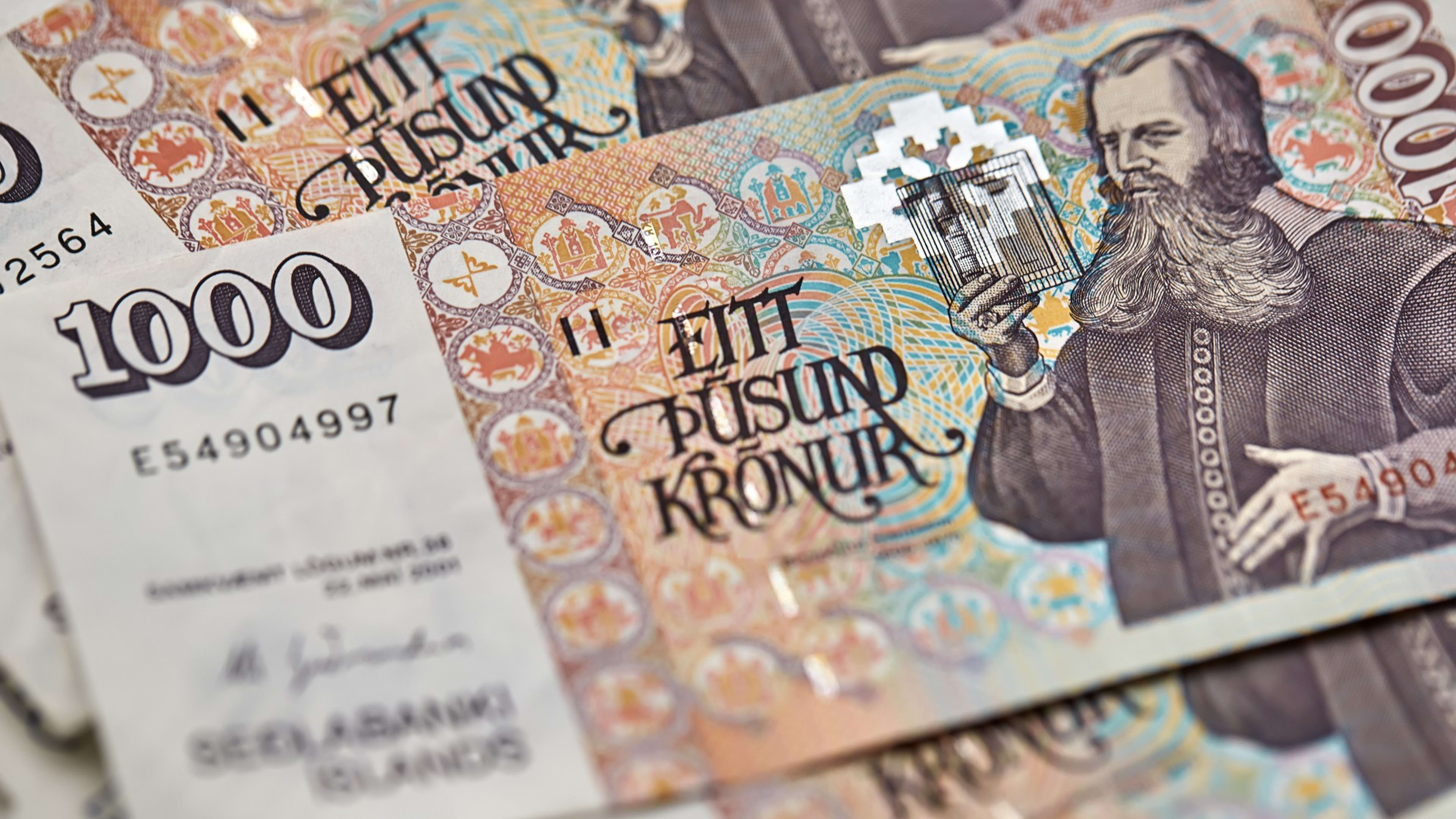
2 minute read
- Related: Is Iceland expensive? Your budgeting guide .
What currency does Iceland use?
Iceland uses its own currency, the Icelandic króna (plural: krónur ). The currency symbol is ISK or kr.
See Landsbankinn for the latest exchange rates.
Can I use my card in Iceland?
International credit and debit cards are widely accepted using contactless (tap) payment or chip and PIN. The limit for contactless payments is ISK 7,500 per transaction.
It’s a good idea to make sure you know your PIN number, as you won’t be able to authorize with your signature.
Cards are accepted at most retailers, including small kiosks and market stalls, and at gas station pumps, parking meters, swimming pools, and elsewhere.
You’ll sometimes be asked if you prefer to pay in Icelandic krónur or your home currency. It’s almost always cheaper to pay in Icelandic krónur, as the exchange will be made by your bank and not the retailer.
Do I need cash in Iceland?
Card payments are preferred in most places in Iceland. Of course, it’s a good idea to take out some cash just in case you have issues with your card.
It’s normally cheapest to withdraw straight from an ATM or exchange cash at a local bank, rather than at the airport.
Do you tip in Iceland?
There’s generally no tipping culture in Iceland at restaurants , cafés, bars , and so on. That said, if you had a truly exceptional experience, a tip of around 10% would be gratefully received.
How much is VAT in Iceland?
VAT (or sales tax) in Iceland is 24% on most goods. On food and books, it’s 11%.
Can I shop tax-free in Iceland?
Yes! Participating retailers in Iceland will provide you with a tax-free receipt, which allows you to claim back most of the VAT on purchases of goods over ISK 6,000 when you leave the country.
Keep your receipts together for stamping at the airport, and post them in the envelope provided before you board your flight home.
You can shop tax-free regardless of where you’re from, the only requirement is that you’re not resident in Iceland.
- On a budget? Browse these wallet-friendly camping trips and multi-day bus tours .

Iceland On A Budget: 18 Ways To Save Money
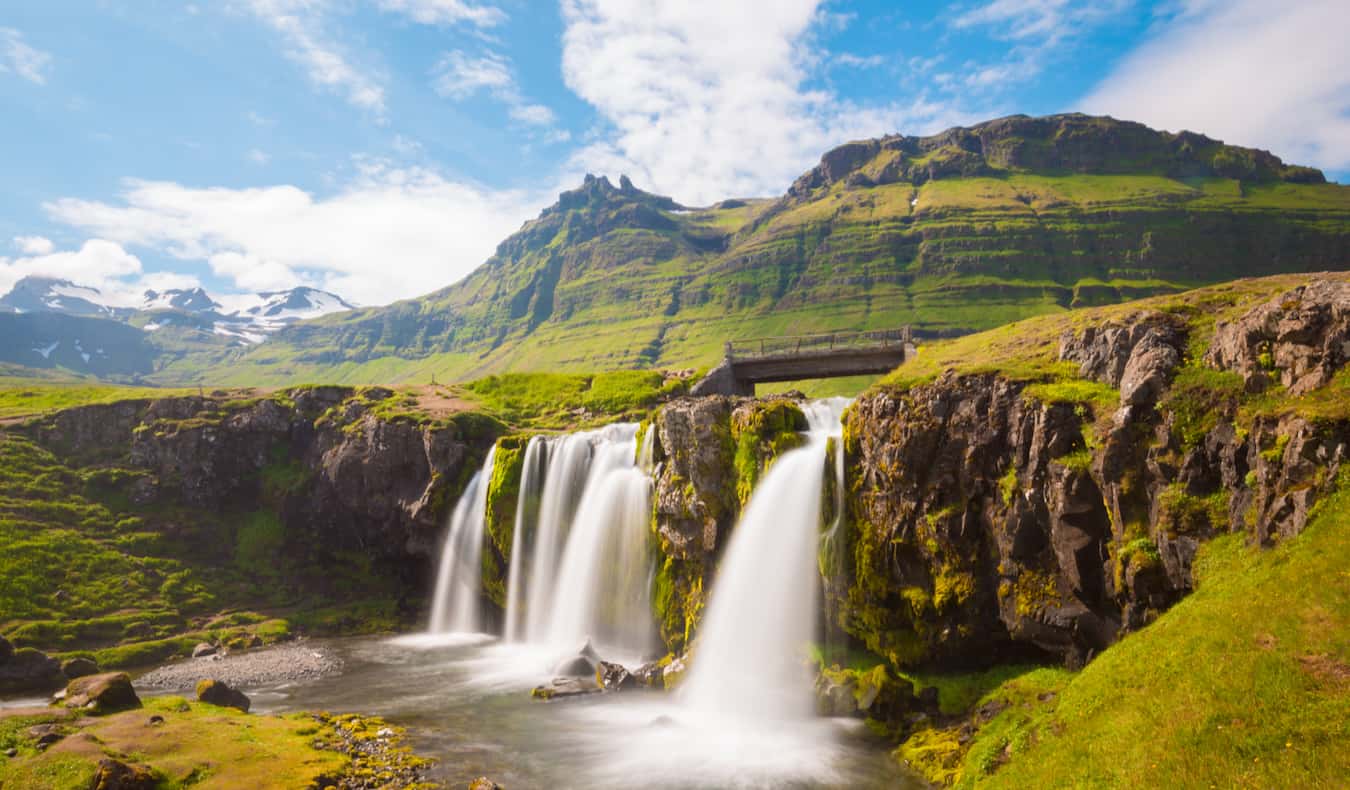
In recent years, Iceland has become one of the most popular destinations in the world. It’s the land of roaming sheep, postcard-perfect waterfalls, northern lights , otherworldly hiking trails, volcanoes with unpronounceable names (try saying “Eyjafjallajökull”), and crazy high prices.
Like the rest of Scandinavia, Iceland is consistently ranked as one of the least budget-friendly countries in the world. Yet it’s a country I find myself visiting often because it’s just so fun and beautiful.
After driving the ring road, hitchhiking the West Fjords , and partying the nights away in Reykjavik , I can tell you that traveling to Iceland can be done on a budget.
Not the lowest budget, but a budget nonetheless.
In this post, I’ll share my best tips and advice to help you visit Iceland on a budget so you can have fun, save money, and make the most of your time in the Land of Fire and Ice.
Suggested Budget for Iceland

On the low end, you could get by on 9,000000-10,000 ISK a day. This budget includes using public transportation, staying in a hostel or camping; taking free tours only; cooking all of your food (restaurant meals are really expensive); and drastically limiting your drinking.
On a mid-range budget of 23,000 ISK per day, you could eat out occasionally (at cheap places only), drink the occasional beer, rent a car (if you can split the costs), and do more paid activities (such as museum visits). For accommodation, you can do private Airbnb rooms or private hostel rooms. This is more of a mid-range budget travel budget rather than an actual mid-range budget as you won’t be living large.
At 36,000 ISK or more a day, you can stay in a budget hotel, eat out all the time, take any tours you want, rent a car, go whale watching, and enjoy nights out at the bar. This is just the ground floor for luxury though. The sky is the limit!
Extreme budget travelers who plan on hitchhiking, cooking all their meals, Couchsurfing, or camping with their own gear can get away with spending around 7,000 ISK per day.
18 Ways to Save Money in Iceland
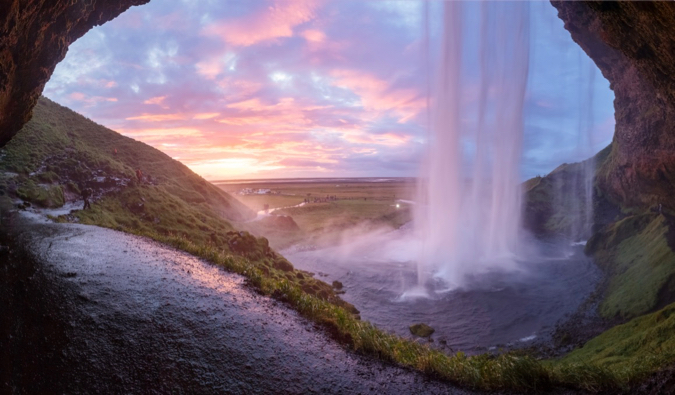
Here’s how to visit Iceland on a budget:
1. Hitchhike
Iceland is one of the easiest and safest countries in the world for hitchhikers. You can find rides throughout the country (though they are less common in the West Fjords and during the off-season). It’s especially easy in the southern part of Iceland, between Reykjavik and Vik.
Though harder, it’s also not impossible to find a ride in the off-season or in the sparsely populated north. I hitchhiked in the Westfjords and it often took me an hour or more to find a ride. However, in the south, you’ll rarely wait more than 15-20 minutes.
One way to find rides is to ask around in hostels. Travelers are usually driving the main ring road (M1) and, since gas is expensive, they usually don’t mind picking someone up if you can chip in for gas.
When on the road hitchhiking, do your best to look presentable. Make sure your face can be seen, that you’re smiling, and that you don’t have too much luggage with you. Solo travelers or pairs will have the best luck. Hitchhiking in groups usually should be avoided as the cars here are small and there are often not more than one or two seats free.
HitchWiki has a lot of information on hitchhiking in Iceland. If you plan on hitchhiking, read HitchWiki first to avoid the most common pitfalls.
2. Bring a Water Bottle
The tap water in Iceland is incredibly clean and safe to drink. Single-use plastic bottles of water add up fast, making this a no-brainer: bring a reusable water bottle with you and refill from the tap. It will save you a lot of money and help the environment. There’s no reason to buy water here.
My go-to bottle is LifeStraw as they have a built-in filter to ensure your water is always clean and safe.
Campgrounds can be found all over Iceland. You can camp in official campgrounds for 2,400 ISK per night for a basic plot (a flat space for your tent, usually without electricity). Many campgrounds have common rooms so that, if the weather is terrible, you can stay indoors and stay dry.
Additionally, some hostels will also allow you to pitch your tent on their property. That way, you’ll have even more facilities/amenities at your disposal.
Camping is significantly cheaper than staying in hostels if you have your own gear and sleeping bag. However, there are rental outfitters in Reykjavik if you don’t. While renting gear will make camping more expensive, the prices are far from prohibitive when split between a small group.
Wild camping, while still legal in much of Iceland, is frowned upon as the recent tourist boom has led to far too many travelers abusing the country’s lax camping laws. Unless you’re visiting in the off-season, I would not recommend you wild camp as the locals do not appreciate it.
4. Become a Hosteling International (HI) Member
Most hostels in Iceland (especially outside Reykjavik) are part of the Hosteling International group. This means they offer discounted rates to members. Hostel dorms usually cost at least 4,400 ISK per night and HI members get 10% off that price. While there is an annual membership fee to join HI, if you plan on staying in hostels during your trip, the membership will pay for itself in no time. You can get a membership at any hostel or online before you go.
5. Bring Your Own Sheets
As with other Scandinavian countries, many hostels in Iceland charge you a fee for bed sheets if you don’t have your own linens (they don’t allow you to use sleeping bags). The fee is around 1,400 ISK, which is meant to offset the environmental cost of doing so much laundry with heavy chemicals. However, be sure to research your hostel thoroughly as some will not allow you to bring your own sheets and some won’t charge the fee (so prioritize hostels that don’t charge the fee!).
Note: If you plan on staying in the same hostel for a few days, you’re only charged the linen fee once.
6. Limit Your Alcohol
Due to high taxes, it’s very expensive to drink in Iceland. Shots are almost 1,400 ISK, beer is that much or more, and wine is over 2,000 ISK. If you want to blow your budget, hit the bar.
It’s true that Reykjavik does have a lively nightlife so if you want to take part just try to hit the various happy hours around the city. Pretty much every single bar will have one. You’ll save a bundle and still get to have a little fun.
However, beyond the happy hours, I encourage you to not indulge. No one wants to hike a volcano with a hangover and Icelanders usually don’t go out until past midnight because they want to get sauced at home on the cheap first. If you want to drink during your visit, stock up at the duty-free at the airport and bring it with you. It will save you around 30% off the cost of buying alcohol in the country!
7. Cook Your Own Food
I found food to be the most expensive thing in Iceland. Eating out, even on the cheap, costs about 2,500 ISK or more per meal. Something from a sit-down restaurant with service can cost 6,500 ISK or more! It’s easy for your food budget to go through the roof at those prices.
Instead, go grocery shopping and cook your own meals. All hostels, Airbnbs, and campsites have self-catering facilities. My grocery bill for three days of food was the same price as one meal at a restaurant. Make sure to shop at BONUS food stores as they have the cheapest prices.
8. Bring Your Own Tea and Coffee
Tea, coffee, or hot chocolate cost 500–900 ISK — even regular drip coffee or a tea bag you put into hot water yourself will cost that much! If you bring your own, you can limit the times you have to buy it and save yourself a handful of krónur.
9. Eat Hotdogs
If you are going to eat out, eat at the sandwich and hot dog stalls you find throughout the cities. They offer the cheapest (but not healthiest) food in the country. A hot dog costs less than 500 ISK and a sandwich will run you about 1,800 ISK. Icelanders have an odd obsession with hot dogs, so as long as the city has more than one road, you’ll find a hot dog stall around. You can usually find them at gas stations too.
10. Ride the Bus
The buses here are cheap and slow and they won’t stop at main landmarks, but they are an affordable choice for anyone not looking to drive or hitchhike. Since they don’t stop at the major sites, you can only use them to get from point A to point B (not to sightsee) — but that’s still better than nothing!
You can plan your route via the website (straeto.is) or use the official app (straeto.is/is/um-straeto/straeto-appid).
Though the buses operate year-round, not every bus follows every route every day of the year. You’ll have to plan accordingly and in advance to ensure your bus is there when you need it.
11. Rent a Car
If you don’t want to hitchhike, the best way to get around the country is by renting a car. They cost around 6,200 ISK per day for a small car but you can split the costs with friends or by picking up travelers on the road. You’ll get a lot more flexibility than if you take the bus and if you can split the ride with a couple of people it will be cheaper too.
The best of Iceland isn’t found along its main highway so having the ability to visit more secluded (and less crowded) areas is going to make your trip more unique and more memorable.
For the best car rental prices, use Discover Cars .
You can also use the website Samferda to find passengers. This website is very popular and you’ll find a lot of listings on it, especially between some of the bigger cities. ( Note: You can also use this website to find rides. Even if you have to pay the driver, prices are about 50% of the cost of the bus.)
12. Couchsurf with Locals
Iceland has a very active Couchsurfing community. I stayed with hosts in Reykjavik and Akureyri and had someone else take me around the famous Golden Circle (the ring of attractions near Reykjavik). Getting involved with the community here is a sure-fire way to save money, get local insights, meet wonderful people, and get a free place to stay.
I met a lot of people through the website who took me in and showed me places I wouldn’t have found on my own. Even if you don’t use the website for accommodation, use the community aspect of it and meet some locals.
13. Find Free Hot Springs
While the Blue Lagoon may be the most popular hot spring in the country, there are lots of others around the country that are free (or at the very least, less money than the overpriced Blue Lagoon). Ask locals for nearby hot spring suggestions or use the app Hot Pot Iceland to find hot pots all around the island.
Some noteworthy free hot springs are Reykjadalur, Seljavallalaug (it’s usually not that hot but it’s in an amazing location), and the tiny one near Djúpavogskörin.
14. Avoid Taxis
The cities in Iceland are small so there’s absolutely no need to waste money on a taxi because you can walk pretty much everywhere. The public transportation is also reliable and much cheaper and they run late so if it’s cold, you can take the bus! Iceland is already expensive enough. Don’t make it worse! Taxis start at almost 800 ISK before you even travel a single kilometer (they’re around 500 ISK per kilometer). That adds up fast — skip them if you can!
15. Take a Free Walking Tour
Free walking tours are a great way to learn about a new city, its main sites, and get a sense of the culture and history of where you are. I take free walking tours wherever I go!
If you’re going to be spending time in Reykjavik , be sure to check out one of the free walking tours in the city. CityWalk and Free Walking Tour Reykjavik both offer fun, informative, and comprehensive free walking tours to help you get introduced to the city.
16. Get the Reykjavík City Card
Get this card if you’re planning on visiting more than two museums in one day while in Reykjavik. With it, you’ll get access to Reykjavík’s museums and galleries, including the National Gallery and Museum, the Reykjavík Family Park and Zoo, the Árbær Open Air Museum, the ferry to Viðey Island, public transport, and the seven geothermal pools in the capital area.
You’ll also get discounts at various restaurants, shops, and cafés, and on city tours. Order online (marketplace.visitreykjavik.is) and pick your card up at Reykjavík City Hall. It’s 4,600 ISK for adults. Museums are free for children but a small fee might apply at certain attractions depending on the child’s age.
17. Bring a Towel
Towel fees are astronomically high at hostels, the Blue Lagoon, the Myvatn Nature Baths, and elsewhere in Iceland. Fees start at 500 ISK per towel. Avoid them all together by bringing your own. Also, you’ll need a towel if you plan on exploring any natural hot springs.

18. Buy Discounted Meat
I know it sounds gross, but like most Scandinavian countries, Iceland has super strict food laws that have them mark meat as “expired” way before most other countries do. The meat hasn’t gone bad — but rules are rules. As such, you can often find meat at 50% off the original price in the grocery stores on the day of expiration. This is when most locals buy their meat.
If you’re going to be cooking your own meals here (and you should be) stick to the discounted meat.
Iceland doesn’t have to be expensive to visit. Granted, it’s never going to be a cheap destination but it doesn’t have to break the bank either. By being flexible with your accommodation, limiting your drinking and eating out, and enjoying the abundance of free activities, you’ll be able to avoid the most common budget pitfalls the country will throw at you.
Get the In-Depth Budget Guide to Iceland!
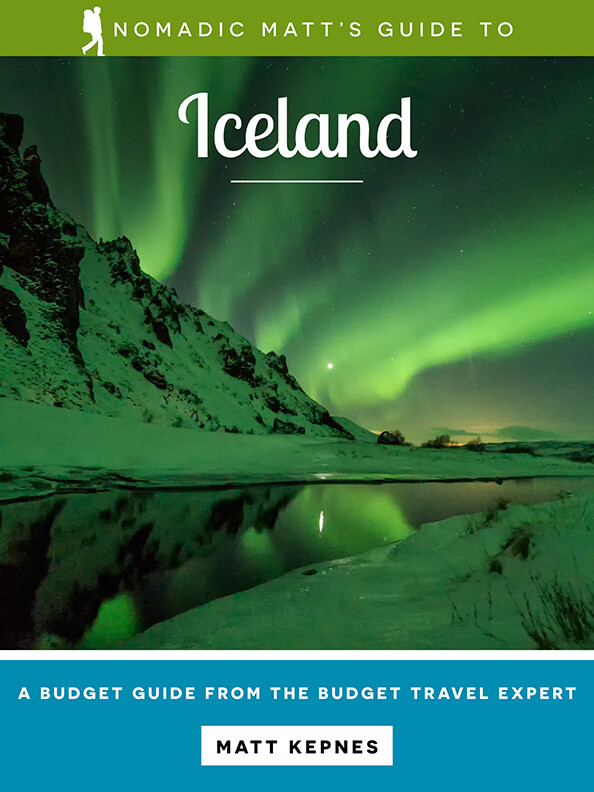
Want to plan the perfect trip to Iceland? Check out my comprehensive guide to Iceland written for budget travelers like you! It cuts out the fluff found in other guides and gets straight to the practical information you need. You’ll find suggested itineraries, tips, budgets, ways to save money, on and off the beaten path things to see and do, and my favorite non-touristy restaurants, markets, bars, transportation tips, and much more! Click here to learn more and get your copy today.
Book Your Trip to Iceland: Logistical Tips and Tricks
Book Your Flight Use Skyscanner to find a cheap flight. They are my favorite search engine because they search websites and airlines around the globe so you always know no stone is left unturned.
Book Your Accommodation You can book your hostel with Hostelworld as they have the biggest inventory and best deals. If you want to stay somewhere other than a hostel, use Booking.com as they consistently return the cheapest rates for guesthouses and cheap hotels. My favorite places to stay are:
- Kex Hostel (Reykjavik)
- Akureyri Backpacker (Akureyri)
Don’t Forget Travel Insurance Travel insurance will protect you against illness, injury, theft, and cancellations. It’s comprehensive protection in case anything goes wrong. I never go on a trip without it as I’ve had to use it many times in the past. My favorite companies that offer the best service and value are:
- Safety Wing (for everyone below 70)
- Insure My Trip (for those over 70)
- Medjet (for additional evacuation coverage)
Looking for the Best Companies to Save Money With? Check out my resource page for the best companies to use when you travel. I list all the ones I use to save money when I’m on the road. They will save you money when you travel too.
Want More Information on Iceland? Be sure to visit our robust destination guide on Iceland for even more planning tips!
Got a comment on this article? Join the conversation on Facebook , Instagram , or Twitter and share your thoughts!
Disclosure: Please note that some of the links above may be affiliate links, and at no additional cost to you, I earn a commission if you make a purchase. I recommend only products and companies I use and the income goes to keeping the site community supported and ad free.
Related Posts
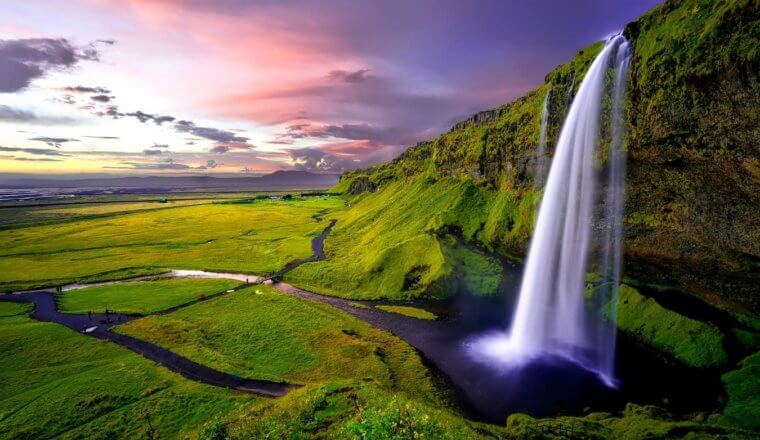
GET YOUR FREE TRAVEL STARTER KIT
Enter your email and get planning cheatsheets including a step by step checklist, packing list, tips cheat sheet, and more so you can plan like a pro!

- Skip to right header navigation
- Skip to main content
- Skip to secondary navigation
- Skip to primary sidebar
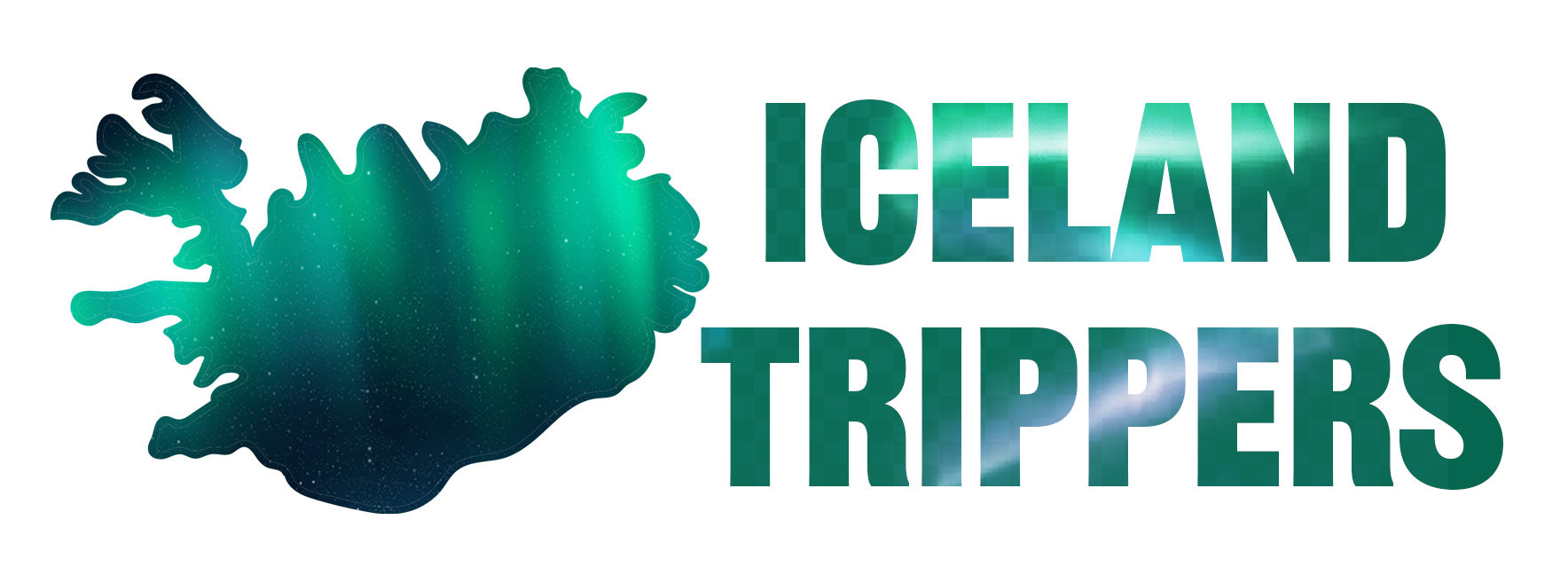
Learn how to easily plan your dream trip to Iceland with helpful guides and tips!
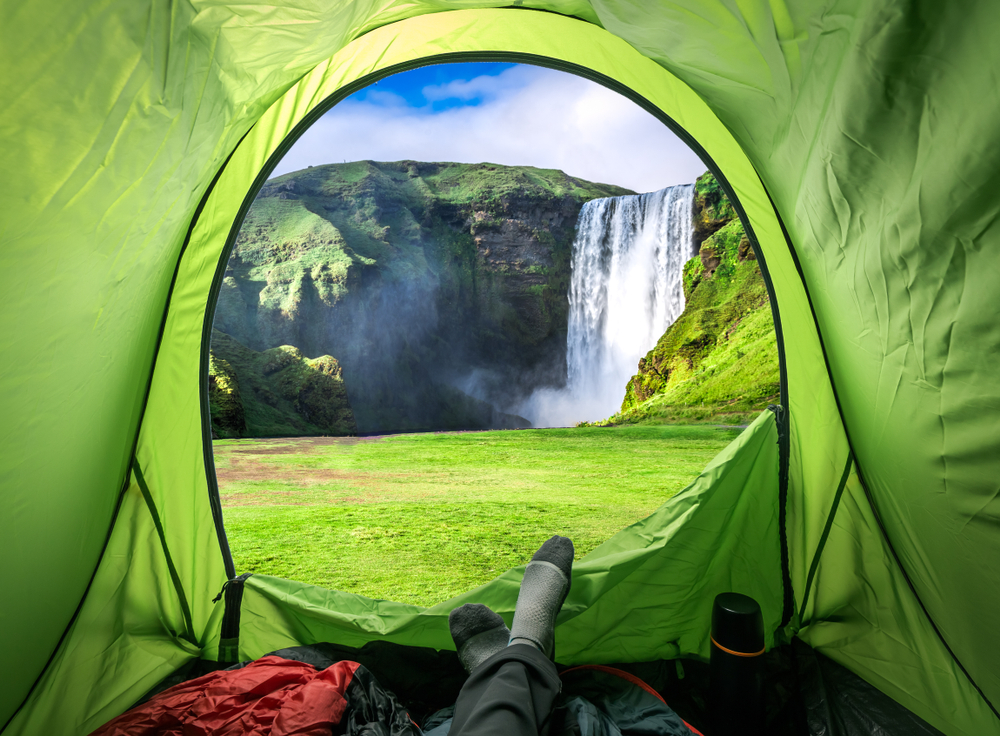
15 Money-Saving Tips For Traveling Iceland On A Budget
August 20, 2022 // by Iceland Trippers
For those of you wondering how to travel to Iceland cheap, we’re here to help you limit your trip expenses. Visiting Iceland on a budget is challenging but not impossible.
Spending time in Iceland means spending money. From your accommodation and food to gas prices and rental cars everything is notoriously expensive.
What makes Iceland such an attractive destination spot however is its unique outdoor landscape. Getting from place to place will require a car and gas money, but the stops themselves are almost all free.
Besides the occasional parking fee you can stand behind towering waterfalls, sink your toes into the sand of a black sand beach, wander through a shore full of icebergs and so much more for free.
Experiencing the land of fire and ice doesn’t have to empty your bank account. With our tips for traveling in Iceland on a budget, you’ll be hopping on a plane and exploring the land of fire and ice for yourself in no time.
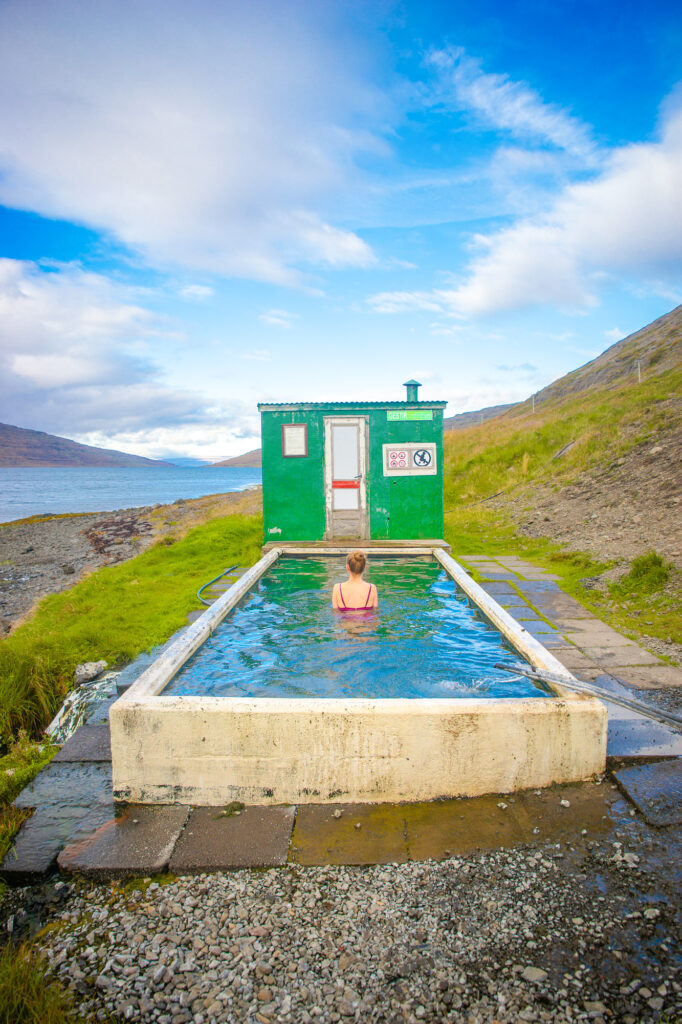
Figuring Out Your Iceland Budget And Trip Cost
To get out an idea of your Iceland trip cost we’ve broken down the biggest expenses into categories to help with your planning.
Hotels in Iceland are expensive but within the capital, your choices are greater. A luxury hotel will cost about $350 for a single room or up to $1500 or more for a suite. Budget options will land anywhere from $130 for a single room to $400 for a superior double or twin room. Airbnbs in the capital are on average less expensive than the hotels, however options become limited outside of the capital.
If you’re skipping public transportation and tour buses, you’ll need a rental car. Two-wheel drive compact manual cars land around $63/day while a 4-wheel drive automatic SUV will cost close to $230/day. If your itinerary is possible with a 2-wheel drive and you’re capable of driving manual, this is the perfect opportunity to lower your trip to Iceland cost.
A campervan can be an ideal way to combine your transportation and accommodation into one. You can rent a 4×2 or 4×4 campervan and can choose from automatic or manual (though manuals are in high demand so book early). The campervan itself will range from as low as $90 for a 2-seater to as high as $335 for a 5-seater. On top of that, you’ll pay an average of $10/person to park it at a campsite.
Gas prices in Iceland are high, even at Costco where with a Costco membership you’ll find the cheapest prices. The options for gas stations become considerably more scarce the farther you get from the capital, so searching for stations based on price becomes unrealistic. To fill up a 4×4 rental car will cost close to $100 while an economy 2×2 car will be closer to $80.
Buying groceries in Iceland rather than going out to eat is ideal for a budget trip. Bonus is the cheapest option, Hagkaup is one of the most expensive, and Kronan, Netto, and others fall somewhere in-between. Expect to pay around $2.41 for 1kg of whole wheat sandwich bread, $1.22 for 800g of banana, $12 for 500g of ground beef, $1.23 doe 1L of whole milk, and $5.71 for 500g of sliced cheese.
Tours will not reduce your Iceland trip cost unless you forgo getting a rental car and stick to public transportation and tour buses. But if you’re looking to travel to the most popular locations, often easily accessible with a knowledgeable guide, taking a tour can be an excellent option. Tours vary widely in cost based on the type of activity/length of tour but some examples include Golden Circle tours that range from $47-$90 or Northern Lights tours that range from $81-$138.
Fast food in Iceland is quick, cheaper, and isn’t necessarily synonymous with unhealthy, making it a great alternative to restaurant dining. Fair warning however, while prices are cheaper they’ll likely still be a bit of a shock. For example, a burrito at Serrano can cost up to nearly $15, a subway sandwich will cost around $12.50 and the famous Icelandic hot dogs will cost anywhere from about $2.50-$4.
Eating at restaurants can be a great way to eat traditional food and Reykjavik offers many delicious options, however you can expect to pay a pretty penny no matter where you go. A good burger will cost between $20-$30 and you can get a pizza for about $15-$25, but for less causal options a meal will likely cost between $30-$50/person.
Avoiding alcohol altogether is an easy way to cut down your Iceland trip cost. If you’re set on indulging in a bottle of wine or a can of beer you’ll wind up paying around $15 for the cheapest wine and up to around $65 for a dessert wine while a half-liter of beer will land you around $3.50. Since alcohol is one of the highest taxed items in Iceland, your best bet is to buy your trip supply of alcohol from the Duty Free shop at the airport.
Sticking to your own itinerary and skipping tours will allow you to keep a relatively low trip cost when it comes to visiting attractions in Iceland because the country’s biggest highlights center around its natural landscape. If you’re sticking to natural attractions, most of your costs will be the occasional parking fee of around $3-$6. Museums tend to be the big ticket attractions at around $25-$40.
With some planning, you can save money on hot springs and stick to the free options in the middle of nature. An inexpensive alternative is to hit up the hot tubs at local pools for roughly $10. More luxury options can range from a $30 ticket to the hot pots at Laugarvatn Fontana to a minimum of $60 at the iconic Blue Lagoon.
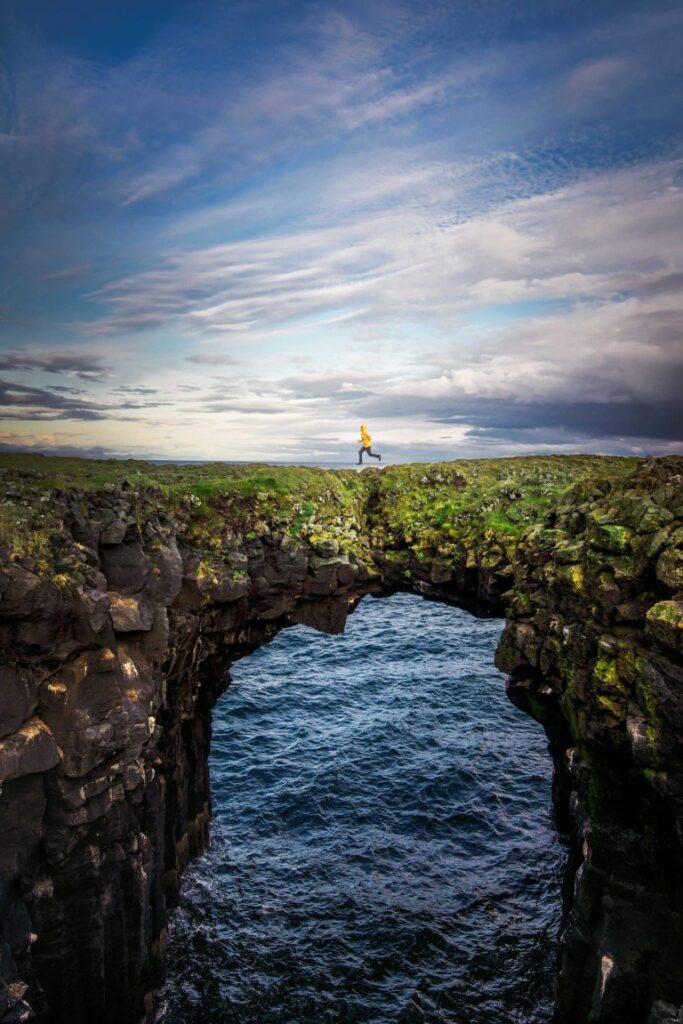
15 Money-Saving Tips For Doing Iceland On A Budget
Skip the blue lagoon and visit a free/cheap natural hot spring.
Along with the Golden Circle, visiting the Blue Lagoon might just be the most iconic bucket-list tourist activity. Iceland’s luxury Sky Lagoon is a newer build but it is well on its way to becoming a popular geothermally heated bathing spot as well. Both are worth a visit at least once in your lifetime but they won’t be kind on your wallet.
You don’t need a swim-up bar and bath robes however to have a magical experience. Lucky for you, there’s an abundance of free or less expensive geothermal hot springs in Iceland. A hike to the Reykjadalur Hot Springs takes you through a steam-filled valley to a bathing river. Or for a more intimate spot, you can head to the Hrunalaug Hot Springs in the mountains of south Iceland. Both are excellent ways to save money in Iceland.
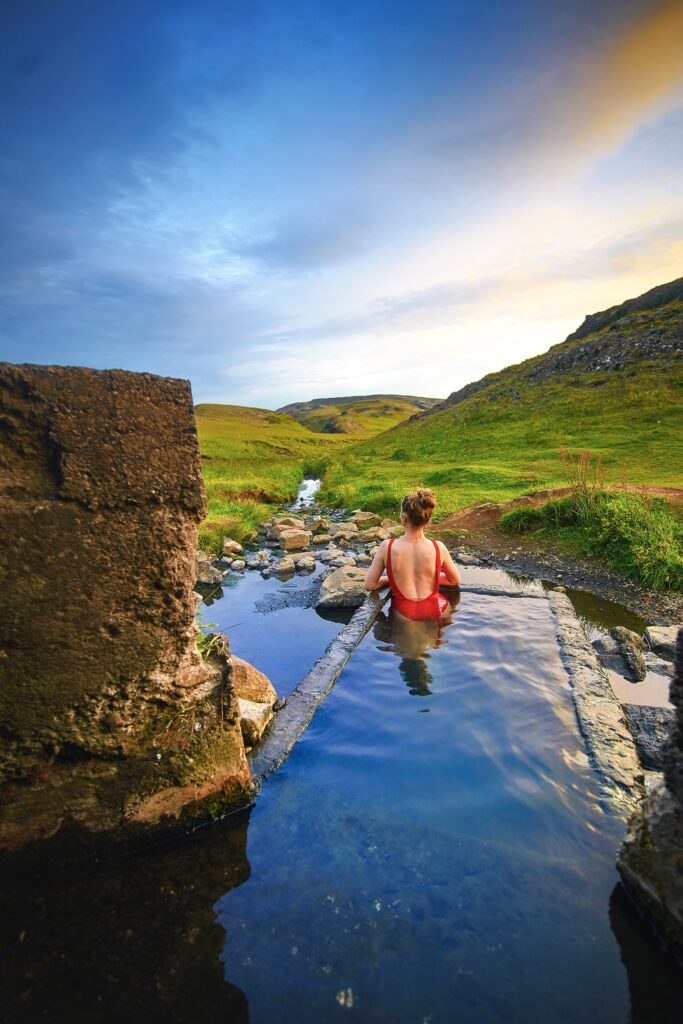
Book Your Flights On A Budget Airline
Play is Iceland’s most recent budget airline coming onto the scene in 2022 after the 2019 collapse of its predecessor Wow Air. Play offers limited flights from the east coast of the United States to Iceland and on to a number of European cities.
Though still in its infancy, the airline plans to grow its fleet and expand to other cities, so continue to check back to see if they’re offering flights that work for you.
Like many budget airlines, Play charges for extras such as baggage and seat assignments, but even with additional charges, you’ll still likely save money compared to an IcelandAir flight. On whole, this is the cheapest way to go to Iceland and is perfect for those working with a strict budget.
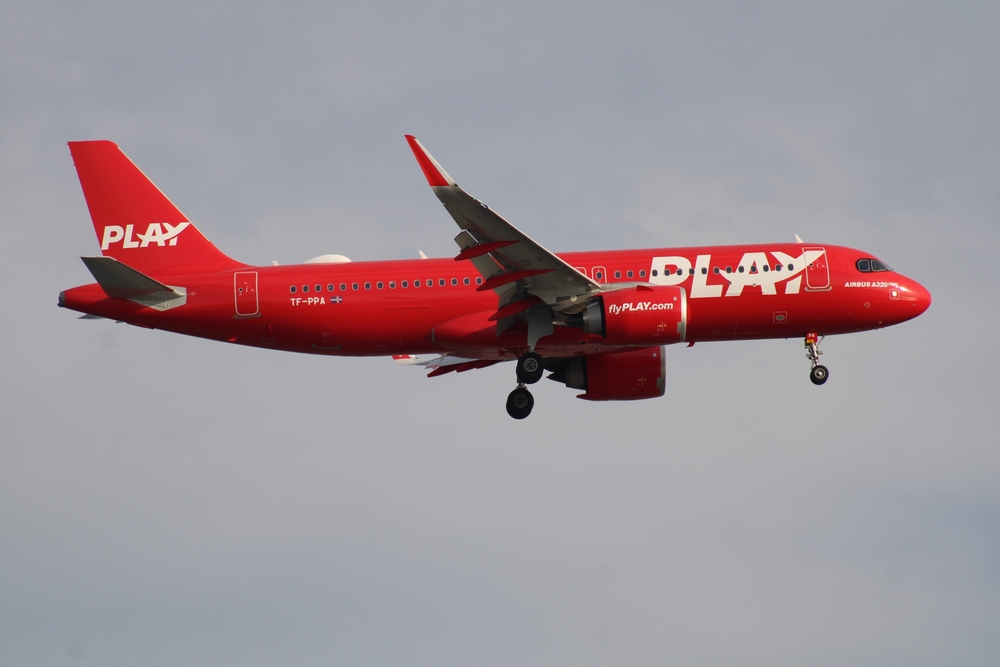
Plan Your Trip To Iceland During The Offseason
Unsurprisingly, summer attracts the most tourists thanks to slightly more reasonable weather, long daylight hours, and lush green landscapes mixed with blooming lupines. But this doesn’t necessarily make it the best time to visit Iceland .
Every season in Iceland has something special to offer however if you’re willing to power through the rain and/or snow and shorter days for the benefit of smaller crowds and cheaper flights, tours, and rental cars, you can do Iceland on a budget while still having a magical trip.
The low season is the cheapest time to visit Iceland and falls between November-March. You’ll have to make some adjustments due to road closures and lack of daylight but there’s a magic to Iceland in the winter including the chance of potentially catching a glimpse of the elusive Northern Lights.
Make sure to check out our Detailed Winter In Iceland Travel Itinerary!
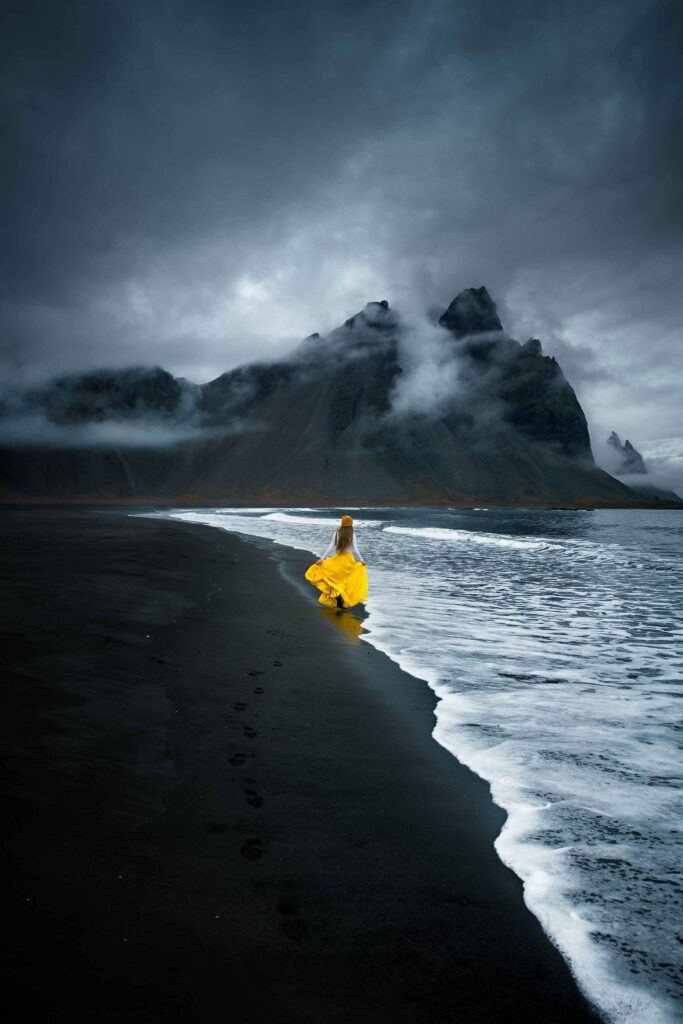
A Campervan Works As Both Accommodation And Car
When traveling to Iceland you’ll need to pay for an accommodation and rental car. Why not knock out both expenses in one with a campervan? For those looking for cheap travel in Iceland, renting a campervan might just be the perfect solution.
A campervan allows you the same freedom as a rental car so tour buses don’t dictate your schedule. Keep in mind you still need to budget for the cost of the van per day as well as gas and a small campsite fee each night. However, even with these costs, you’ll save money compared to the cost of a hotel and rental car.
To further save money you can grocery shop and cook meals in your campervan to avoid paying the steep food prices when eating out at restaurants.

Grocery Shop And Cook Rather Than Eat Out
Eating out at restaurants in Iceland and tasting the local cuisine can be a great way to immerse yourself in the culture and traditions of the country, but in a place where even the most inexpensive restaurants will put a dent in your wallet, you’ll want to consider putting your Iceland travel budget towards groceries instead.
You have a number of options when searching for grocery stores in Iceland . Bonus is great for budget shopping with the lowest prices and quality selection. Kronan and Netto are slightly more expensive, but still reasonable and tend to have longer opening hours than Bonus. Hagkaup is the most expensive option but has the greatest selection and is often open for 24 hours.

Bring Your Own Reusable Water Bottle
It’s easy to save money in Iceland by skipping the bottled water, bringing a reusable water bottle, and enjoying some of the freshest, cleanest drinking water in the world straight from the tap. This pristine natural spring water is carefully monitored and tested and is free of nitrates, calcium, and chlorine.
When dispensing the water, be sure to turn the tap all the way to its coldest setting. You might notice that if you don’t, you get a whiff of that rotten-egg sulfur smell courtesy of the geothermally heated hot water. When turned to its coldest setting, the sulfur smell disappears and what’s left is delicious drinking water.
There’s no use spending money on bottled water. It’s just the tap water bottled. Instead, stick to the free and endless supply of tap water.
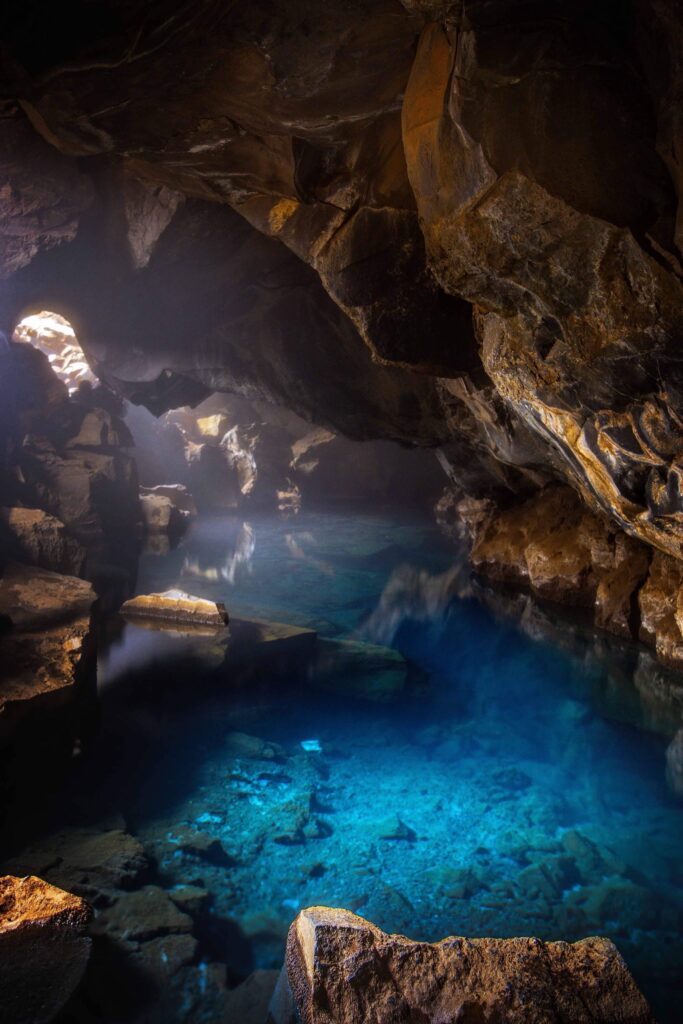
Consider Tent Camping Near Iceland’s Most Impressive Natural Sites
Camping is a great way to visit Iceland on a budget and save money on accommodations. On top of that, you get the opportunity to fall asleep in the middle of Iceland’s unique and jaw-dropping natural landscape.
When camping in Iceland , make sure you stick to designated campgrounds. There’s an abundance of campsites across the country, so you’ll never have trouble finding a picturesque spot to spend the night.
Campgrounds in Iceland are generally open from May to September and provide flush toilets and running water for free with the option to pay extra for showers. Another option is to pay for entrance to the closest local pool to your campsite and get an end of the day hot tub soak and shower all in one.

Skip The Alcohol Or Buy Duty-Free
If you can do without alcohol during your trip it’s one of the best ways to cut down on expenses if you’re trying to travel to Iceland on a budget.
Buying alcohol from the liquor stores (Vínbúðin) or out at bars and restaurants is very expensive.
If you’re determined to try the spirits, wine, and beer in Iceland , buy your alcohol at the airport Duty Free shop when you arrive in the country. Use the Duty Free allowance calculator to determine how much of each alcohol type you’re allowed to buy.

Fill Up On Gas At Costco If You’re A Member
If you rent a car, you’ll inevitably have to fill up with gas, but one of our best tips for traveling in Iceland on a budget involves taking advantage of your Costco membership.
If you’re fortunate enough to have a Costco membership in your home country, bring it along and fill up your car at the Iceland Costco for the best gas prices. There’s only one Costco in Iceland and it’s located in Gardabaer which is perfect if you’re sticking around the capital region or going out on short half-day trips from Reykjavik.
Gas stations become significantly scarcer the farther you get from the capital. If you’re driving longer distances you won’t have the luxury to choose a gas station by price and will be forced to fill up at whatever you come across along the way.

Purchase A City Card If Spending Significant Time In Reykjavik
The Reykjavik City Card is an easy way to save money in Iceland if you intend on spending a full day(s) in Reykjavik. Making the most of your city card will take some planning, but it’s worth it for the money saved.
You’ll have the option of purchasing a 24, 48, or 72-hour card ranging in price from roughly $30-$50. The card gives you free access to Reykjavik City buses, 8 of the pool complexes in the capital region, as well as the city’s most popular museums. Beyond the locations that grant you free entry, you’ll receive discounts to other attractions.
Reykjavik City Cards can be purchased online and picked up from a number of locations in the city. Then it’s time for the best part…exploring! Make sure to check out the best things to do in Reykjavik!
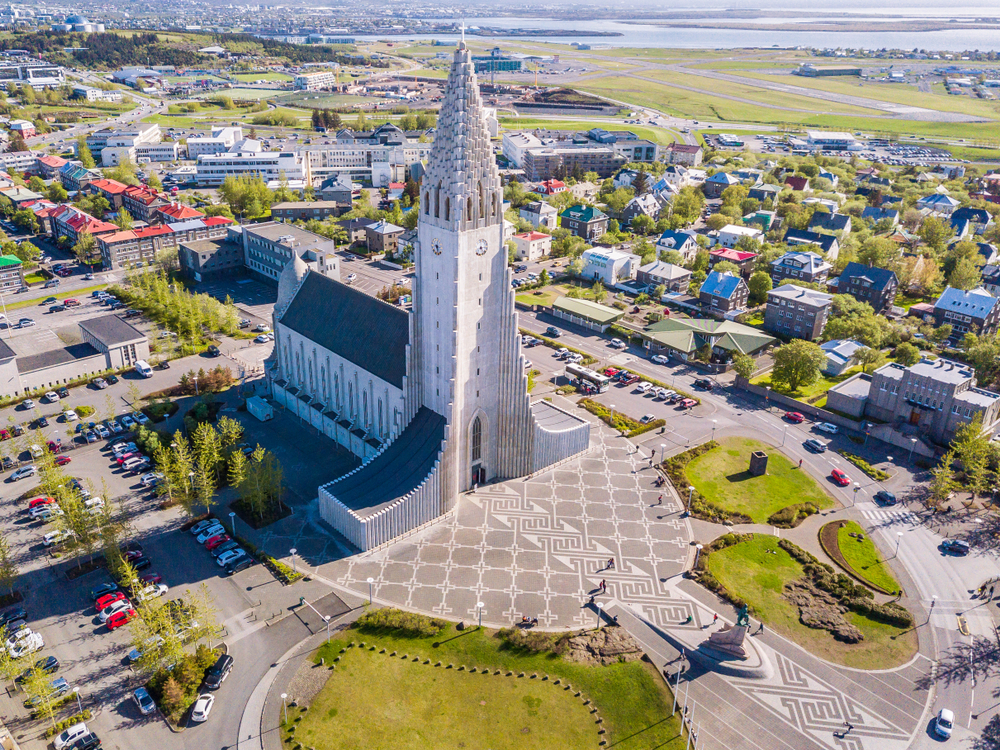
Take Advantage Of Icelandair Stopovers
There’s nothing better than the words free and Iceland being combined in the same sentence. If you’re flying transatlantic and have always dreamed of exploring the land of fire and ice, there’s no better time to do it than now.
Icelandair offers free stopovers in Iceland making it easy to add in an extra Iceland vacation to your longer trip. Talk about a budget trip to Iceland! While you’ll still have to cover your accommodations, rental car, etc., you won’t have to pay a dime extra for your airfare.
You can choose a stopover length of up to 7 days so you can have plenty of time to explore Iceland’s highlights if you have some flexibility in your schedule. Whether you choose to embark on your Iceland adventure on your way out or back, you’ll be glad you spent time in this special country.

Pay In The Correct Currency With An Appropriate Credit Card
The last thing you want when traveling to Iceland on a budget is to deal with extra credit card fees however small. One of the first and easiest ways to avoid extra fees is by bringing along a credit card with no foreign transaction fees. They might not seem like a lot but they add up with every purchase.
Once you arrive in Iceland and begin making purchases you’ll want to make sure you pay in the local currency when given the chance. This will avoid currency conversion fees. Make sure to check out our post about Money In Iceland!
Finally, this won’t save money but is an important tip to know ahead of your travel. Be sure to bring a credit or debit card with a PIN. Gas stations in particular will require you to input a PIN at the pump.
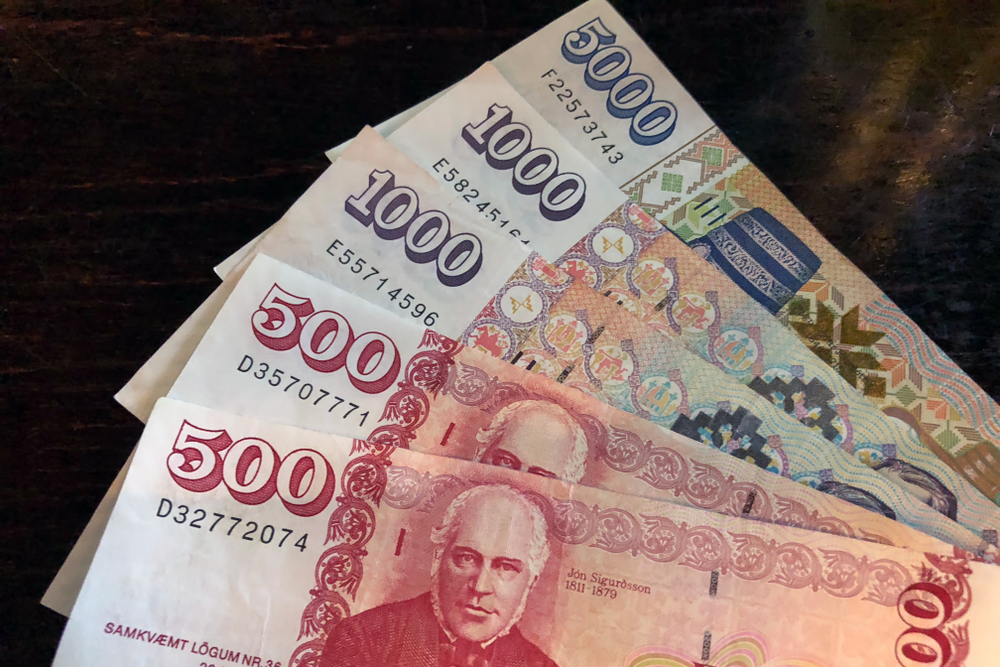
Rent a 2×2 Vehicle If It Works With Your Itinerary
If you’ve already planned your itinerary for your budget trip to Iceland, take a minute to assess whether having a 4×4 vehicle is necessary. 4×4 rental cars (with high clearance) are necessary for driving Iceland’s F-roads into the highlands, and the added traction is often helpful in the winter when road conditions are more dangerous.
If you can get away with renting a car in Iceland that’s a 2×2 vehicle however, you can save a lot of money. The good news is huge portions of the country can be explored in a 2×2 vehicle. From the Golden Circle to the south coast waterfalls, you’ll never experience a shortage of sites and landscapes to discover.
If you know how to drive a manual car you can also save money by avoiding the more expensive automatics.
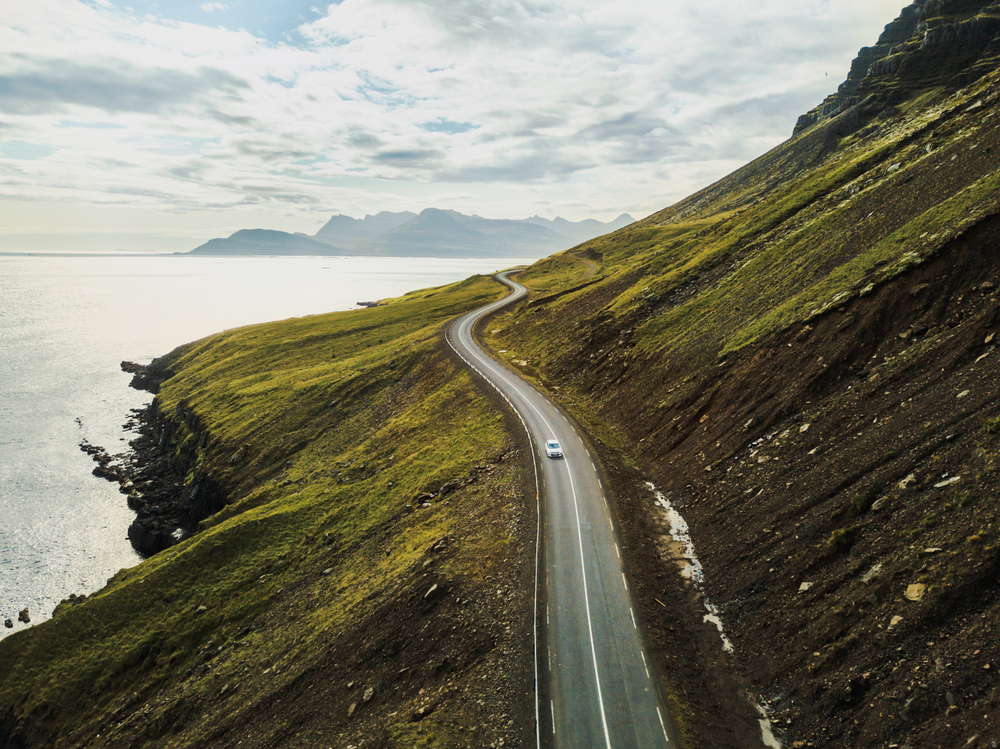
Avoid Taxis And Take The Bus From The Airport
Everyone’s anxious to get from the Keflavik airport to Reykjavik as fast as possible to begin their adventures, but if you’re planning a budget trip to Iceland, a taxi is not the way to go. Taking a taxi to the airport will cost you between 15.500 and 19.500 ISK compared to a bus ticket which will average around 3.000 ISK.
At 3.500 ISK Flybus is one of the best options with accommodating departure times and unlimited bags. The Gray Line Airport Express and Airport Direct are marginally less expensive and are easy to book, but come with some limitations like bag restrictions and stricter departure schedules.
If you have the flexibility to wait around for a bus and sit on the bus for 35 minutes longer than the other options, you can take Bus 55 for the cheapest option at 1.840 ISK.
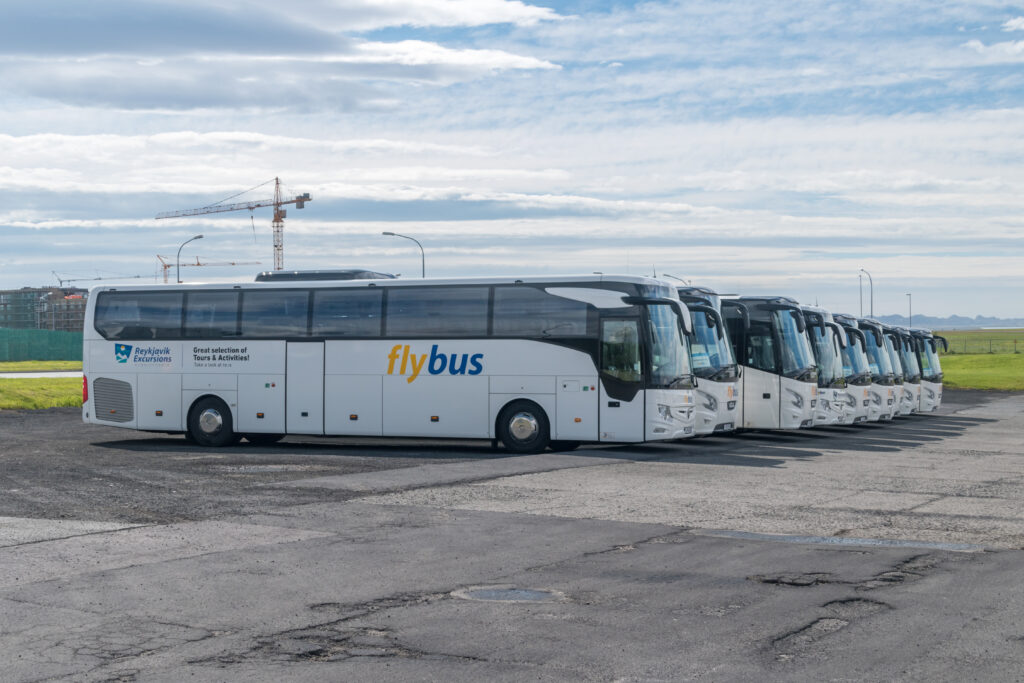
Gas Station Food And Hot Dogs Are Cheap And Surprisingly Delicious
When visiting Iceland on a budget, hot dogs will be your friend. Bæjarins Beztu Pylsur has locations throughout the country and is both tourist attraction and popular street food. These lamb hot dogs are uniquely Icelandic and come with topping options of Icelandic sweet mustard, ketchup, remoulade, and fried and raw onions.
If you have a Costco membership stop inside for Icelandic hot dogs, pizza, ice cream, burgers, etc. all for very reasonable prices.
Gas stations are another inexpensive food option and are particularly convenient stops when road tripping and trying to get something quick on the way. Some stations offer sit down restaurants with menu items such as lamb soup, fish and chips, burgers, etc., while others stick to more basic selections of sandwiches, hot dogs, and pastries.
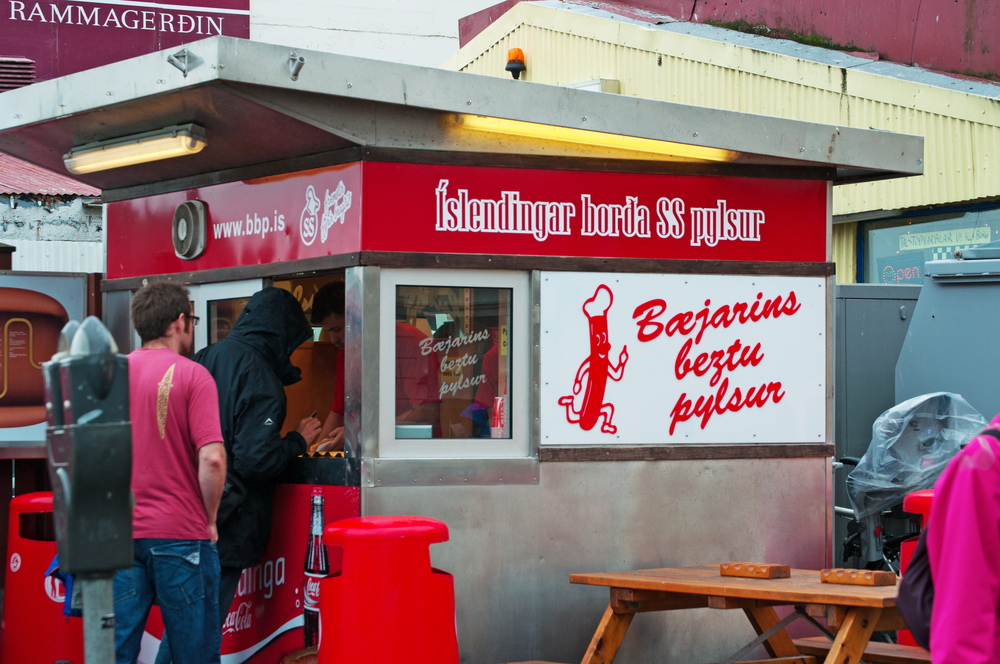
We’re thrilled you’ve chosen to explore the land of fire and ice. With enough pre-planning, budget travel to Iceland is entirely possible.
While your total Iceland trip cost is unlikely to be what you might consider cheap, you can significantly cut down on costs and while still feeling like you maximized your trip experience. If you have any questions or comments as you budget for Iceland please let us know.

- Argentina
- Australia
- Deutschland
- Magyarország
- Nederland
- New Zealand
- Österreich
- Singapore
- United Kingdom
- United States
- 繁體中文 (香港)
- 简体中文 (中国)
5 Best Travel Cards for Iceland
Getting an international travel card before you travel to Iceland can make it cheaper and more convenient when you spend in Icelandic Króna. You'll be able to easily top up your card in USD before you leave the US, to convert seamlessly to ISK for secure and flexible spending and withdrawals.
This guide walks through our picks of the best travel cards available for anyone from the US heading to Iceland, like Wise or Revolut. We'll walk through a head to head comparison, and a detailed look at their features, benefits and drawbacks.

5 best travel money cards for Iceland:
Let's kick off our roundup of the best travel cards for Iceland with a head to head comparison on important features. Here's an overview of the providers we've picked to look at, for customers looking for ways to spend conveniently overseas when travelling from the US:
Each of the international travel cards we’ve picked out have their own features and fees, which may mean they suit different customer needs. Keep reading to learn more about the features, advantages and disadvantages of each - plus a look at how to order the travel card of your choice before you head off to Iceland.
Wise travel card
Open a Wise account online or in the Wise app, to order a Wise travel card you can use for convenient spending and withdrawals in Iceland. Wise accounts can hold 40+ currencies, so you can top up in USD easily from your bank or using your card. Whenever you travel, to Iceland or beyond, you’ll have the option to convert to the currency you need in advance if it’s supported for holding a balance, or simply let the card do the conversion at the point of payment.
In either case you’ll get the mid-market exchange rate with low, transparent fees whenever you spend in ISK, plus some free ATM withdrawals every month - perfect if you’re looking for easy ways to arrange your travel cash.
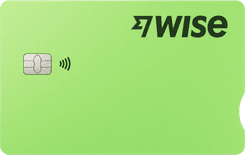
Wise features
Wise travel card pros and cons.
- Hold and exchange 40+ currencies with the mid-market rate
- Spend seamlessly in ISK when you travel
- Some free ATM withdrawals every month, for those times only cash will do
- Ways to receive payments to your Wise account conveniently
- Manage your account and card from your phone
- 9 USD delivery fee for your first card
- ATM fees apply once you've exhausted your monthly free withdrawals
- Physical cards may take 14 - 21 days to arrive
How to apply for a Wise card
Here’s how to apply for a Wise account and order a Wise travel card in the US:
Open the Wise app or desktop site
Select Register and confirm you want to open a personal account
Register with your email, Facebook, Apple or Google ID
Upload your ID document to complete the verification step
Tap the Cards tab to order your card
Pay the one time 9 USD fee, confirm your mailing address, and your card will be on the way, and should arrive in 14 - 21 days
Revolut travel card
Choose a Revolut account, from the Standard plan which has no monthly fee, to higher tier options which have monthly charges but unlock extra features and benefits. All accounts come with a smart Revolut card you can use in Iceland, with some no fee ATM withdrawals and currency conversion monthly, depending on the plan you pick. Use your Revolut account to hold and exchange 25+ currencies, and get extras like account options for under 18s, budgeting tools and more.
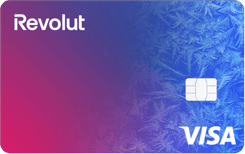
Revolut features
Revolut travel card pros and cons.
- Pick the Revolut account plan that suits your spending needs
- Hold and exchange 25+ currencies, and spend in 150 countries
- Accounts come with different card types, depending on which you select
- All accounts have some no fee currency exchange and some no fee ATM withdrawals monthly
- Some account tiers have travel perks like complimentary or discounted lounge access
- You need to upgrade to an account with a monthly fee to get all account features
- Delivery fees may apply for your travel card
- Fair usage limits apply once you exhaust your currency conversion and ATM no fee allowances
- Out of hours currency conversion has additional fees
How to apply for a Revolut card
Set up your Revolut account before you leave the US and order your travel card. Here’s how:
Download and open the Revolut app
Register by adding your personal and contact information
Follow the prompts to confirm your address and order your card
Pay any required delivery fee - costs depend on your account type
Chime travel card
Use your Chime account and card to spend in Iceland with no foreign transaction fee. You’ll just need to load a balance in USD and then the money is converted to ISK instantly with the Visa rate whenever you spend or make a withdrawal. There’s a fee to make an ATM withdrawal out of network, which sits at 2.5 USD, but there are very few other costs to worry about. Plus you can get lots of extra services from Chime if you need them, such as ways to save.
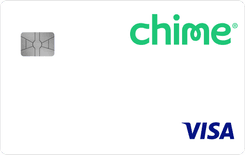
Chime features
Chime travel card pros and cons.
- No Chime foreign transaction fees
- No ongoing charges for your account
- Lots of extra products and services if you need them
- Easy ways to manage your money online and in app
- Virtual cards available
- You'll need to inform Chime you're traveling to use your card abroad
- Low ATM limits
- Cards take 7 - 10 days to arrive by mail
How to apply for a Chime card
Here’s how to apply for a Chime account and order a travel card in the US:
Visit the Chime website or download the app
Click Get started and add your personal details
Add a balance
Your card will be delivered in the mail and you can use your virtual card instantly
Monzo travel card
Monzo cards can be ordered easily in the US and used for spending in Iceland and globally. Monzo accounts are designed for holding USD only - but you can spend in ISK and pretty much any other currency easily, with no foreign transaction fee. Your funds are just converted using the network exchange rate whenever you pay or make a withdrawal.
Monzo doesn’t usually apply ATM fees, but it’s worth knowing that the operator of the specific ATM you pick may have their own costs you’ll need to check out.
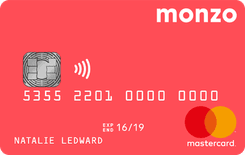
Monzo features
Monzo travel card pros and cons.
- Good selection of services available
- No foreign transaction fee to pay
- No Monzo ATM fee to pay
- Manage your card from your phone conveniently
- Deposits are FDIC protected
- You can't hold a foreign currency balance
- ATM operators might apply their own fees
How to apply for a Monzo card
Here’s how to apply for a Monzo account and order a travel card in the US:
Visit the Monzo website or download the app
Click Get Sign up and add your personal details
Check and confirm your mailing address and your card will be delivered in the mail
Netspend travel card
Netspend has a selection of prepaid debit cards you can use for spending securely in Iceland. While these cards don’t usually let you hold a balance in ISK, they’re popular with travelers as they’re not linked to your regular checking account. That increases security overseas - plus, Netspend offers virtual cards you can use to hide your physical card details from retailers if you want to.
The options with Netspend vary a lot depending on the card you pick. Usually you can top up digitally or in cash in USD and then spend overseas with a fixed foreign transaction fee applying every time you spend in a foreign currency. You’ll be able to view the terms and conditions of your specific card - including the fees - online, by entering the code you’ll find when your card is sent to you.

Netspend features
Netspend travel card pros and cons.
- Large selection of different card options depending on your needs
- Some cards have no overseas ATM fees
- Prepaid card which is secure to use overseas
- Manage your account in app
- Change from one card plan to another if you need to
- You may pay a monthly fee for your card
- Some cards have foreign transaction fees for all overseas use, which can be around 4%
- Selection of fees apply depending on the card you pick
How to apply for a Netspend card
Here’s how to apply for a Netspend account and order a travel card in the US:
Visit the Netspend website
Click Apply now
Complete the details, following the onscreen prompts
Get verified
Your card will arrive by mail - add a balance and activate it to get started
What is a travel money card?
A travel money card is a card you can use for secure and convenient payments and withdrawals overseas.
You can use a travel money card to tap and pay in stores and restaurants, with a wallet like Apple Pay, or to make ATM withdrawals so you'll always have a bit of cash in your pocket when you travel.
Although there are lots of different travel money cards on the market, all of which are unique, one similarity you'll spot is that the features and fees have always been optimised for international use. That might mean you get a better exchange rate compared to using your normal card overseas, or that you run into fewer fees for common international transactions like ATM withdrawals.
Travel money cards also offer distinct benefits when it comes to security. Your travel money card isn't linked to your United States Dollar everyday account, so even if you were unlucky and had your card stolen, your primary bank account remains secure.
Travel money vs prepaid card vs travel credit card
It's helpful to know that you'll be able to pick from several different types of travel cards, depending on your priorities and preferences. Travel cards commonly include:
- Travel debit cards
- Travel prepaid cards
- Travel credit cards
They all have distinct benefits when you head off to Iceland or elsewhere in the world, but they do work a bit differently.
Travel debit and prepaid cards are usually linked to an online account, and may come from specialist digital providers - like the Wise card. These cards are usually flexible and cheap to use. You'll be able to manage your account and card through an app or on the web.
Travel credit cards are different and may suit different customer needs. As with any other credit card, you may need to pay an annual fee or interest and penalties depending on how you manage your account - but you could also earn extra rewards when spending in a foreign currency, or travel benefits like free insurance for example. Generally using a travel credit card can be more expensive compared to a debit or prepaid card - but it does let you spread out the costs of your travel across several months if you'd like to and don't mind paying interest to do so.
What is a prepaid travel money card best for?
Let's take a look at the advantages of using a prepaid travel money card for travellers going to Iceland. While each travel card is a little different, you'll usually find some or all of the following benefits:
- Hold and exchange foreign currencies - allowing you to lock in exchange rates and set a travel budget before you leave
- Convenient for spending in person and through mobile wallets like Apple Pay, as well as for cash withdrawals
- You may find you get a better exchange rate compared to your bank - and you'll usually be able to avoid any foreign transaction fee, too
- Travel cards are secure as they're not linked to your everyday USD account - and because you can make ATM withdrawals when you need to, you can also avoid carrying too much cash at once
Overall, travel cards offer flexible and low cost ways to avoid bank foreign transaction and international ATM fees, while accessing decent exchange rates.
How to choose the best travel card for Iceland
We've picked out 5 great travel cards available in the US - but there are also more options available, which can make choosing a daunting task. Some things to consider when picking a travel card for Iceland include:
- What exchange rates does the card use? Choosing one with the mid-market rate or as close as possible to it is usually a smart plan
- What fees are unavoidable? For example, ATM charges or top up fees for your preferred top up methods
- Does the card support a good range of currencies? Getting a card which allows you to hold and spend in ISK can give you the most flexibility, but it's also a good idea to pick a card with lots of currency options, so you can use it again in future, too
- Are there any other charges? Check in particular for foreign transaction fees, local ATM withdrawal fees, inactivity fees and account close fees
Ultimately the right card for you will depend on your specific needs and preferences.
What makes a good travel card for Iceland
The best travel debit card for Iceland really depends on your personal preferences and how you like to manage your money.
Overall, it pays to look for a card which lets you minimise fees and access favourable exchange rates - ideally the mid-market rate. While currency exchange rates do change all the time, the mid-market rate is a good benchmark to use as it’s the one available to banks when trading on wholesale markets. Getting this rate, with transparent conversion fees, makes it easier to compare costs and see exactly what you’re paying when you spend in ISK.
Other features and benefits to look out for include low ATM withdrawal fees, complimentary travel insurance, airport lounge access or emergency cash if your card is stolen. It’s also important to look into the security features of any travel card you might pick for Iceland. Look for a card which uses 2 factor authentication when accessing the account app, which allows you to set instant transaction notifications, and which has easy ways to freeze, unfreeze and cancel your card with your phone.
For Iceland in particular, choosing a card which offers contactless payments and which is compatible with mobile wallets like Apple Pay could be a good plan. Card payments are extremely popular in Iceland - so having a card which lets you tap and pay easily can speed things up and make it more convenient during your trip.
Ways to pay in Iceland
Cash and card payments - including contactless, mobile wallet, debit, credit and prepaid card payments - are the most popular ways to pay globally.
In Iceland card payments are common in most situations. You’ll be able to make Chip and PIN or contactless payments or use your favourite mobile wallet like Apple Pay to tap and pay on the go. It’s still worth having a little cash on you just in case - and for the odd situations where cash is more convenient, such as when tipping or buying a small item in a market.
Which countries use ISK?
If you have ISK, you should be able to use it in a few countries. You may decide to keep your travel card topped up with a balance for this trip to Iceland or for the next time you’re headed somewhere which uses ISK.
What should you be aware of when travelling to Iceland
You’re sure to have a great time in Iceland - but whenever you’re travelling abroad it's worth putting in a little advance thought to make sure everything is organised and your trip goes smoothly. Here are a few things to think about:
1. Double check the latest entry requirements and visas - rules can change abruptly, so even if you’re been to Iceland before it’s worth looking up the most recent entry requirements so you don’t have any hassle on the border
2. Plan your currency exchange and payment methods - you can change USD to ISK before you travel to Iceland if you’d like to, but as card payments are common, and ATMs widely available, you can actually leave it until you arrive to get everything sorted as long as you have a travel money card. Top up your travel money card in USD and either exchange to ISK in advance or at the point of payment, and make ATM withdrawals whenever you need cash. Bear in mind that currency exchange at the airport will be expensive - so hold on until you reach Iceland to make an ATM withdrawal in ISK if you can.
3. Get clued up on any health or safety concerns - get travel insurance before you leave the US so you have peace of mind. It’s also worth reading up on any common scams or issues experienced by tourists. These tend to change over time, but may include things like rip off taxis or tour agents which don’t offer fair prices or adequate services.
Conclusion - Best travel cards for Iceland
Ultimately the best travel card for your trip to Iceland will depend on how you like to manage your money. Use this guide to get some insights into the most popular options out there, and to decide which may suit your specific needs.
How does a Icelandic Króna card work?
Getting a Icelandic Króna card can make managing your money easier when you travel to Iceland.
Your Icelandic Króna card will be linked to a digital account you can manage from your phone, so you'll always be able to see your balance, get transaction notifications and manage your card no matter where you are. Just add money to your account in pounds, and - depending on your preferences and the specific card you pick - you can either convert your balance to Icelandic Króna instantly, or just let the card do the conversion when you spend or make a withdrawal.
If your card gives you the option to hold a Icelandic Króna balance, there's not normally any extra fee to spend the Icelandic Króna you have in your account when you're in Iceland.
Can I withdraw Icelandic Króna currency with my card in Iceland?
With some cards, you'll be able to add money to your card in United States Dollar, and then convert to Icelandic Króna instantly online or in your card's app.
Once you have a balance in Icelandic Króna you can spend with your card with no extra fees - just tap and pay as you would at home. You'll also be able to make cash withdrawals whenever you need to, with no extra conversion fee to pay. Your card - or the ATM operator - may charge a withdrawal fee, but this can still be a cheap, secure and convenient option for getting cash when you need it.
With other cards, you can't hold a balance in Icelandic Króna on your card - but you can leave your money in United States Dollar and let the card convert your money for you when you spend and withdraw.
Some fees may apply here - including currency conversion or foreign transaction charges - so do compare a few different cards before you sign up, to make sure you're picking the one which best suits your specific spending needs.
Bear in mind though, that not all cards support all currencies - and the range of currencies available with any given card can change from time to time. If your card doesn't let you hold a balance in Icelandic Króna you might find that fees apply when you spend in Iceland, so it's well worth double checking your card's terms and conditions - and comparing the options available from other providers - before you travel, just in case.
Why should I get a Icelandic Króna card?
Getting a Icelandic Króna card means you can spend like a local when you're in Iceland. You'll be able to check your Icelandic Króna balance at a glance, add and convert money on the move, and use your card for secure spending and withdrawals whenever you need to. Best of all, Icelandic Króna cards from popular providers often offer good exchange rates and low, transparent fees, which can mean your money goes further when you're on a trip abroad.
FAQ - best travel cards for Iceland
When you use a travel money card you may find there’s an ATM withdrawal fee from your card issuer, and there may also be a cost applied by the ATM operator. Some of our travel cards - like the Wise and Revolut card options - have some no fee ATM withdrawals every month, which can help keep down costs.
Travel money cards may be debit, prepaid or credit cards. Which is best for you will depend on your personal preferences. Debit and prepaid cards are usually pretty cheap and secure to spend with, while credit cards may have higher fees but often come with extra perks like free travel insurance and extra reward points.
There’s no single best prepaid card for international use. Look out for one which supports a large range of currencies, with good exchange rates and low fees. This guide can help you compare some popular options, including Wise, Revolut and Monzo.
Yes, you can use your local debit card when you’re overseas. However, it’s common to find extra fees apply when spending in foreign currencies with a regular debit card. These can include foreign transaction fees and international ATM charges.
Usually having a selection of ways to pay - including a travel card, your credit or debit card, and some cash - is the best bet. That means that no matter what happens, you have an alternative payment method you can use conveniently.
Yes. Most travel debit cards have options to make ATM withdrawals. Check the fees that apply as card charges do vary a lot. Some cards have local and international fees on all withdrawals, while others like Wise and Revolut, let you make some no fee withdrawals monthly before a fee kicks in.
Both Visa and Mastercard are globally accepted. Look out for the logo on ATMs and payment terminals in Iceland.
The cards you see on this page are ordered as follows:
For card providers that publish their exchange rates on their website, we used their USD / ISK rate to calculate how much Icelandic Króna you would receive when exchanging / spending $4,000 USD. The card provider offering the most ISK is displayed at the top, the next highest below that, and so on.
The rates were collected at 09:36:26 GMT on 25 May 2024.
Below this we display card providers for which we could not verify their exchange rates. These are displayed in alphabetical order.
Send international money transfer
More travel card guides.
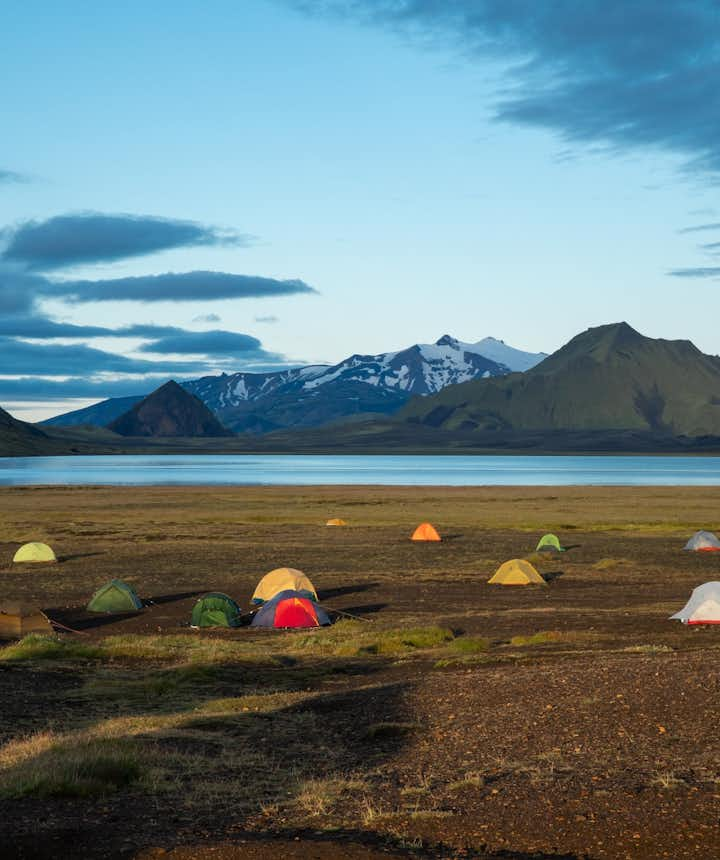
18 Tips on How to Save Money in Iceland

- 1. Buy Your Alcohol in the Duty-Free Store
- 2. Don't Shop in 10-11
- 3. Never Buy Bottled Water
- 4. Take Advantage of Happy Hours
- 5. Eat Out at Lunch Time - If You Must
- 6. Use the Public Wifi
- 7. Look to Swim in the Cheaper Pools
- 8. Hitchhike and Pick Up Hitchhikers
- 9. Avoid the Taxi Service
- 10. Always Book Well in Advance
- 11. Know Your Bank's "Service Charges"
- 12. Drink Free Coffee
- 13. Cook Your Own Food
- 14. Hike Around Reykjavík
- 15. Connect With Locals
- 16. Shop for Memorabilia in Thrift Shops
- 17. Go Camping
- 18. Use Equipment Rentals

Is it possible to have a cheap holiday in Iceland? How can hidden costs be avoided? Is everything in Iceland expensive? Read on for the best tips on how to save money in Iceland.
Ask anyone who has been to Iceland what it is like, and they will likely say two things: beautiful, and expensive. While the former is always true, the latter does not need to be.
Top Budget Self Drive Tours
Best 7-day northern lights self drive tour through south iceland to jokulsarlon ice cave, amazing 6-day northern lights winter self-drive tour on iceland's south coast with ice caving, 5-day northern lights winter self-drive tour with the golden circle & jokulsarlon glacier lagoon.
While food, drinks, products and services in Iceland and its capital city, Reykjavík , can be quite pricey when compared to a European standard, there are some easy tips and tricks you can apply to ensure your holiday is enjoyable, immersive, and budget-friendly.
- Discover how to save money in Iceland by reading How Expensive is Iceland?
- Learn how to steer away from the 9 Worst Tourist Traps in Iceland
1. Buy Your Alcohol in the Duty-Free Store

Alcohol prices are extremely high in Iceland, so the first thing you need to think about when you land in Keflavik Airport is to stock up in the duty-free store .
Each person traveling into the country has an alcohol allowance of 6 units which means that you can, for example, buy a bottle of spirits, a bottle of wine and a six-pack of beer before reaching your limit.
And don't worry, you won't have to knock it all back by yourself in a dark hotel room; consuming alcohol outside is allowed in Iceland so you are always free to drink your beer and wine in Reykjavík's parks when the weather is nice.
2. Don't Shop in 10-11

The most expensive grocery store in Iceland is 10-11 . Shopping there will add at least 50% to your grocery bill from as compared to the low price stores like Nettó , Bónus , and Krónan . Though they are convenient and plentiful, your wallet will thank you for putting in the effort to go to a more reasonably priced shop.
For locals, the first rule of shopping for groceries in Iceland is to never be enticed by the luminous green sign of a 10-11. Secondly, if you absolutely must to go to one, make sure it is during the day, as they jack the prices up of many products at night.
- See also: 10 best cheap things to do in Reykjavík
3. Never Buy Bottled Water

The best drink in Iceland runs free of charge from every faucet, which means that by buying bottled water you are falling victim to one of the worst tourist traps in Iceland .
The quality of Icelandic tap water is remarkable, and you can ask for free water practically everywhere. You should, therefore, never have to buy water in Iceland unless you are in dire need of a container to fill up for free for the remainder of your holiday. Just let the cold water run; it's the same water that is being bottled.
Not only will this ease your budget, but your environmental impact.
4. Take Advantage of Happy Hours
With some bars going as far as charging over €10 for a pint of their most basic draught, visiting Icelandic pubs can quite quickly eat away your holiday savings. You should, therefore, tread the local way of drinking during happy hours.
Many Icelandic bars and restaurants offer discounted beer and wine from as early as 15:00 to as late as 21:00 every day.
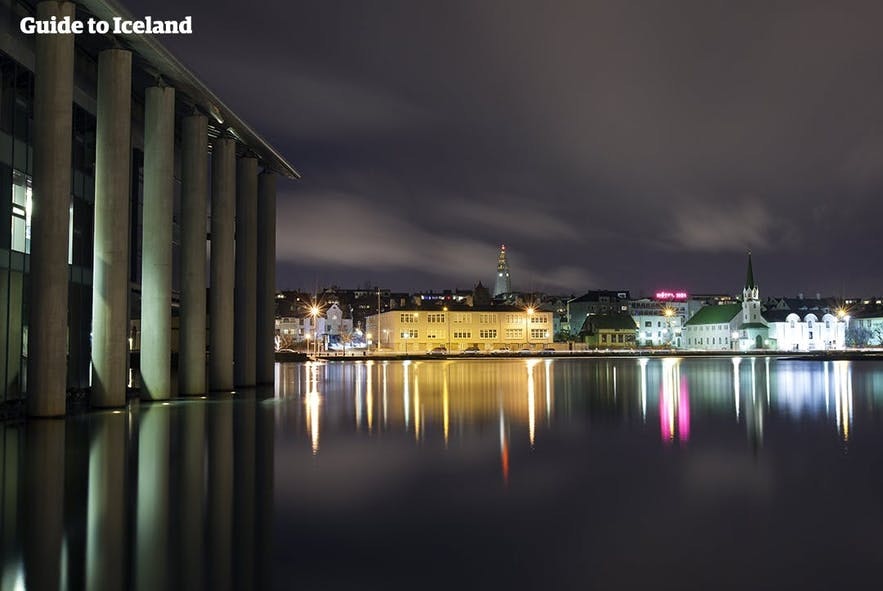
Should you have developed a habit that's spinning out of control, you can download an exclusive happy hour app that helps you coordinate during the worst spells and make the most of the precious binge time.
- See also Nightlife in Reykjavík and Happy Hour - the cheapest beer in Reykjavik
5. Eat Out at Lunch Time - If You Must
Eating out is one of the most uneconomical activities you can undertake in Iceland, and it is relatively easy to blow one’s entire travel budget solely on food by frequenting restaurants.
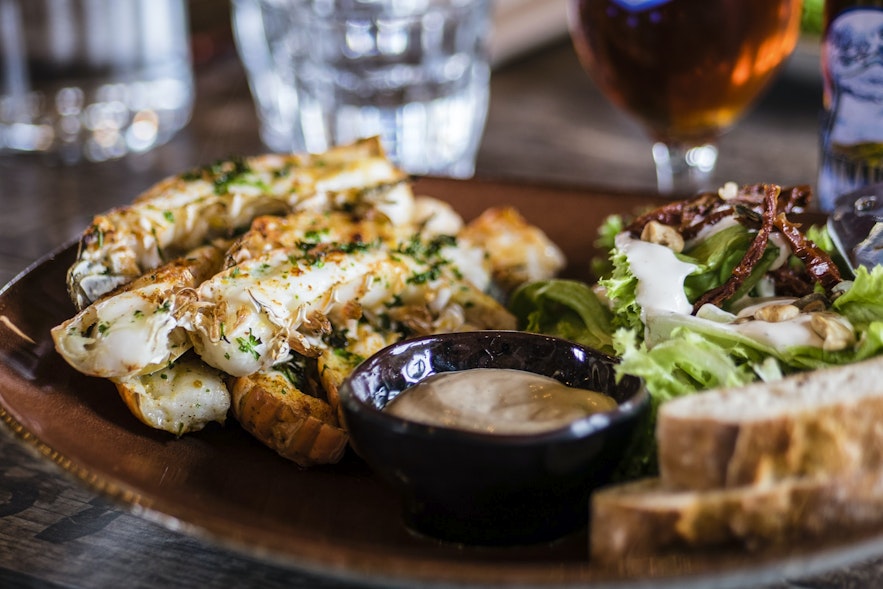
If you want to savour the Icelandic cuisine without having your wallet for dessert, you should eat out at lunchtime when the dish du jour is reasonably priced.
- See also: The Top 10 Best Value Places to Eat in Reykjavik
6. Use the Public Wifi
Don't let yourself fall victim to hidden charges and roaming fees. Free public wifi is available almost everywhere in Reykjavík and every shop, café, hotel, and restaurant will happily allow you to connect to their wifi without question.
- See also Top 10 best value places to eat in Reykjavík
7. Look to Swim in the Cheaper Pools

Conveniently placed right next to Keflavik International Airport is the Blue Lagoon , which virtually every single tourist who sets foot on Iceland visits at least once.
Although this is the perfect place to gather strength after a long flight and experience the volcanic energy of the Reykjanes Peninsula, the downside is that it's rather expensive.
If you are travelling on a budget, seeking tranquillity and authenticity, you should visit the Secret Lagoon in the small town of Flúðir instead, or simply go to one of the very moderately priced swimming pools found all over Reykjavík and the countryside. A notably cheap option that is fun for all the family is the largest pool in the city, Laugardalur .
- See also Swimming Pools in Iceland
8. Hitchhike and Pick Up Hitchhikers
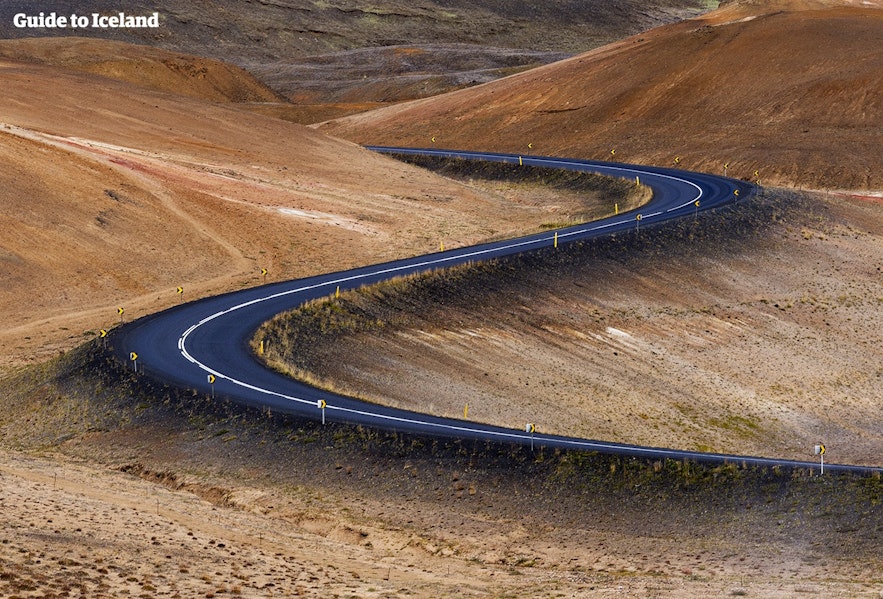
Iceland is a hitchhiker's paradise where you can usually summon a ride within minutes of waving the thumb. If you want to get out into nature on a shoestring budget, therefore, it is a convenient and safe way to get around. This, of course, should only be done in the bright summer.
During the winter there is less traffic, you will be exposed to all the harsh conditions for an unknown amount of time, you could easily get caught in the darkness of fog and not be seen, and it is not safe for cars to pull on the side of the road.
If you are driving around the country, you could also always pick up hitchhikers on the condition they chip in for gas.
- See also Tips for backpacking in Iceland
9. Avoid the Taxi Service
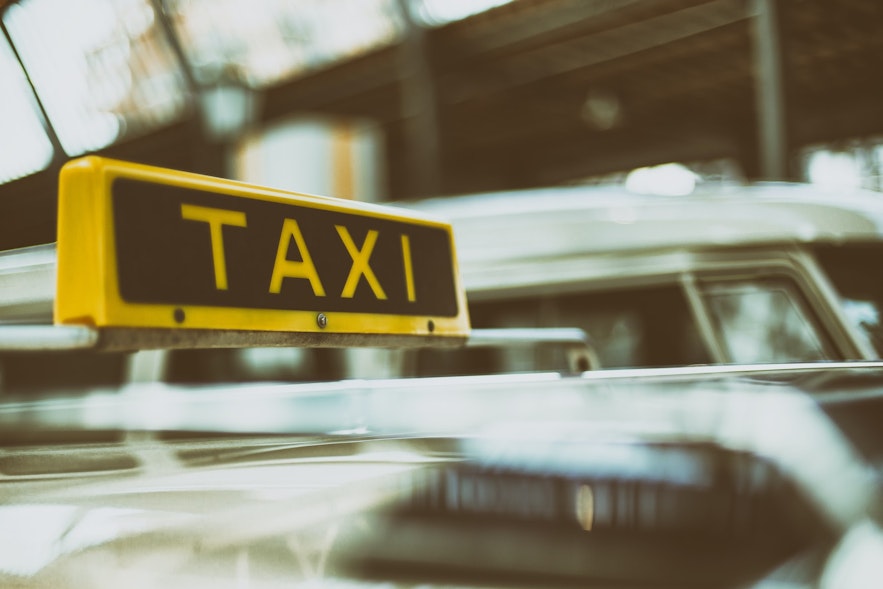
With taxi flag falls starting at around €5.10, you'll be remarkably quick to realise how easy it is to walk around Reykjavik.
A short drive from the Central Bus Station to downtown Reykjavík will cost around €15.50, while it would only take you 15-20 minutes to walk the same distance.
If you plan to travel far from central Reykjavik, you should use the city's affordable and dependable public bus system.
Of course, however, if you are a distance from your hotel, the weather is dreadful and the buses are irregular, remember that your health is more important than your budget.
10. Always Book Well in Advance
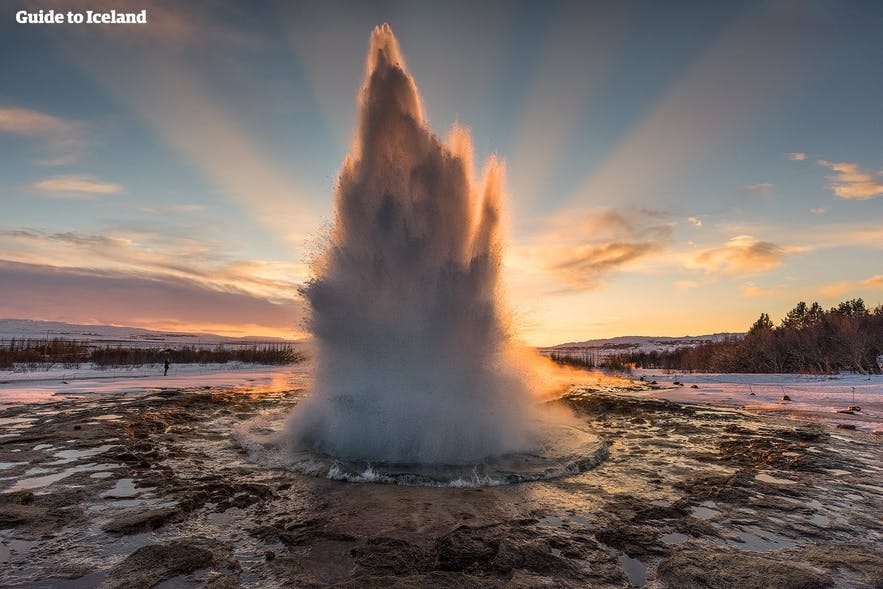
Always remember that flights, accommodation , rental cars , and tours are much cheaper if you book well in advance. Often guests who arrive on the day are surprised by the extra expenses that incur that they hadn't taken into account when budgeting.
- See also: Flights to Iceland - All you need to know
11. Know Your Bank's "Service Charges"
Much the same as a criminal network, your local bank's ultimate goal is to make money, and like a criminal network, your local bank uses a variety of plots and schemes to accomplish this goal.
One of the most common and simplest is called a "foreign transaction fee," which is what the mafia calls "Pizzo," and what the police calls "extortion."
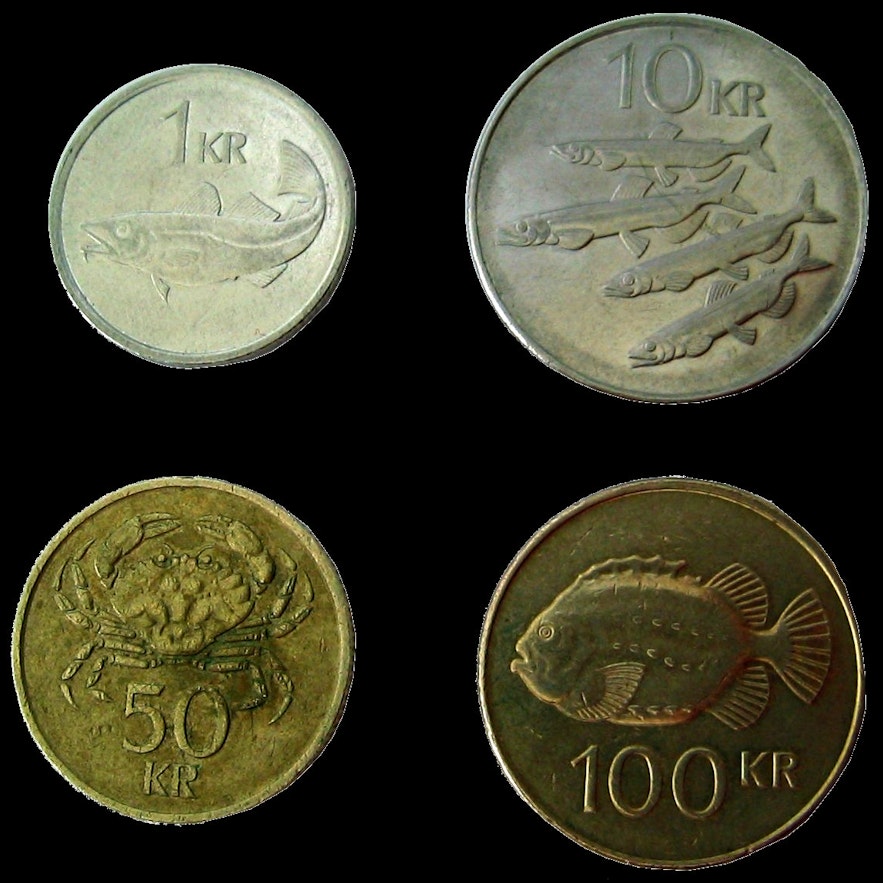
If you use your credit card to make a purchase in a foreign country, the bank will generally charge you a 3% conversion fee which, of course, means that for every $100 purchase, the bank sucks away an extra $3, under the official pretext that "there is a greater potential for fraud with international transactions, so it costs the banks money to protect the consumer."
To avoid your bank's protection rackets, you can either apply for special cards that don't charge for foreign transactions or simply travel with your cash in your pocket.
12. Drink Free Coffee
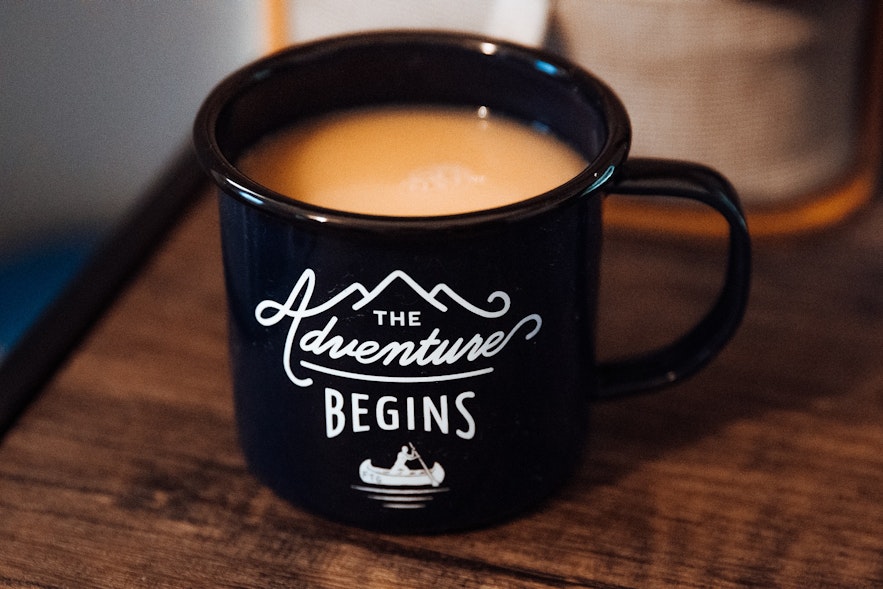
In most Icelandic banks, thermoses filled with hot free coffee are used to lure in future victims. If you are running an extremely tight ship, you should not shy away from helping yourself to a complimentary cup or two, every day for the duration of your holiday.
And if you mix it up by visiting numerous banks, you will definitely get away with drinking an obscene amount before ever being bothered by a single security guard.
This might not be enough to take down the entire system, but if you're methodical, diligent and brave, you might just go a long way towards winning back that foreign transaction extortion fee.
Note that while cafes are quite expensive in Iceland, when you pay for a cup of coffee at most, the price almost always includes a refill.
13. Cook Your Own Food

With Icelandic restaurant bills normally giving you that soul-wrenching feeling only a crooked auto mechanic can really replicate, you will do your sense of self-respect a favour by buying your own groceries and cooking your own food.
Make use of the kitchens found in all guesthouses, hostels and campsites in Iceland and your grocery bill for three days will be the price of a single meal in a mediocre restaurant.
You can also book accommodation in Iceland's countryside by booking a local's cabin or cottage, all of which come with a kitchen (and sometimes even your own personal hot tub). The website Bungalo lists Icelandic summer cabins, many of which are surprisingly cheap to rent.
14. Hike Around Reykjavík

If you're spending a few days in Reykjavík and have your mind set on experiencing an easy hike in the Icelandic wilderness, but do not have the means to invest in a guided tour, you should consider hiking Esjan , Reykjavík's mountain, or the geothermal valley of Reykjadalur instead.
The Mars-like Rauðhólar (red hills) are also easily accessible by bus, car or bicycle from the city centre. This 5200-year-old cluster of pseudo-craters is a part of Reykjavik's nature reserve Heiðmörk , a popular refuge where locals find peace and stillness in nature's embrace, only a short distance away from the crowded and bustling streets of the capital.
15. Connect With Locals
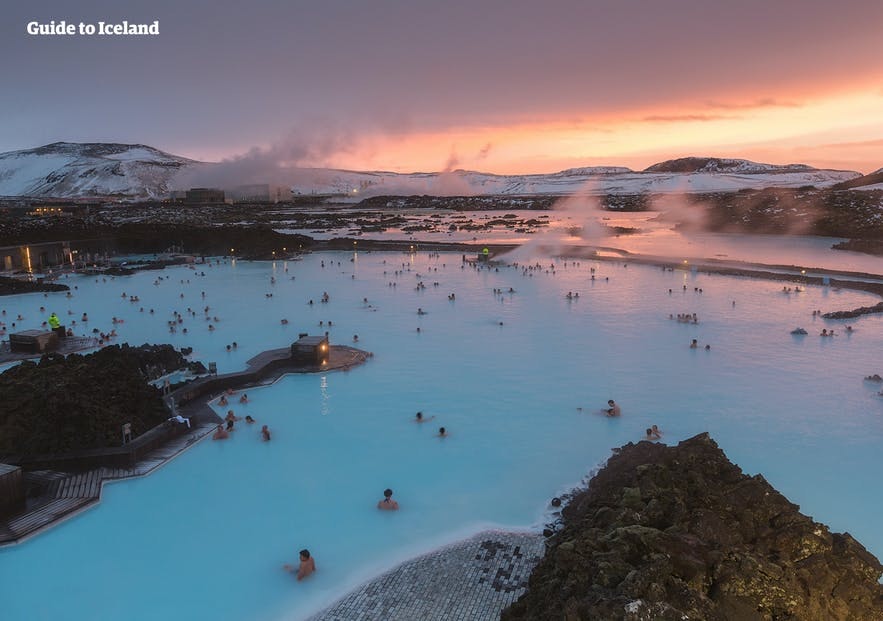
Most Icelanders are compassionate and hospitable people who take very kindly to visitors. According to a recent survey, conducted by the World Economic Forum , Iceland is not only the most peaceful country in the world but also the friendliest .
Helping strangers in dire need of assistance has long been Iceland's unofficial national sport, so if you really need some advice, feel free to ask; you will almost always be treated with kindness and respect. You can also plan ahead and connect with locals through our page.
16. Shop for Memorabilia in Thrift Shops
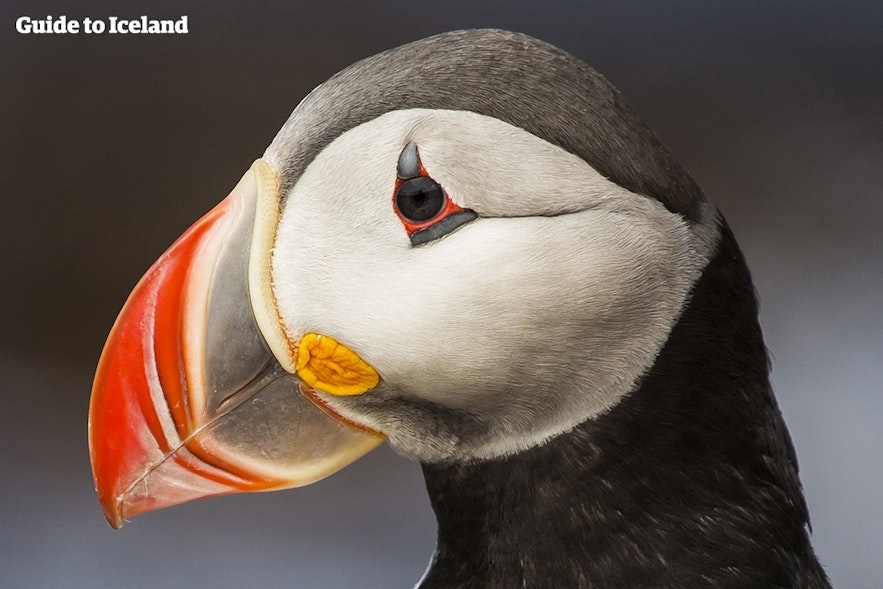
Sadly, the so-called "Puffin Shops" — souvenir boutiques which are only tailored to gullible tourists — have in the last few years become one of Reykjavík's distinguishing features.
In these overpriced dens of mass-produced sweatshop garbage from China, you will never find anything Icelandic, let alone memorable. Most of them made a huge trade in polar bear teddies, an animal that doesn't even live here.
Should you be looking for authentic, modestly priced Icelandic memorabilia, you would do well to visit the Kolaportið weekend flea market by the Old Harbour , or the Red Cross thrift shop on the Laugavegur shopping street.
17. Go Camping

There is no cheaper nor better way to spend a summer night in Iceland than in a tent. Camping is a sound way of establishing and preserving your fundamental connection with nature, and nothing in the world comes close to replicating the feeling of waking up to the soft and all-encompassing morning song of the Icelandic wilderness.
Since almost all Icelandic towns and villages run at least one campsite, you will always find a place to pitch your tent, wherever your adventures may take you.
- See also: Camping in Iceland
18. Use Equipment Rentals
Iceland's rugged landscapes and dynamic weather patterns are known to catch even the most seasoned travellers off guard and knowing how to pack for travel in Iceland will always be essential to ensuring the quality of your travel experience.
But although carrying a few indispensable items in your backpack might make the difference between a good and bad journey, there is no need to make a huge investment in camping equipment should you not already be in possession of the essentials a journey into the Icelandic wilderness demands.
Camping equipment rentals can supply you with everything you need—from hiking shoes and warm layers to tents and mattresses—and save you from spending a large portion of your travel savings on things you might not be using again. It will also save you money on flight baggage.
Popular articles

Guide to Iceland | The Story of the Leading Travel Agency of Iceland

The Complete Guide to the Midnight Sun in Iceland

Top 20 Most Beautiful Waterfalls in Iceland

22 Photos of the Aurora in Iceland

Mountains in Iceland
Other interesting articles.
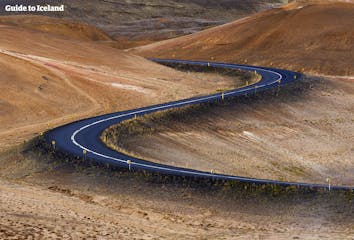
How to Drive Safely in Iceland
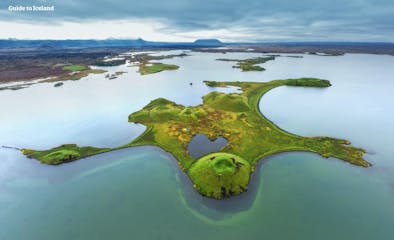
How to Travel Around Iceland Without a Car
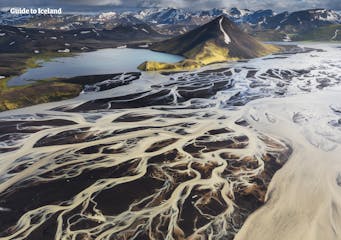
ATVs & Buggies in Iceland

Download Iceland’s biggest travel marketplace to your phone to manage your entire trip in one place
Scan this QR code with your phone camera and press the link that appears to add Iceland’s biggest travel marketplace into your pocket. Enter your phone number or email address to receive an SMS or email with the download link.
Top things to do in Iceland
Book your complete trip with the best companies only

Explore an Ice Cave

Find the Northern Lights

Go on a Road Trip

Do the Golden Circle

Visit the Blue Lagoon

See the Glacier Lagoon

South Coast Tours

Visit Reykjavík
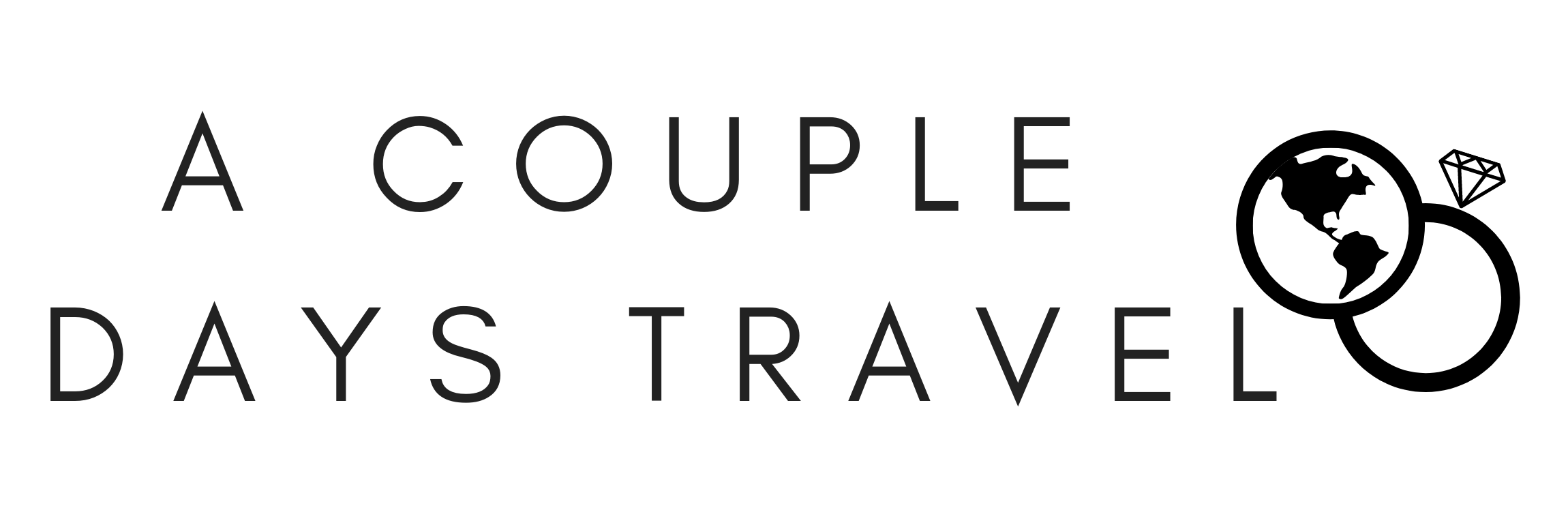
Iceland Budget and Ways to Save Money (Updated for 2024)
- Post last modified: November 25, 2023
- Post category: Iceland
So you want to visit Iceland? And why wouldn’t you. It’s a beautiful country that has a wide variety of things to do and see. And while you may have heard about all of the wonderful things to do in Iceland, you’ve probably also heard how expensive Iceland is. However, after all was said and done, our trip to Iceland was not nearly as expensive as we were expecting. In fact, it’s one of the cheapest vacation we’ve ever taken (per day). How is that possible? Well, it just proves that there is an Iceland budget for everyone! And we’re here to help you save money, plan your Iceland budget, and get you excited about the real possibility of an amazing trip to Iceland.
In addition to helping you plan your Iceland budget, we also want to give you tips for saving money on your trip. You can use one, you can use them all, you can use none. They’re there to help you fit your trip into your budget so you can make traveling to Iceland a real possibility. With a little creativity, the use of these tips, and lots of advanced planning you’ll be able to create an Iceland budget that is perfect for you.
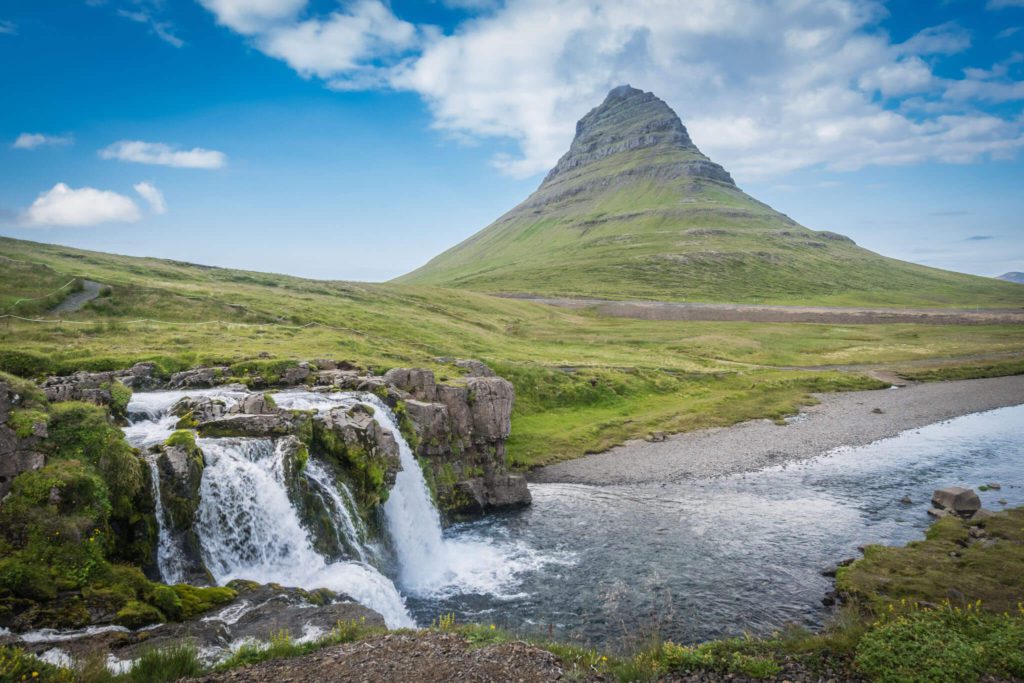
Stuff In This Post
How Much Will A Trip To Iceland Cost?
The average Iceland budget is $200 USD/day/person. This would be a mid-range vacation and is the type of trip we took and the exact amount of money we spent. If you were interested in a budget level trip, you can spend as little as $100/day (you could even spend less but that would take some hitchhiking and couch-surfing).
We spent just around $5300 USD for two people to visit Iceland for two weeks in 2021.
Things in Iceland are expensive. However, when you consider that it’s an island and most things have to be shipped there, combined with the fact that the cost of living in so high and therefore the cost of labor is high, the prices make a lot more sense.
When making your Iceland budget using the tips below, be practical and stay within your budget. If you feel like you can’t have the Icelandic vacation you want within the budget you set, wait, save your money, and get the trip your dreaming of. Sure our Icelandic vacation was a bit pricy, but we also felt like we saw everything we wanted to see and got the exact trip we wanted. We wish this for you too! We’ve heard so many people just going to Iceland for a few days because that’s what they can afford and then being disappointed because they didn’t get to do all the fun things they dreamt of.

Paying For Things in Iceland
The Icelandic currency is the Krona, abbreviated ISK. Almost all charges, including tour bookings that you make online, will be in ISK. So make sure you have a great credit card that doesn’t charge foreign transaction fees.
While everything in Iceland will be in Krona, we’ll refer to average prices below in US dollars so that you can know what you’ll need to save to set your Iceland budget. Our transportation prices also assume you’ll be traveling from the United States.
When you’re in Iceland, you’ll NEED to have a credit card. There are places in Iceland that do not accept cash. Overall, you can probably do without cash. There are only a few places that you may need cash and one of those places is public restrooms which sometimes charge a small cash fee to use.
For more of our Iceland articles, check out our posts here.

Iceland Budget For Transportation
You’ll need to include airfare and ground transportation into your Iceland budget.
First, a flight from the eastern portion of the USA will cost around $550/person.
Next, we think the best way to get around Iceland is by car on a self-drive road trip. You can forgo this cost, but you’ll end up spending more on activities because you’ll need to take a guided tour of everything. Iceland is not an easy country to get around without a car. Rental prices average around $79/day for a car.
Also, gas in Iceland is expensive. A liter of fuel costs between $2-3/L ($8-10/gal).
Tips For Saving Money In Iceland
You can take buses around Iceland. Check out the bus routes here . However, the stops are limited so your itinerary will need to be based around the bus schedule. It’s not the best way to travel if you have specific destinations in mind.
Hitchhiking in Iceland is very common. If you plan on hitchhiking, make sure to stick to the popular roads, like the Ring Road.
Avoid taxis! Taxi prices in Iceland are outrageous. Consider either tours or shuttles to get to popular destinations. Traveling as a group in these larger vans is less expensive than taxis for one or two people.
Many people assume you’ll need a 4×4 vehicle to drive around Iceland. However, to save on your Iceland budget, you can easily rent the tiniest, and therefore cheapest, car available if you’re visiting in the summer. You’ll need to stick to more well-kept roads but you’ll be able to travel the entire Ring Road with a tiny car. Additionally, your rental price will be less expensive AND your gas prices will be less as small cars generally get better gas milage.
If you can drive a stick shift, consider renting a manual transmission. The price saving isn’t a lot, but if you are doing a long trip, you can save around $12/day by renting a manual transmission rather than an automatic.

Iceland Budget For Accommodations
For a room for two people, you’ll pay around $190/night. This would be a mid-range accommodation. You can spend thousands of dollars for luxury hotels and tens of dollars for hostels.
Camping in Iceland can be beautiful. There are some amazing campsites, especially the ones that are right next to beautiful waterfalls (like Seljalandsfoss). Most campsites charge a camp fee which is normally under $20/night. They also typically charge a per person fee as well, generally between $5-15/person, which is mandatory and covers amenities at the site like toilets and showers.
Iceland also has a ton of hostels. You’ll find everything from traditional bunkhouse style hostels to private rooms in farmhouses turned hostels. A majority of these hostel style accommodations will save you money compared to a hotel or cabin rental. However, prices vary widely in range depending on the location in the country and the availability of other nearby accommodations.
Booking several months in advance can help you to save money as the cheap-but-nice places to stay are always the first to get booked. We booked our hotels 6 months ahead of travel.
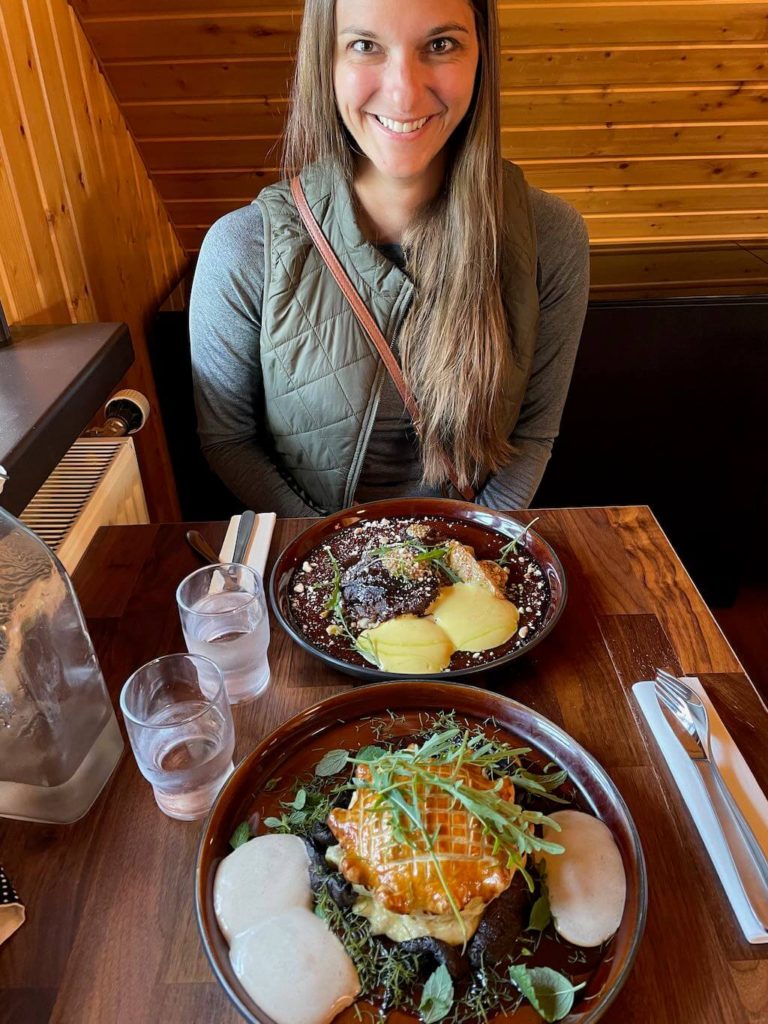
Iceland Budget For Food
Food in Iceland is expensive. As much as I would like to tell you there is a way around that there isn’t. If you eat out in Iceland expect to spend over twice as much as you would spend in the US. Breakfast can be reasonable. However, lunch and dinner costs between $25-100 USD/person.
However, this is one area that we recommend you splurge on. Because food in Iceland is a work of art! We visited hole-in-the-wall restaurants in Iceland where the chefs had their many culinary certificates hanging on the wall. And this pride in their work really showed in the food we ate. We routinely spent $100/person on dinners. We ordered sides of lobster tail. It was great! Some of the best food we’ve ever eaten was in Iceland.
You can eat at cheaper restaurants, but what we found is that you can pay $25/person for average food or $50-100/person for extraordinary food. We spent $50 on a pizza for two that we felt “meh” about. And we spend $150 for a 5 course meal at a rooftop restaurant. When we realized this we just decided to continue to splurge on meals because we felt like the “cheap” food wasn’t worth what we were paying for it but we felt like the “expensive” food was totally worth what we were paying for it in terms of quality.
Grocery stores in Iceland are only located in larger towns. So you’ll have to plan your grocery stops accordingly. We loved visiting Bonus. Food prices at Icelandic grocery stores are still more expensive than in the US, however, you can find budget options. For example, meat and fruit are very expensive. So we ate meatless lunches and bought cheap yogurt for breakfast instead of fruit. We also got some super cheap caviar one night! So groceries can be a good option as long as you’re willing to eat a little differently than you normally would. Also, keep in mind that Iceland has far fewer preservatives in their food. So things go bad much quicker. This meant that we had to stop at a grocery store every couple of days rather than stock up all at once.
Food at gas stations is also a budget friendly option. Gas station food in Iceland is like fast food in America. You’ll find hot dogs, burgers, and fried food. This is cheap by Iceland standards but you can still spend $20/person on food here.
To help keep that Iceland budget low, don’t plan on buying drinks of any kind. Coffee, water, and alcohol are all expensive and unnecessary. Make coffee in your hotel and drink water out of the tap. Water in Iceland is some of the best around! If you want to drink, buy alcohol at the grocery store and have a drink at your hotel. Non-alcoholic drinks out run around $5 and alcoholic drinks are around $15.
Want even more tips for saving money on food in Iceland? Check out our entire post here, complete with a meal plan.
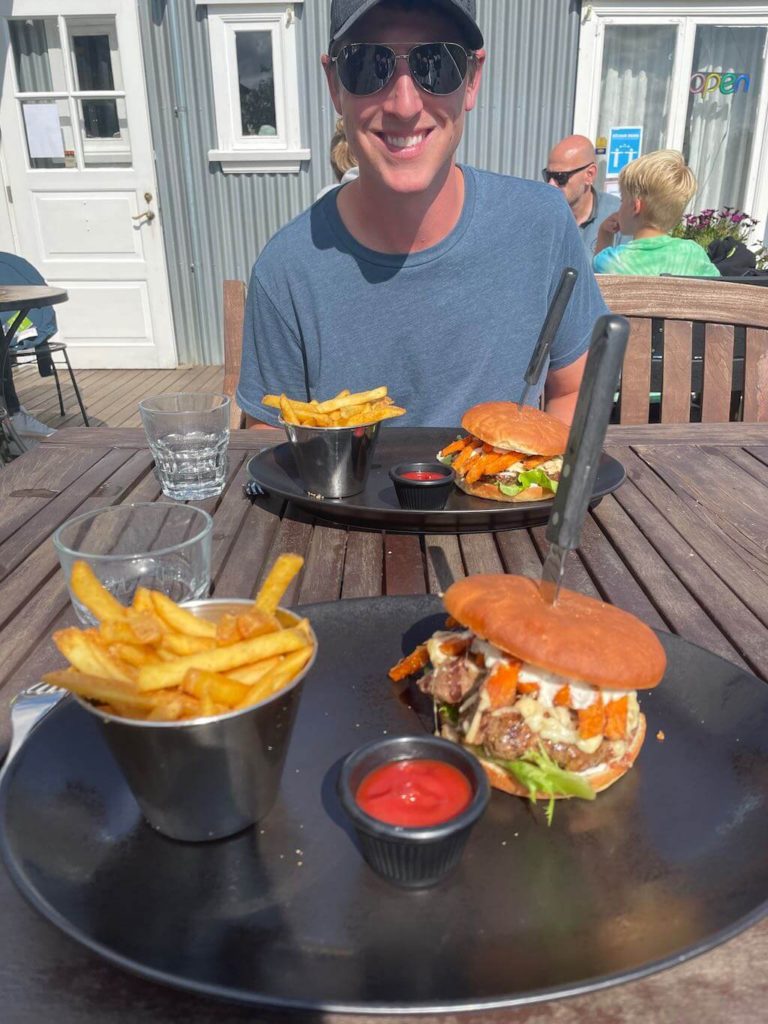
What We Spent on Food In Iceland
What we would suggest is just accepting that food is expensive and enjoy. However, you can save money by only splurging and eating out once a day. We saved tons of money by grocery shopping and making our own breakfasts and lunches.
Additionally, we saved room in our suitcase to bring snacks and food from home. We packed all of our breakfast cereal, peanut butter, jelly and granola bars so that we didn’t have to spend extra money on those things in Iceland. Plus then we had room in our suitcases for the plush Icelandic sweaters we brought home!
Below are a few things we packed that helped us pack and prepare food in Iceland.
By buying from the links below, we'll earn a small commission at no extra cost to you. Read the full Terms and Conditions here.
Having the option of cooking in your room may cost more in lodging but may save you money in food. However, we rarely had full kitchens and still were able to “cook” a ton of meals. Most hotels have coffee pots or electric tea kettles. This allowed us to boil water for tea, coffee and oatmeal, which we brought from home. We bought almond milk in small containers for cereal so that we didn’t have to have refrigerate milk. Additionally, we opted to pack peanut butter and jelly sandwiches each day so that we didn’t have to refrigerate or purchase lunch meat or veggies.
We also did meal planning to help us save money in Iceland . This meant that we planned when we would be eating out and when we would be cooking. This helped us to know what to pack for Iceland , and what we needed to buy at grocery stores. We stopped three times at grocery stores in our two weeks in Iceland . For breakfast and lunch we ate meals that we prepared and every dinner we ate out.
We spent $134 on Groceries and $910 on eating out.
For our full two week itinerary, check out all the details here.

Iceland Budget For Activities
Activities in Iceland are generally free! Or at most, you’ll need to pay for a small parking fee. It’s one of the best parts about traveling to this amazing country. Your Iceland budget can really shrink if you’re willing to travel independently. However, if you want to do guide tours, you’re likely to spend about $150/person/day for tours. We’ve included some tour versions of things we visited below if you’re interested.
The one tour we would absolutely recommend splurging on is a glacier tour. It was one of the most unique experiences and it was amazing.
Tips For Saving Money
The best tip for saving money on activities is to only do the free activities. Sure you could fill your days with Icelandic baths, glacier tours, and whale watching tours, all of which are great. But if you want to save money you can still have a great time in Iceland without having to spend over $10/day on activities.
There are several tours that you can do on your own for a fraction of the cost. So if you are considering doing a tour, price out how much it would cost to do it on your own. Chances are if you’re traveling as a duo or family, the self-drive option will be cheaper than the tour group. For solo travelers, the tour will probably end up being cheaper as it will mean you don’t have to rent a car.
Another suggestion is to stay out of Reykjavík. In cities, activities always come with a price tag. However, in the countryside you can come across an amazing waterfall on the side of the road that you can park at and hike to for free.
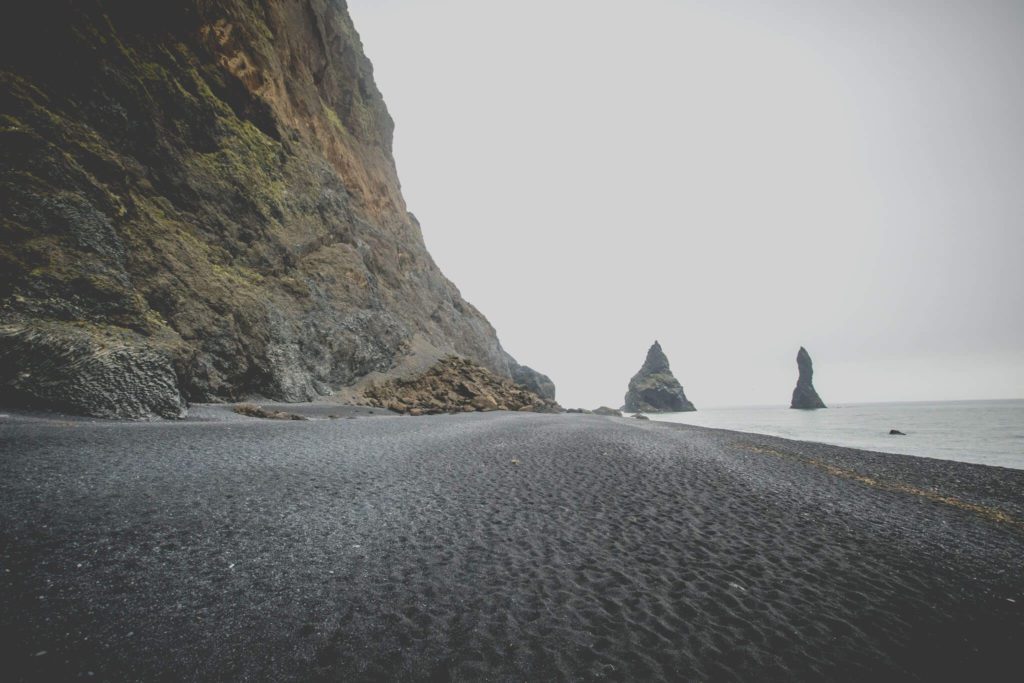
Our Actual 2021 Iceland budget – Adjusted For Visiting In July 2024
Below is our actual budget breakdown. This includes everything we spent money on; from the flight to Iceland to each day’s activities. I’ve looked at the July 2024 pricing for all of the exact same things. And here is what our 2024 Iceland budget would be if we re-did our exact 2021 Iceland vacation. I should also note that these prices were checked 6+ months out, which is how far out we booked our original trip.
Travel for two weeks in Iceland for a couple – $7550
- Flight – $800/person
- Transportation – $78/day
- Accommodation – $270/night
- Food – $45/day/person
- Activities – $32/day
Other Money Saving Tips For Your Iceland Budget
Book everything in advance. Surge pricing can be crazy in top tourist destinations, like Iceland, and the best deals are always the first to go.
Visit in the off-season – maybe. If trekking around in cold wet weather doesn’t bother you, consider visiting Iceland in the Fall-Spring when the weather gets colder and snow closes some popular attractions. We normally love traveling in the off-season. However, we wouldn’t recommend this for Iceland. Even in the summer, the weather is unpredictable. Plus, during peak tourist times the attractions in Iceland are so remote and spread out that we never felt like we were crowded. Also, lots of businesses close in the off-season due to a lack of business, so while the remaining business are likely to give an off-season discount, your options will be limited.
Finally, if you’re reading this you’re already doing our number one money saving tip for Iceland: preparing an Iceland budget. Do your research, know what things cost and know what you can (and can’t) afford. This will save you money and it will decrease your travel stress. If you have any questions or comments, we’d be happy to help if you leave them in the comments section below.
This Post Has 6 Comments
Could you kindly share your itinerary? It’s the length I’ve been considering but a bit unsure of stops.
Not a problem. All of our Iceland posts are here, including our two week itinerary, along with some shorter ones as well.
https://acoupledaystravel.com/the-ultimate-iceland-travel-guide/
Where did you stay in Iceland? Interested to visit Iceland in October 2023
We drove around the Ring Road. So we stayed somewhere different each night. This post here describes the locations where we stayed: https://acoupledaystravel.com/ring-road-trip/
We aren’t high-end travelers but like a good bed each night. And we had great stays throughout Iceland!
Thank you so much for going to all the trouble to write this up very helpful. Glenda Gold Coast Australia.
You are so welcome. I’m glad you found this helpful and I hope you enjoy your Iceland vacation. We sure enjoyed our Gold coast vacation, though it was warmer 😉
Leave a Reply Cancel reply
You might also like.

Jökulsárlón Lagoon and Fjallsárlón Lagoon: The Best Glacier Lagoon in Iceland

12 Spectacular Things to Do Along the Snaefellsnes Peninsula

A Great Guide to the Skaftafell Area of Vatnajökull National Park

How To Visit Iceland On a Budget (26 Ways To Save Lots of Money) – Episode 35

Traveling Iceland on a budget: This Iceland travel guide shares how to save money in Iceland, how to travel Iceland cheap , and cheap places to eat in Reykjavik .
While Iceland can be a pricey travel destination, after three epic trips to the “Land of Fire and Ice,” I’ve found plenty of creative ways to stretch my Iceland travel budget . If you’re interested in planning a trip to Iceland on a budget, there are plenty of ways to save money in Iceland. Here I share money-saving Iceland tips, including making the most out of happy hour specials in Reykjavík and how visiting off-season can save you money.
Listen to the podcast episode here:
Listen on Apple Podcasts | Google Podcasts | Spotify | Any podcast player
Also, check out my Iceland travel guide Iceland: Nature, Nurture, and Adventure (available on Amazon) for even more Iceland travel planning tips. From what to pack to things to do in Iceland, this travel guide shares how to plan an affordable, adventurous, and culturally enriching trip to Iceland. Written with Black women in mind, it encourages Black women and other People of Color to visit Iceland and experience Iceland’s natural wonders, unique food, and rich culture.
Iceland Money-Saving Tips To Experience Iceland On A Budget
Table of Contents
1. Travel during shoulder season
2. stay in the city center, 3. take airport shuttles instead of taxis, 4. free stopover , 5. rent a car, 6. get additional car rental insurance, 7. go cashless, 8. shop duty-free iceland, 9. pack for the season, 10. find ‘appy hour’, 11. bring reusable water bottles, 12. shop at supermarkets, 13. cook your own meals, 14. skip the tip, 15. get taxes back, 1. go on a free walking tour, 2. visit historical monuments, 3. spot street art and wall murals, 4. take a scenic walk around the lake, 5. sunset at solfar sun voyager, 6. walk around harpa concert hall, 1. swim at local swimming pools, 2. try all types of skyr flavors, 3. climb to the top of hallgrimskirkja church, 4. cheap food in iceland like bæjarins beztu pylsur, 5. discounted drinks at happy hour.
Iceland has a reputation of being an expensive travel destination. It’s generally considered to be one of the more expensive countries in Europe with the cost of living and travel expenses being notably higher.
If you’re wondering why is Iceland so expensive, here are a few factors that drive up the prices.
Situated far from mainland Europe, its remote location makes transportation costs, including flights and shipping, relatively high. Also, due to the harsh climate and volcanic terrain, Iceland has limited agriculture capacity, making importing food and other goods both necessary and expensive.
Lastly, everyone wants to go to Iceland. Have you seen photos and videos of Iceland’s stunning natural landscape?
Iceland is home to glaciers, volcanoes, caves, geothermal hot springs, waterfalls, and black sand beaches. An increase in tourism is driving up demand for accommodation, tours, car rentals, etc.
Despite the high costs, you can travel Iceland cheap, but you have to know what to look out for, and how to make the most of your Iceland travel budget.
Despite visiting Iceland three times, I’ve yet to visit in the summer because it’s significantly more expensive to visit during that time. For the most savings, consider visiting Iceland during the shoulder seasons of Spring (April to May) and Fall (September to October). During these times, you can still enjoy mild weather and fewer crowds. Accommodation and flight prices tend to be lower too.
While tempting to stay outside of the city center, this is not practical in Reykjavik. To save time, energy, and money, it’s best to stay in the city center, where everything is easy to get to on foot.
I also recommend booking your accommodation way in advance because rooms sell out quickly.
Lastly, instead of switching hotels as you explore Iceland, plan to stay at one centrally located hotel and plan day trips to the South Coast of Iceland , Golden Circle , and Snæfellsnes Peninsula .
Firstly, Uber and Lyft are not available in Iceland.
While there are taxi services, they are pricey and you will not know how much of a bill you’ve ran up until the end of the ride.
The most cost-effective and convenient way to get to/from the airport is via airport buses like Flybus Airport Transfer or Grayline Airport Express. For the most savings, book a reservation online ahead of time. They depart frequently.
Booking a bus costs a fraction of the price of a private transfer. You’ll get on one big bus which takes you to the local bus terminal where if you paid additional you’ll be taken to your hotel via a separate mini bus.

Did you know that you can fly to Iceland for free?
If you book any transatlantic flight with Icelandair, you can “stopover” in Iceland at no additional cost for up to seven days. This is a great way to save on airfare and check out multiple destinations.
When visiting Iceland, plan to venture outside of Reykjavík to explore the country’s natural beauty – waterfalls, caves, glaciers, volcanoes, and more.
Since there is no public transportation outside of Reykjavík, consider renting a car. If you are traveling with a friend or in a group, splitting the cost of a rental is a great way to save money in Iceland.
Alternatively, renting a campervan can provide cost-savings since you’re combining transportation and accommodation costs.
I recommend planning a day trip to the South Coast of Iceland to visit the black sand beaches of Vík and snorkel at Þingvellir National Park.
While it might seem like an extra expense, having comprehensive coverage can provide peace of mind and financial protection just in case you encounter rough terrain, icy roads, or the volcanic gravel rock cracks your windshield, which happens quite often.
Like most countries, Iceland is a card-friendly place. While there’s nothing wrong with paying with cash, most people in Iceland pay with either a debit card or credit card.
By going cashless, save money by avoiding fees at currency exchange kiosks and ATMs.
Use your credit card for all purchases and rack up those points and miles. Later redeem them for free flights, seat upgrades, hotel stays, and other travel perks. Just make sure that you’re using a credit card with no foreign transaction fees.
Lastly, pay off your credit card balance with your travel fund when you get home.
Read Next: How To Budget a Trip
Alcohol is expensive in Iceland. Since Iceland taxes alcohol based on the alcohol content, the stronger the spirit, the more it will cost. One way to save money on alcohol in Iceland is to buy drinks during happy hour, but I will share more later.
Another way to save money on alcohol in Iceland is to swing by Duty-Free Iceland before leaving the airport.
Duty-Free Iceland offers discounted prices on domestic and international spirits. This shop is only located at Keflavík International Airport.
One more thing, Duty-Free Iceland limits visitors to six units of alcohol. To figure out the specifics, check out this helpful alcohol allowance calculator .

The last thing you want to do is get to Iceland and have to purchase expensive clothing and gear because you forgot them at home. Welp, this happened to me on my first trip to Iceland!
I forgot my winter coat, and since it was so cold, I had to rush over to the mall and purchase a waterproof jacket for nearly $200 USD.
So do your research and pack appropriately for the weather which typically means layered clothing, warm sweaters, hats, gloves, thick socks, and comfortable walking shoes.
To help you find the best drink deals in Reykjavík, download Appy Hour , a mobile app that lists all the local happy hour specials happening throughout Reykjavík. Locations are listed based on proximity and price.
Another way to save money in Iceland is to bring your bottle and fill it up with tap water. For one thing, it’s free.
Secondly, water in Iceland is drinkable, and it is never chemically treated and naturally purified through molten rocks. You might be surprised to find out that bottled water in Iceland is a waste of money because it’s the same water from the tap.
Best water bottles for travelers:
- LifeStraw Go Water Filter Bottle
- CamelBak Chute Mag Water Bottle
Save money on food in Iceland by shopping for groceries at local grocery stores like Bónus and Krónan. Both stores carry a variety of snacks, drinks, and many other items you might need during your stay. Avoid grocery stores like 10/11 and Kvosin Supermarket, which are notoriously more expensive.
While experiencing Icelandic cuisine is important (and recommended), dining out for every meal can quickly add up. Balance dining out by preparing your own meals whenever possible which means staying at a hostel or guesthouse that offers a kitchen.
To save on food costs, opt to stay at a hotel which offers complimentary breakfast, make a simple pasta dish for lunch, or take advantage of discounted lunchtime specials. Grab dinner at a restaurant.
Do you tip in Iceland?
When you eat out in Iceland, skip the tip. Unlike most countries where tipping is the majority of the staff’s earnings, tipping isn’t customary here because the “service charge” found on the bill covers tipping.

Lastly, after a wonderful trip, Iceland allows visitors to get a portion of their taxes back. If you go shopping in Iceland, claim your tax-free refund at the airport before you head out. Since this process is involved, use this Iceland tax-refund guide .
Is Iceland expensive to visit? Want to plan the perfect trip to Iceland?
Check out my Iceland travel guide for travelers interested in planning an affordable and culturally enriching trip. Get practical advice on the best things to do, tips for renting a car, the best foods to try, and more!
Get the Iceland travel guide on Amazon.
Listen to the podcast episode on Spotify here:
Next read how Natasha visited Iceland on the cheap and saved thousands of dollars!
Saving Money in Iceland With Free Things To Do In Reykjavik
Despite Iceland’s high costs, there are lots of free things to do in Reykjavík and cheap things to do in Reykjavík too.
The free walking tour with CityWalk Reykjavik was one of the first things I did when I arrived in Reykjavík. This two-hour historic tour offers a great introduction to the capital city and Icelandic culture. The insightful guides are Icelandic history graduates and high school teachers. The tour was fun and engaging.
During the tour, visit the most historic parts of downtown Reykjavík including Arnarhóll and Fógetagarður Square.
At the end of the tour, set your own price. Tip what you feel the tour was worth – these guys deserve it. You can even tip in any currency you like which is super convenient!
Bonus Tip: CityWalk Reykjavik sends you a comprehensive city guide after your tour. Many of the suggestions include free things to do in Reykjavik on a budget.
Unless you’re touring Reykjavík with a knowledgeable local or historian, it’s easy to miss the less popular historical sights but Reykjavík is studded with all types of monuments that commemorate founders, leaders and important events in Iceland.
Here are a few of my favorites:
- Arnarholl Hill & Statue of Ingolfur Arnarson commemorates the first permanent Scandinavian settlers in Iceland.
- Statue of Leif Eriksson in front of the Hallgrimskirkja Church honors Leif Eriksson, the first European to explore the North Americas.
- Vikurgardur or Fógetagarður Square is now a public space but it was formerly the home of the old Reykjavík Church and the site of Reykjavík’s oldest cemetery.
For the complete list, check out the historic spots in Reykjavik that you probably don’t know about .

You can find street art all over Reykjavík, just look on the sides of the buildings. Each mural tells a story and makes a bold statement.

There are plenty of swans and ducks to admire at Tjörnin so bring your camera. When you’re done, head over to the Reykjavík City Hall. On the main floor, there is an impressive 3D topographic map of Iceland.
As you enjoy the cool breeze, marvel at the rainbows and a gorgeous view of snowy Mount Esja and snap photos with this iconic Icelandic landmark.
Right in the city center at the old harbor, visit the Harpa Concert Hall which holds concerts and shows throughout the year. This architectural masterpiece has a stunning glass facade that illuminates at night.
This is a good place to take a few photos and wander around. The free areas are limited and there are paid guided tours (4,900 ISK and it is free for 12 years and younger) that go over the design and what makes the building unique.
Cheap Things To Do in Reykjavik
Highly recommended by Eric (Eiríkur) from CityWalk Reykjavik, I skipped the Blue Lagoon and instead chose a more local bathing experience at Vesturbaejarlaug swimming pool. For more options, check out some of the other affordable swimming pools and hot springs in Iceland .
Less than a half an hour walk from the city center, at Vesturbaejarlaug, I enjoyed hot tubs and steam baths alongside locals for 900 ISK ($8 USD).
Before entering the pool I had to shower naked (in front of the other female patrons) but it was totally fine. No need to be shy. I did not feel uncomfortable in any way.
In fact, bathing at Vesturbaejarlaug was one of the most relaxing experiences I had in Iceland. Nevertheless, I have to warn you, be ready to run for your life when getting out of the water!
Along the waterfront, visit the Sun Voyager which pays homage to the first Icelanders. Although it looks like a Viking ship, it’s actually a dreamboat following the setting sun.
For more ideas on ways you can explore Iceland on the cheap , read how Natasha spent seven days in Iceland and spent only $100.
Not to be mistaken for yogurt, Skyr (pronounced skeer) is a dairy product made in Iceland. I loved the light and smooth texture. To save money, I suggest heading to the local grocery store instead of ordering Skyr at a restaurant.
Try unique flavors for 200 ISK ($2 USD).
Wondering how much other snacks and food costs in Iceland , here’s a full breakdown.

You can see the Hallgrimskirkja Church from just about anywhere in Reykjavík.
Admission to the church is free but for 900 ISK ($8 USD), climb to the top of the tower and see 360-degree views of Reykjavík, the harbor, and Mount Esja.

Operating since 1937, Baejarins Beztu Pylsur is a popular hot dog stand and one of the cheap places to eat in Reykjavik. Since food is very expensive in Iceland, these famous hot dogs are an affordable option.
Don’t let the long lines scare you, it moves quickly. Sorry, if you’re a vegetarian, you’re out of luck here.
Gas stations, bakeries, and food trucks are other great options for more affordable quick bites.
The Loft Hostel is a great place to meet locals, enjoy live music or take in awesome views of the neighborhood from the patio. They also have Icelandic and Scandinavian beers on tap. If you are into ciders, try the Somersby Cider.
Happy hour starts at 4 p.m. and ends at 8 p.m daily.
Although alcohol is expensive in Iceland, taking advantage of happy hour specials is a great way to experience Reykjavík on a budget.
Helpful Tip: Speaking of happy hour, download the Reykjavik Appy Hour app and discover all of the happy hour specials happening throughout Reykjavík in real-time. The app displays the establishment’s description, the happy hour duration and prices for drinks.
Looking for more ways to save money in Iceland? Listen to this episode for ideas on how you can do Iceland on a budget .
What are your favorite free things to do in Reykjavík?

Danielle Desir Corbett paid off $63,000 of student loan debt in 4 years, bought a house at 27, and has traveled to 27 countries, including her favorites, Iceland, China, and Bermuda. Go here to learn Danielle’s incredible story, from struggling financially and in debt to finding creative ways to earn more and live on her terms. Listen to The Thought Card Podcast , where Danielle shares how you can creatively travel more and build wealth regardless of your current financial situation. Reach out to Danielle by contacting: thethoughtcard (at) gmail (dot) com.
You might also like

Leave a Reply
Leave a reply cancel reply.
Your email address will not be published. Required fields are marked *

How to Save Money in Iceland
Let’s not mince words. Iceland is not cheap. But you have heard this already. However, this should not put you off from visiting the country. Iceland is vividly beautiful, so it is worth exploring the unspoiled nature and glaciers.
Go ahead and plan that trip. Just keep your wits about you, and plan your trip wisely. There are always ways to cut costs, assuming you don’t expect 5-star luxury all the way.
In Iceland, most of your money will go towards traveling, lodging, and if you’re not careful, food.
Can you save money with public transportation? Hardly. Public transport is non-existent in Iceland the moment you leave Reykjavik . If you aren’t planning on spending your entire holiday in the capital, you will need to add car rental costs to your budget. That is not necessarily cheap, but it is still more affordable than booking a tour. There are other ways to cut on cost though.
When Should You Go to Iceland?
If you're on a budget, go in the off-season when everything is cheaper. Iceland’s off-season for travel is between September and May.
If you plan on exploring Reykjavik, invest in the Reykjavik Card or the Voyager Card . This card grants you free access to over a dozen museums, as well as the use of any public transport facilities. This way you are saving money on gas expenses if you do have a rental car.
Book your car well in advance. The best deals can be found online, do not rely on the tourist center to do this for you. This will already cut the cost in half. Ideally, collect the car at Keflavik International Airport , since you will be going there anyway. It is about an hour's drive from Reykjavik. That way you save money on the Reykjavik airport shuttle to and from the airport as well. The longer you keep the car, the cheaper the day rates become. It might be cheaper to add a day to your rental even if you don't use it, and by doing so, get the better weekly rate.
Don’t forget to factor in the cost of gas. It is surprising how many travelers forget this vital piece of detail. Work out an estimated traveling distance, and base your calculations on that.
Eating in Iceland
Food in Iceland is not particularly cheap, so forget about eating out every night. You are planning a budget trip, after all. If you managed to book yourself a self-catering room with a kitchenette, buy your food at local grocery stores. Bonus and Kronan is one of the cheapest supermarkets in the country, with lots of daily deals and specials. Buy local greenhouse-grown fruits and veggies and meat like lamb and fish. Pretty much everything else is imported, making it much more expensive.
To satisfy fast food cravings, try one of those Iceland hot dogs. Made from lamb and pork, they are excellent and cheap. Hot dog stands are in abundance all over Reykjavik. You can also find some chain takeouts like Taco Bell and KFC.
Seek out Thai food restaurants if you want to dine out. There are many of these restaurants around the city, and they offer healthy and more affordable food.
Accommodation
Save money by carefully choosing your accommodation. Avoid large hotels and stay in small hotels or guest houses. They are a fraction of the price, and guest houses in Iceland are decent, offering the same quality as that of a 2 1/2 star hotel.
If you're open to an alternative and want to go all out, here's another idea. To save bucketfuls of money, why not consider camping? Assuming of course that you have the right gear to brave the weather. Camping here is highly recommended, and Iceland has some of the best facilities in Europe. Most campsites are also attached to youth hostels, so you can rent a room if the weather gets really bad. Hostels usually have free WiFi access as well, so you don’t need to make expensive phone calls to people back home.
VAT Rates in Iceland and Refund Information
April in Iceland: Weather, What to Pack, and What to See
The Complete Guide to Iceland Hot Spring Etiquette
Customs Regulations and Rules for Travelers Arriving in Iceland
All About the Icelandic Volcano Eyjafjallajokull
9 Icelandic Words Every Visitor Needs
Taking a Dog to Iceland
What Can You Expect From Toilets in Iceland?
Driving in Iceland
March in Iceland: Weather, What to Pack, and What to See
November in Iceland: Weather, What to Pack, and What to See
Thingvellir National Park: The Complete Guide
The Regions of Iceland
Complete Guide to Iceland's Ring Road
Baggage Policies on Icelandair
Iceland's Christmas Traditions
- Skip navigation
- Find a branch
- Help and support
Popular searches
- Track a parcel
- Travel money
- Travel insurance
- Drop and Go
Log into your account
- Credit cards
- International money transfer
- Junior ISAs
Travel and Insurance
- Car and van insurance
- Gadget insurance
- Home insurance
- Pet insurance
- Travel Money Card
- Parcels Online
For further information about the Horizon IT Scandal, please visit our corporate website
- Travel Money
- GBP to ISK exchange rate
Pounds GBP to Icelandic krona ISK exchange rate
Get currency for your trip to Iceland. Our best rates are online
Buy travel money
- UAE Dirham AED
- Australian Dollar AUD
- Barbados Dollar BBD
- Bangladesh Taka BDT
- Bulgarian Lev BGN
- Bahrain Dinar BHD
- Bermuda Dollar BMD
- Brunei Dollar BND
- Canadian Dollar CAD
- Swiss Franc CHF
- Chilean Peso CLP
- Chinese Yuan CNY
- Colombian Peso COP
- Costa Rican Colon CRC
- Czech Koruna CZK
- Danish Kroner DKK
- Dominican Peso DOP
- Fiji Dollar FJD
- Guatemalan Quetzal GTQ
- Hong Kong Dollar HKD
- Hungarian Forint HUF
- Indonesian Rupiah IDR
- Israeli Sheqel ILS
- Icelandic Krona ISK
- Jamaican Dollar JMD
- Jordanian Dinar JOD
- Japanese Yen JPY
- Kenyan Shilling KES
- Korean Won KRW
- Kuwaiti Dinar KWD
- Mauritius Rupee MUR
- Mexican Peso MXN
- Malaysian Ringgit MYR
- Norwegian Krone NOK
- New Zealand Dollar NZD
- Omani Rial OMR
- Peru Nuevo Sol PEN
- Philippino Peso PHP
- Polish Zloty PLN
- Romanian New Leu RON
- Saudi Riyal SAR
- Swedish Kronor SEK
- Singapore Dollar SGD
- Thai Baht THB
- Turkish Lira TRY
- Trinidad Tobago Dollar TTD
- Taiwan Dollar TWD
- US Dollar USD
- Uruguay Peso UYU
- Vietnamese Dong VND
- East Caribbean Dollar XCD
- French Polynesian Franc XPF
- South African Rand ZAR
- Qatar Riyal QAR
Delivery options, available branches and fees may vary by value and currency. Branch rates will differ from online rates. T&Cs apply
- Buy your Icelandic króna online at Post Office
- Check the GBP to Icelandic króna exchange rate for the best deal
- Choose in-branch collection or home delivery
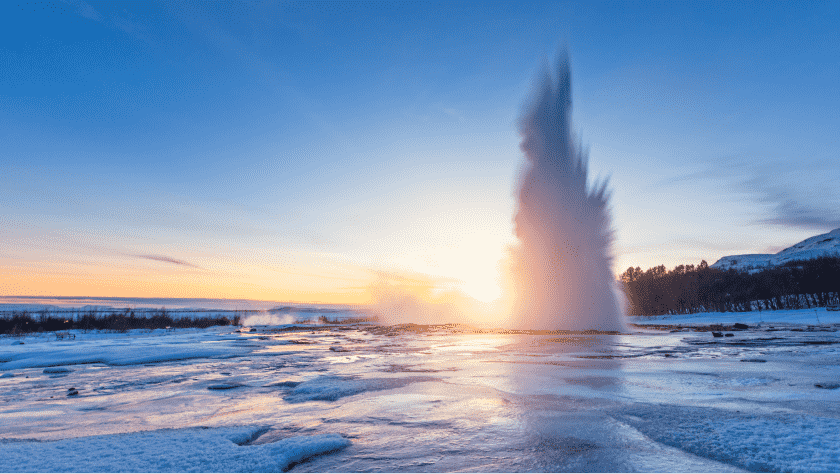
Iceland awaits. Let’s get your travel money sorted
Whether you're going for the glaciers or the volcanoes, the hot springs or the Northern Lights, there are few places with more spectacular scenery than Iceland.
Despite its name and lying just a few degrees south of the Arctic Circle, it has a surprisingly mild climate too. The warm waters of the Gulf Stream regulate its coastal weather and vary Iceland's average summer temperatures from around 5°C at night to as high as 25°C throughout the day.
You'll warm to the exchange rate we offer you for your Icelandic króna too. We offer our best rates online and if you order your Icelandic travel money now, it can be in your pocket the next working day.
Order Icelandic króna online and you'll get a better deal for your Reykjavik money.
The more Icelandic króna you order, the better your rate.
Buy your Icelandic króna from Post Office
Voted ‘Best Foreign Exchange/Travel Money Retailer’ at the British Travel Awards 2022
We offer 0% commission on over 60 currencies
Order online by 3pm and you can usually pick your currency up the next working day
Free home delivery on orders worth £500 to £2,500
We’ll buy back any unspent Icelandic króna notes when you’re home
The more you buy, the better the rates
And if your trip’s cancelled, we’ll refund you every penny of your currency within 28 days of purchase. T&Cs apply
Click and collect in branch
Get hold of your travel money fast. Pick up online orders from your nearest Post Office.
Home delivery
Want your cash delivered tomorrow? Order by 3pm today for delivery to your home.
How far does your Icelandic króna go?
Iceland is expensive for its citizens, not just visitors, so lots of homeowners in Reykjavik let their properties through Airbnb. While there’s a lot of availability, it may contribute to difficult housing situations for locals so it’s preferred visitors stay in formal accommodation like hotels and hostels or outside of the capital
Eating out is considered a treat by the locals. High prices apply to food cooked by someone else, whether that’s a takeaway pizza or a meal in a restaurant
Alcohol can only be bought (outside of bars) in state-run off-licences, which are open during office hours. You might need to plan to stock up before heading out
Items such as designer clothing are taxed highly and so can be very expensive – so don’t go to Iceland expecting to replenish your wardrobe
Renting a car is by far the cheapest way of getting around Iceland
Some common questions
Why visit iceland.
Iceland is one of the more popular destinations for UK travellers in recent years, and it’s not hard to see why. With its unique geothermal landscape, there are rafts of natural phenomena that travellers can’t see anywhere else on earth.
The whole country runs on geothermal energy and is, for many, the template of a country that functions well and offers something for everyone. With its rugged, otherworldly landscapes, bewitching culture of ‘hidden folk’, arts in every town and unique cuisine, travellers are guaranteed an experience like no other.
What is the Iceland króna?
The Icelandic króna is the official currency of Iceland.
The numeric value of króna is quite high, which can make mental arithmetic a little more challenging than, say, US dollars. But once you’ve got your head around it, it’s not too tricky.
Króna come in coins of 1, 5, 10, 50 and 100. The króna is nominally divided into aurar (cents) however these are no longer accepted tender. However, it is hugely unlikely you would see any.
Króna notes are 500, 1,000, 2,000, 5,000 and 10,000.
Where is the Icelandic króna used?
The Icelandic króna is only used in Iceland.
Where can I buy Icelandic króna?
It’s easy to buy Icelandic króna online using our click and collect service. Or, to buy travel money in-branch, use our branch finder tool to locate those that sell currency.
You can get our best exchange rates, and we can also deliver to your home, if you buy online. You’ll get a better rate the more you buy. And, if you buy at a good time for the pound, you can lock in that great rate.
With our travel money buy back service you can sell us any leftover notes you have. And we can refund your travel money at the rate you bought it if your trip’s cancelled for a reason beyond your control.
What are the best ways to pay in Iceland?
Iceland is an increasingly cash-free society and it’s common for locals and visitors to pay for everything using credit cards or debit cards.
But remember that paying for items using a credit or debit card abroad can come with charges, so if you want to keep costs down, it’s useful to research what charges your provider levies.
- Read all travel money FAQs
Related products, services and information
Popular currencies.
If you need other currencies for this trip or another you’re taking soon, we offer over 60. These may be of interest.
Post Office Travel Money Card is an electronic money product issued by First Rate Exchange Services Ltd pursuant to license by Mastercard International. First Rate Exchange Services Ltd, a company registered in England and Wales with number 4287490 whose registered office is Great West House, Great West Road, Brentford, TW8 9DF, (Financial Services Register No. 900412). Mastercard is a registered trademark, and the circles design is a trademark of Mastercard International Incorporated.

This Unexpected Type Of Shop Is One Of Iceland's Absolute Worst Tourist Traps
I celand is known for its stunning nature, and puffins are undoubtedly an important part of the scene. A trip to Vatnajökull National Park, the largest national park in Europe , offers a peek at the cold-weather birds, and numerous other puffin colonies can be found scattered around the country. This cute and feathered animal is worth looking out for during your trip to Iceland, but the same can't be said for the destination's puffin shops.
A puffin shop — known locally as a lundabúð — doesn't sell actual puffins, but you will find plenty of puffin memorabilia and other souvenirs. Think of these retailers as stores geared toward tourists, with keychains, fridge magnets, T-shirts, and snow globes. They're similar to the souvenir shops found in places like New York's Times Square and the 7th arrondissement of Paris.
The problem is the products sold aren't usually made locally and do little to represent authentic Icelandic culture. The European country boasts rich Nordic history and customs, with mythical folklore, a unique style of music, and an interesting take on seafood. Iceland is also home to rugged otherworldly landscapes and stunning outdoor baths, including the Blue Lagoon . The souvenirs displayed in puffin shops, mass-produced in foreign factories, have almost no connection to the true Icelandic experience.
Read more: 12 Most Underrated Travel Destinations Around The World
Alternatives To Iceland's Puffin Shops
Not every shop selling souvenirs and Iceland-themed goodies is a puffin shop. Puffin shops are most commonly found in downtown Reykjavík on streets frequented by tourists, and they tend to sell the same items. In other shops, you can find one-of-a-kind souvenirs and artistically made pieces produced right on the island.
Rammagerðin is one option that specializes in hand-crafted Icelandic products. Expect high-quality clothing, skincare, blankets, and other souvenirs with a local flair. Farmers and Friends is also perfect for Icelandic clothing and music, and Hrim is a must-visit for homewares designed by Icelanders.
Some of the best places to buy souvenirs are also the most unexpected. For instance, the Kolaportid flea market offers more than random crafts and discarded antiques; it might just be the place where you discover a local treasure or a vintage Icelandic sweater. Bónus, Iceland's grocery chain, is also worth a stop for local candies and cooking ingredients, and the liquor store Vínbúðin is where to go if you want Icelandic spirits.
Authentic Icelandic Souvenirs That Are Actually Worth Your Money
Iceland isn't considered among the most budget-friendly destinations to visit . However, many Icelandic goods can be worth your money, even if they tend to be a little pricier than the plastic trinkets found in puffin shops. For the most bang for your buck, consider grabbing a traditional Icelandic sweater, or a "lopapeysa." These can be purchased at the Handknitting Association of Iceland and cost between 32,000 and 38,000 Icelandic króna (about 230 to 280 U.S. dollars). Even if the price seems steep, the wool fabric is warm and durable, so just one will last you countless winters.
As mentioned before, there are also local shops and markets in Iceland that sell ornaments, home goods, and other items that have been made in the country. Even if these products can be more expensive than the ones at puffin shops, they're less likely to break or become worn out over time. Plus, you can take pride knowing your souvenir is unique to you and your taste, instead of being the same ol' snow globe collecting dust on thousands of travelers' shelves.
If your travel budget is running thin, no worries: Grab some signature Icelandic food items. They might not last as long as a lopapeysa or painting by an Icelandic artist, but they'll save you some money in comparison. Look for licorice, chocolates, sea salt, and dried fish snacks produced within the country.
Read the original article on Explore .

Bot Protection Firewall
Blocked because of Malicious Activities
Reference ID: 1566202266c04e14b5a2c

IMAGES
COMMENTS
If you are purchasing a lot of souvenirs, this money adds up quickly. Save your receipts and don't forget to get a tax-free proof of purchase so you can receive some extra Icelandic currency upon your departure. #6. You Will Need A Card With A Pin Or Cash In Order To Get Gas In Iceland.
In Practical Advice March 13, 2024. When planning a trip to Iceland, understanding the local currency and how to manage your finances during your stay is crucial. The Icelandic króna (ISK), denoted as "kr", serves as the backbone of financial transactions in this stunning country. With its unique value and usage, navigating Iceland's ...
The official currency of Iceland, the Icelandic krona, can be written as ISK or with the currency symbol kr. Króna is the singular form of the currency, while krónur is its plural form. The Icelandic krona comes in both coins and bills or banknotes. The coins come in five denominations of 1, 5, 10, 50, and 100 kronur.
The machines in Iceland almost always have a chip reader so that's the most common way to pay. Insert the chip, type in the PIN, and then pay for the transaction. Voila! If you don't have the pin, then of course you'll swipe your credit card and that's how the transaction is completed. If your card doesn't have a chip, then you can ...
Notes & coins in Iceland. The official currency of Iceland is the Icelandic króna (ISK), often seen as " kr ". There are banknotes to the value of 500, 1000, 2000, 5000 and 10000 ISK, and coins worth 1, 5, 10, 50 and 100 coins.
Using prepaid travel cards. There are a few travel cards which allow you to load, withdraw or spend króna - one of them being WeSwap. Tip: If you are able to use a prepaid travel card for a purchase and you're asked whether you want to pay in sterling or króna, always pay in the local currency. You'll lose out on the exchange rate ...
March 5, 2024. Since 1885, Iceland has had its own currency, called the Icelandic króna (ISK). It's had its ups and downs and is heavily debated at times, with some people rallying to swap it out for the Euro and others singing the praises of it. Nothing much has come from these wrangles, though, so for the foreseeable future, the Icelandic ...
Banknotes of denomination are circulating in circulation 10, 50, 100, 500, 1000, 2000 and 5000 crowns, as well as coins in denominations of 1, 5, 10, 50 and 100 crowns. In Iceland, only the Icelandic krona is accepted for payment. Alternatively, take euros/dollars with you and change them at a bank in Iceland. But!
A gallon of fuel would be 1,268 ISK (USD $11.52). Public Transportation - A one-way regular adult bus ticket in Reykjavík costs 480 ISK (USD $3.72), but you can save money with a bus pass if taking the bus a number of times. In Akureyri, the local city buses are free.
Euros in Iceland. Canadian dollars in Iceland. Although the Icelandic króna is the best currency to use and other tourist currencies can be easily exchanged, exchanging currencies in the form of cash almost invariably leads to poor exchange rates for tourists (we've seen as high as 20% commissions, although the average is between 5% and 15% of ...
Cards are accepted at most retailers, including small kiosks and market stalls, and at gas station pumps, parking meters, swimming pools, and elsewhere. You'll sometimes be asked if you prefer to pay in Icelandic krónur or your home currency. It's almost always cheaper to pay in Icelandic krónur, as the exchange will be made by your bank ...
2. Bring a Water Bottle. The tap water in Iceland is incredibly clean and safe to drink. Single-use plastic bottles of water add up fast, making this a no-brainer: bring a reusable water bottle with you and refill from the tap. It will save you a lot of money and help the environment.
A two-week long road-trip in Iceland, during which I was travelling on a mid-range budget as part of a couple and moving almost every day, came to the following: Accommodation: $189 per day for two people ( $94.50 each) Transportation: $46 per day for two people ( $23 each) Food: $51 per day. Activities: $29 per day.
The Reykjavik City Card is an easy way to save money in Iceland if you intend on spending a full day (s) in Reykjavik. Making the most of your city card will take some planning, but it's worth it for the money saved. You'll have the option of purchasing a 24, 48, or 72-hour card ranging in price from roughly $30-$50.
5 best travel money cards for Iceland: Let's kick off our roundup of the best travel cards for Iceland with a head to head comparison on important features. Here's an overview of the providers we've picked to look at, for customers looking for ways to spend conveniently overseas when travelling from the US:
There are four main money denominations in Iceland and they are 10.000 ISK bill (ten thousand krónur), 5.000 ISK bill (five thousand krónur), 1.000 ISK bill (one thousand krónur) and 500 ISK bill (500 hundred krónur). In coins, there are 100 ISK coins, a 50 ISK coin, 10 ISK coin, a 5 ISK coin, and a 1 ISK coin.
Icelandic Money. The unit of currency used in Iceland is the Icelandic krona, ISK - Íslensk króna in Icelandic. Króna means crown. The Icelandic word in the singular, "króna", becomes " krónur" in plural. The international currency abbreviation is ISK, but in Iceland you will see "kr." before or after the price of things.
39 Practical Iceland budget tips Saving money on your trip to Iceland will make you feel bliss… like Ben standing at the foot of a misty waterfall. While this country is notoriously expensive, we are proof that you absolutely can travel to Iceland on a budget. A very tight budget, in fact.
8. Hitchhike and Pick Up Hitchhikers. Iceland is a hitchhiker's paradise where you can usually summon a ride within minutes of waving the thumb. If you want to get out into nature on a shoestring budget, therefore, it is a convenient and safe way to get around. This, of course, should only be done in the bright summer.
And here is what our 2024 Iceland budget would be if we re-did our exact 2021 Iceland vacation. I should also note that these prices were checked 6+ months out, which is how far out we booked our original trip. Travel for two weeks in Iceland for a couple - $7550. Flight - $800/person. Transportation - $78/day.
Iceland Money-Saving Tips To Experience Iceland On A Budget. Table of Contents [ hide] Iceland Money-Saving Tips To Experience Iceland On A Budget. 1. Travel during shoulder season. 2. Stay in the city center. 3. Take airport shuttles instead of taxis.
This will already cut the cost in half. Ideally, collect the car at Keflavik International Airport, since you will be going there anyway. It is about an hour's drive from Reykjavik. That way you save money on the Reykjavik airport shuttle to and from the airport as well. The longer you keep the car, the cheaper the day rates become.
Iceland awaits. Let's get your travel money sorted. Whether you're going for the glaciers or the volcanoes, the hot springs or the Northern Lights, there are few places with more spectacular scenery than Iceland. Despite its name and lying just a few degrees south of the Arctic Circle, it has a surprisingly mild climate too. The warm waters ...
Use Public Transportation to Save Money in Iceland. Exploring Iceland on a budget becomes more manageable when you take advantage of the country's efficient public transportation system. Renting a car can be costly, with expenses for fuel, insurance, and rental fees quickly adding up. Instead, consider using buses for your travel needs.
Iceland isn't considered among the most budget-friendly destinations to visit. However, many Icelandic goods can be worth your money, even if they tend to be a little pricier than the plastic ...
Iceland is an air travel gateway to Europe, but an increasing number of tourists are choosing to spend time in the island nation. Iceland saw 1.7 million visitors in 2022. The country has become ...